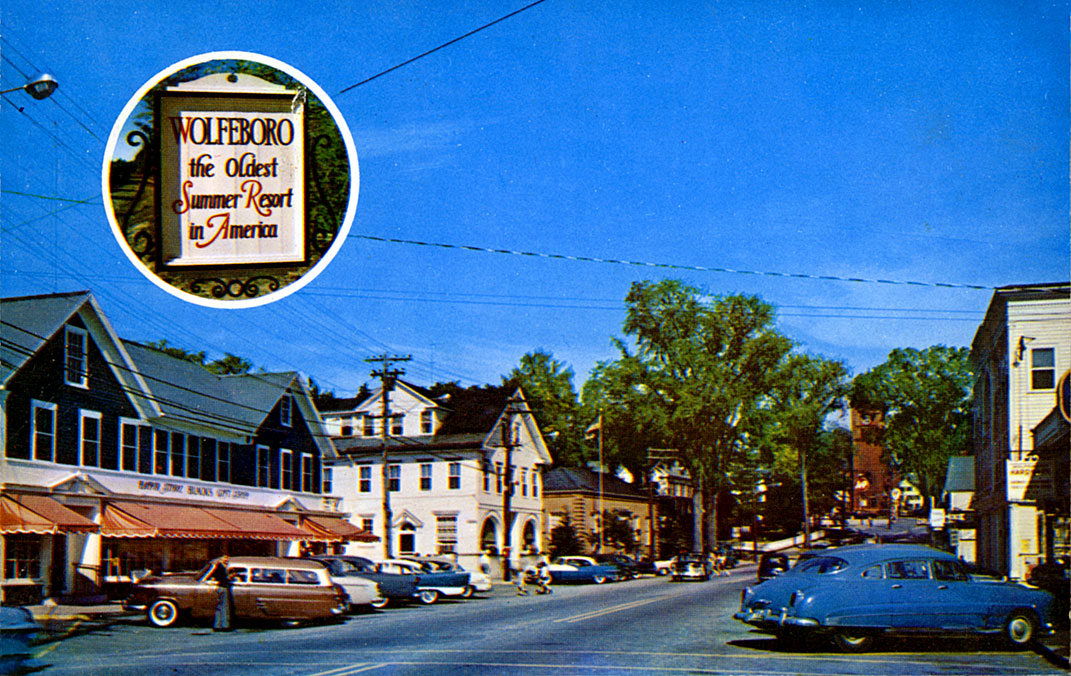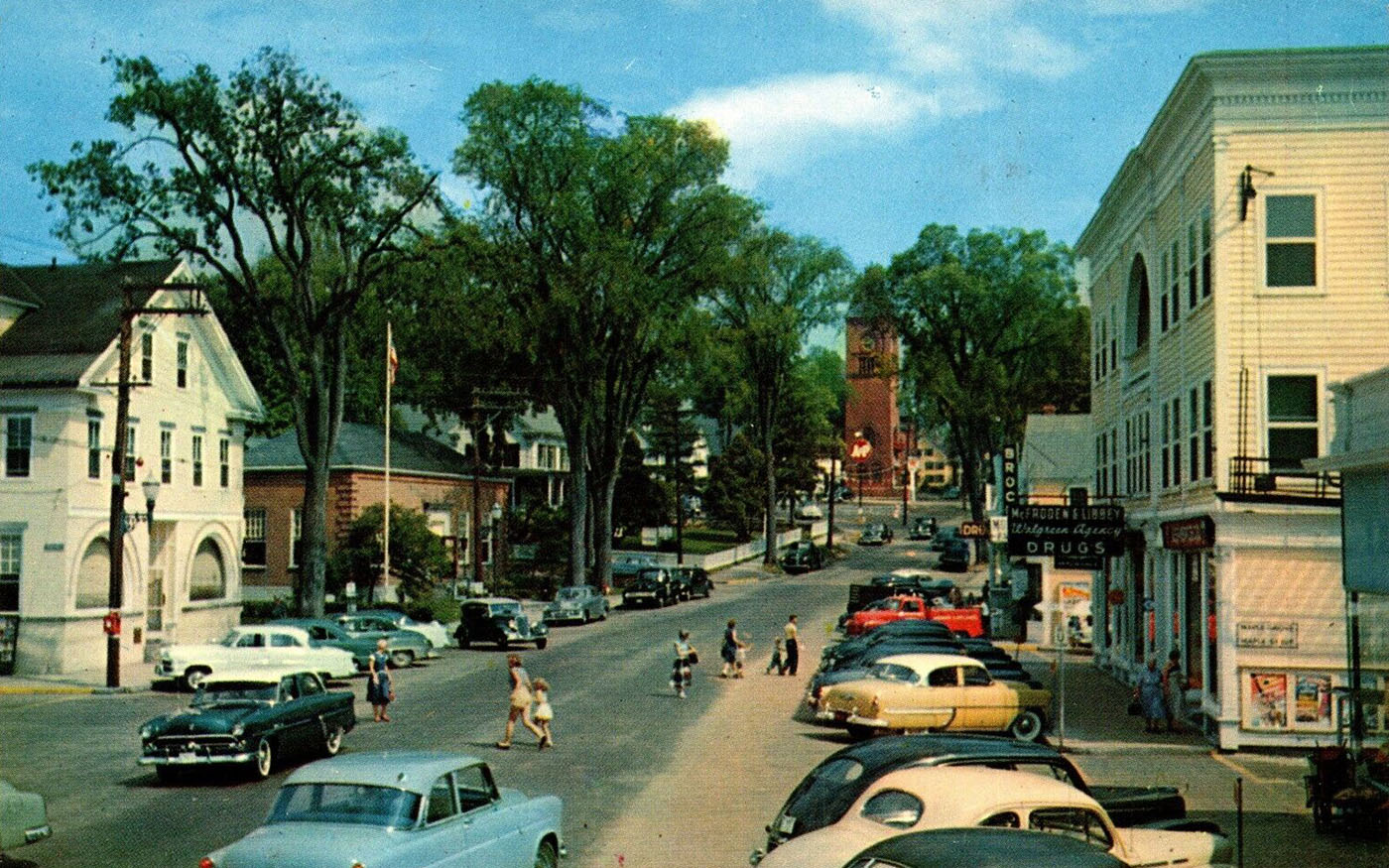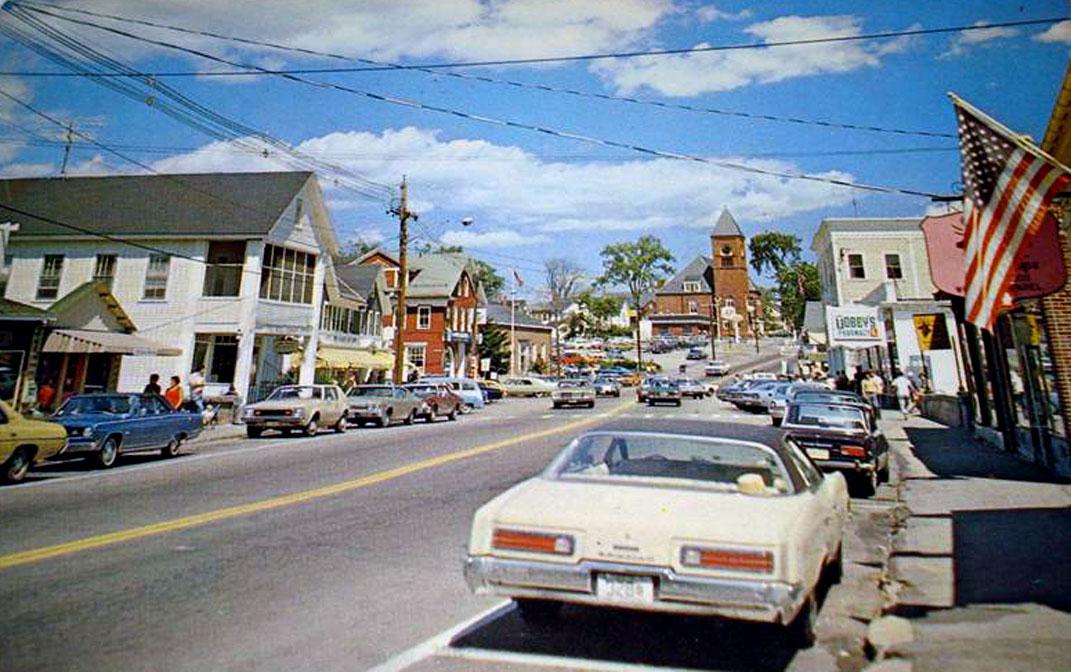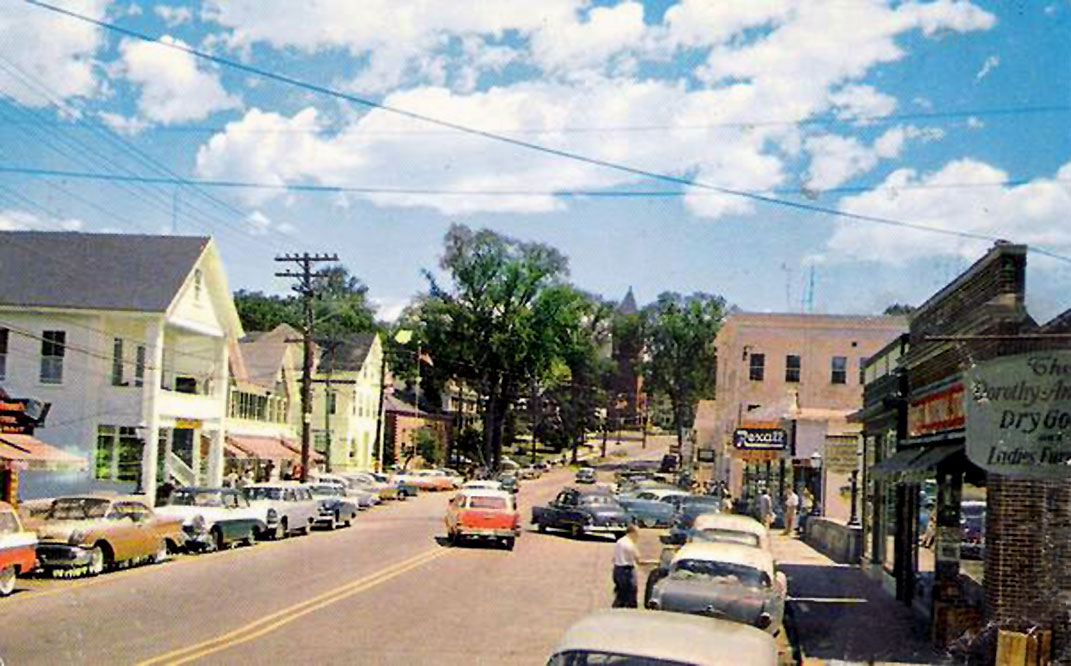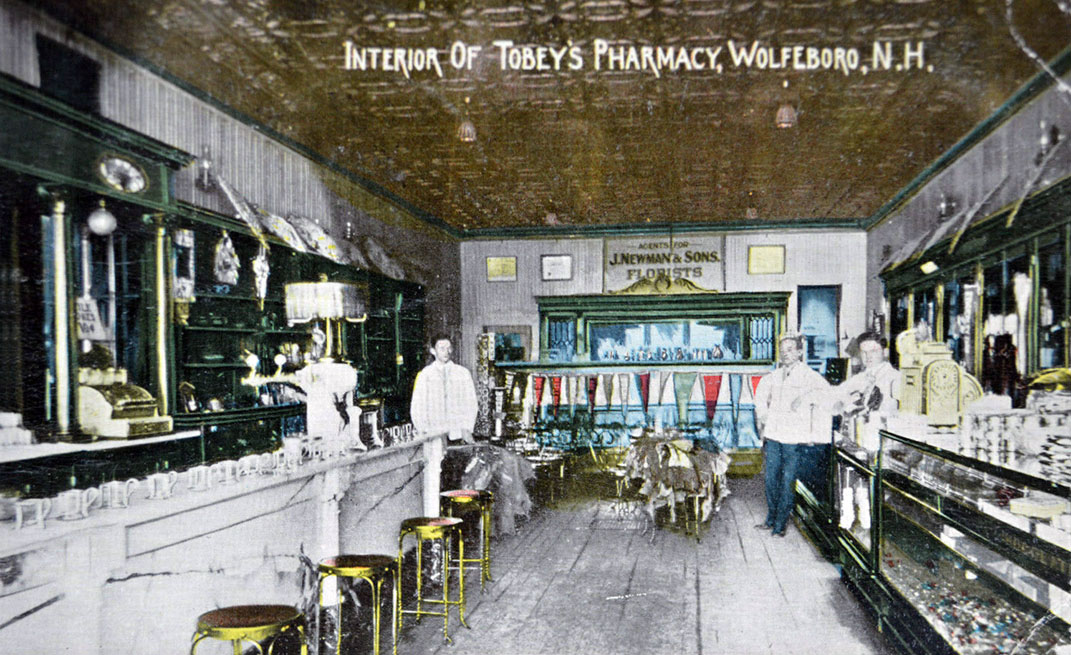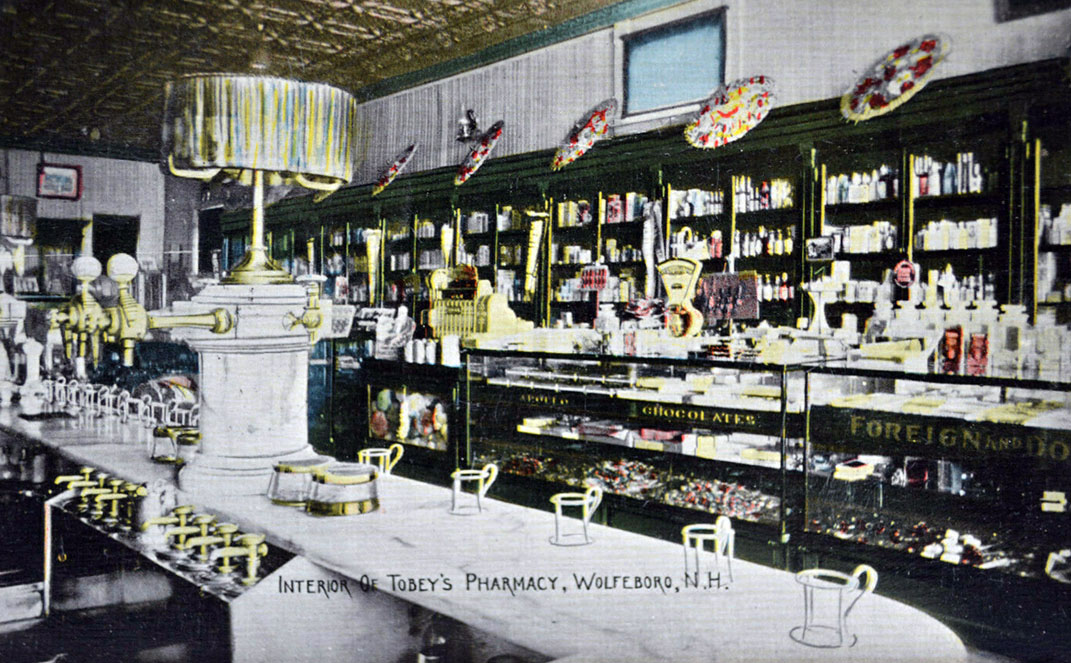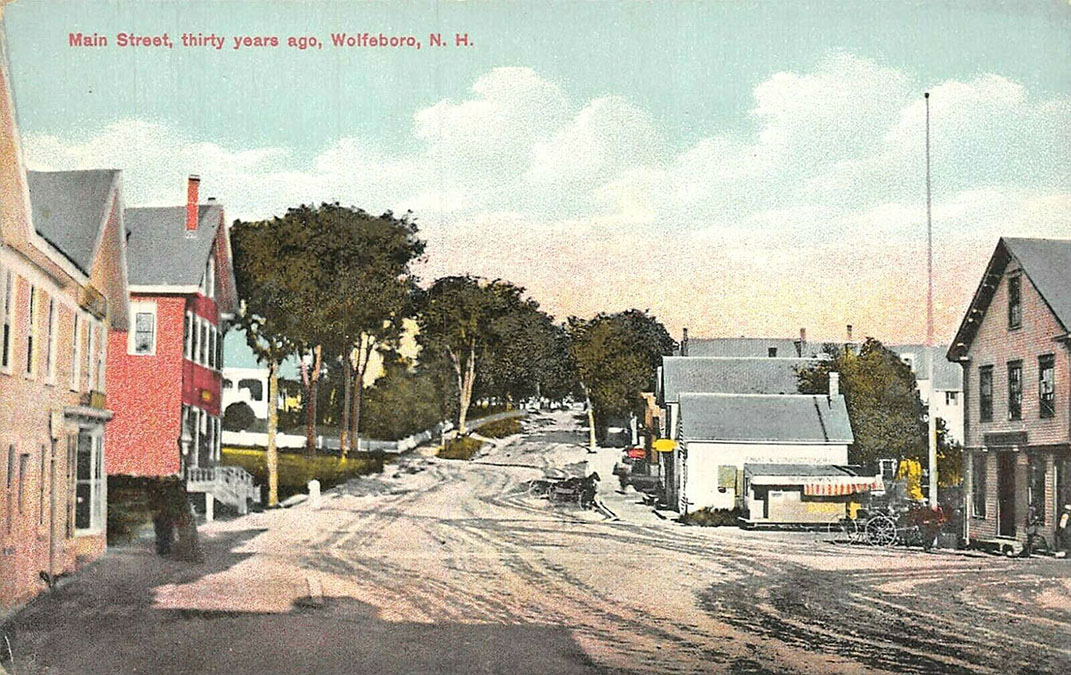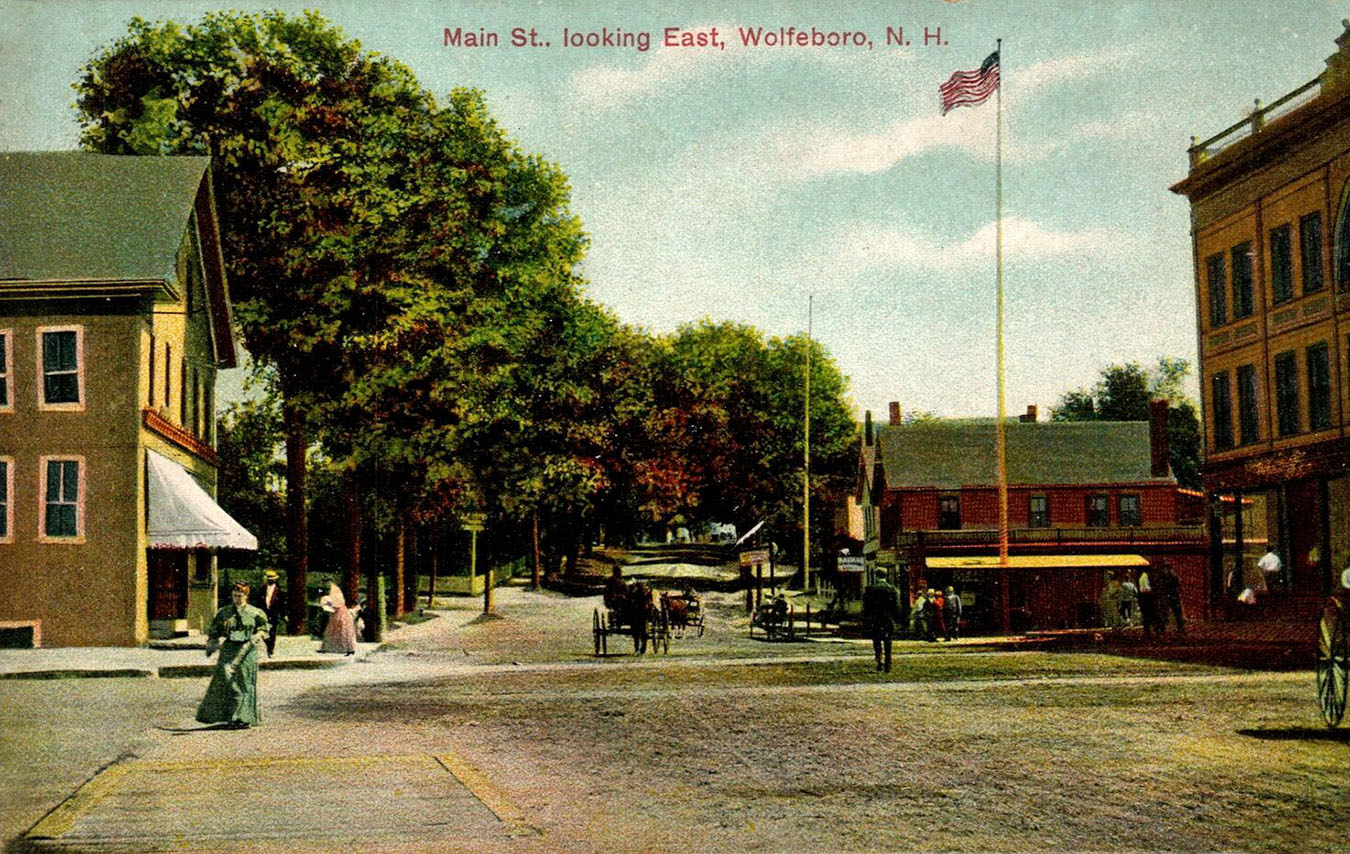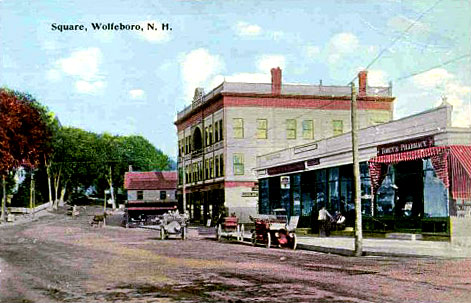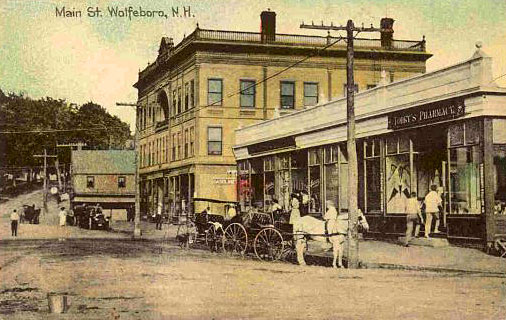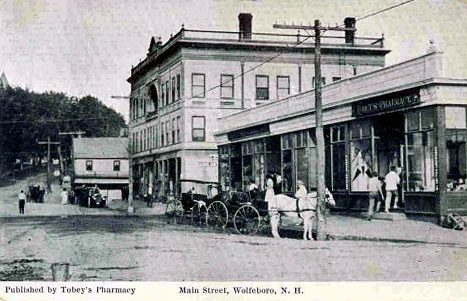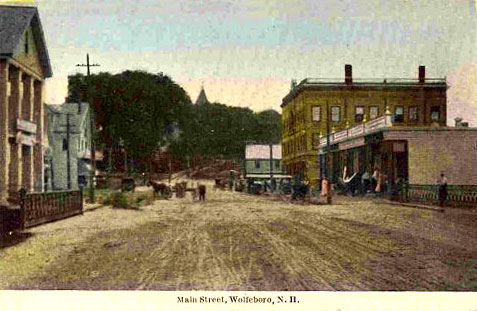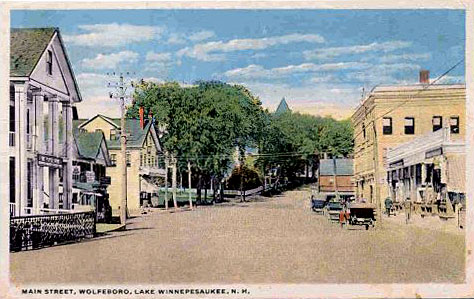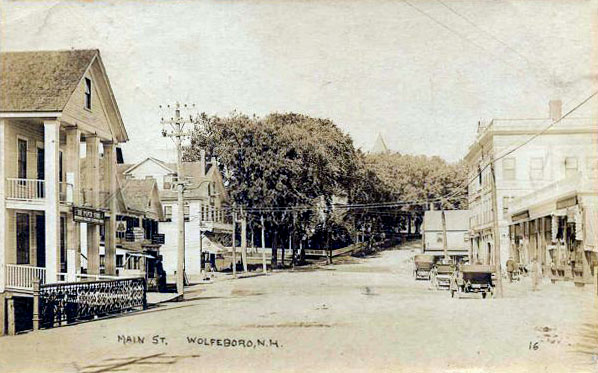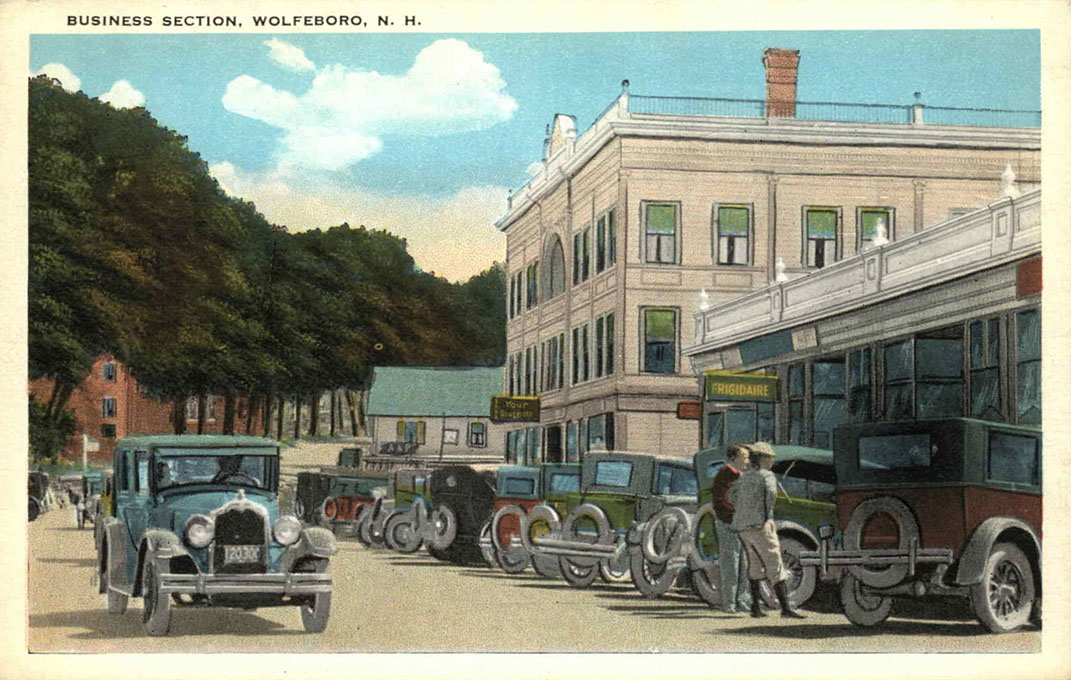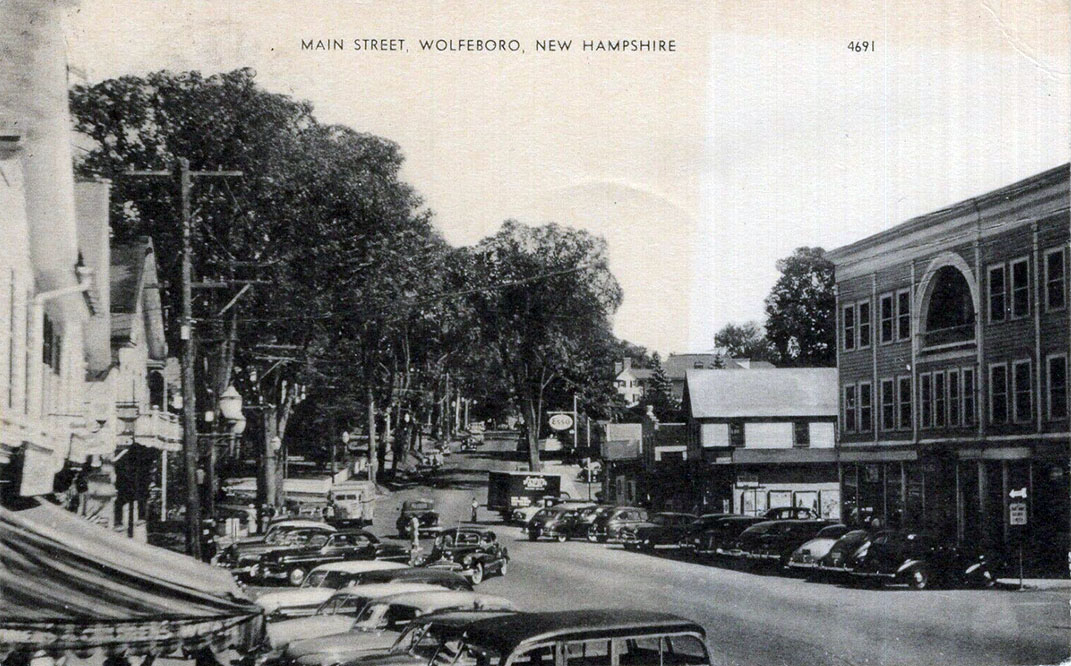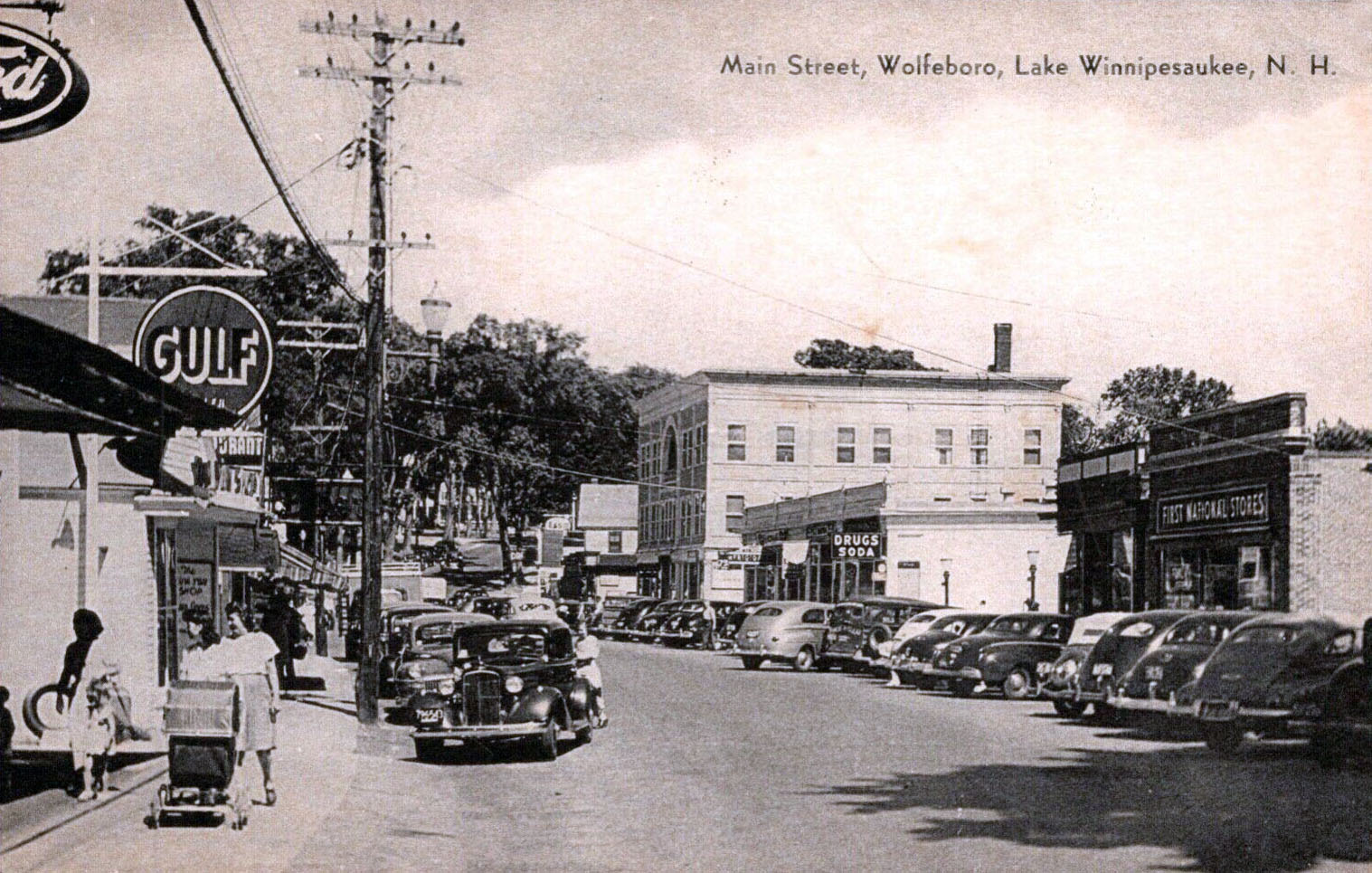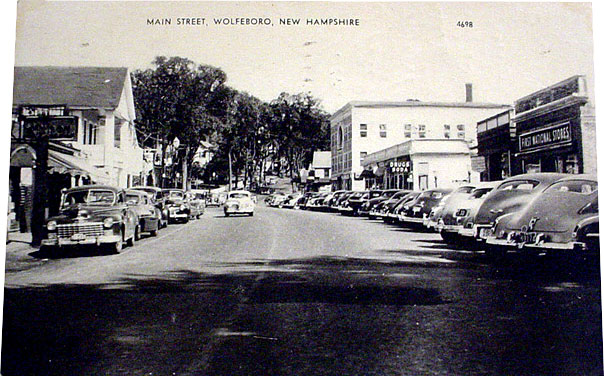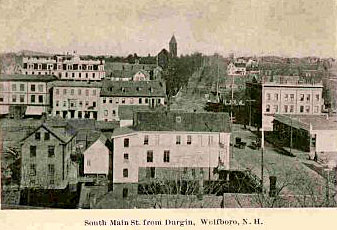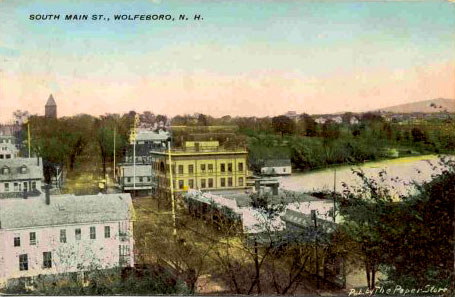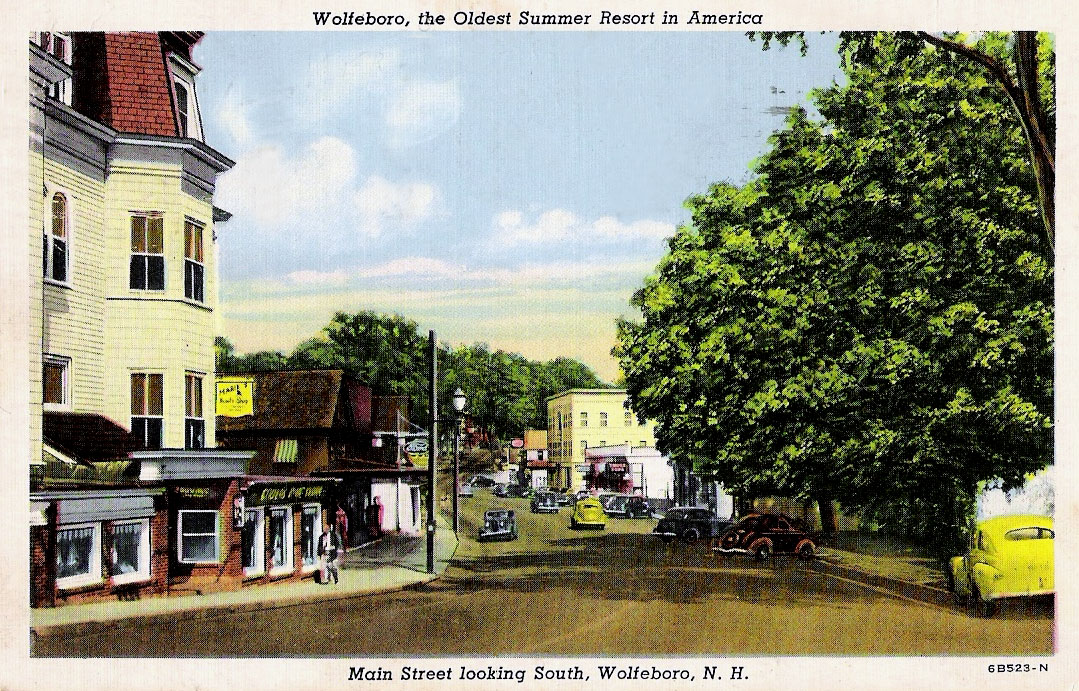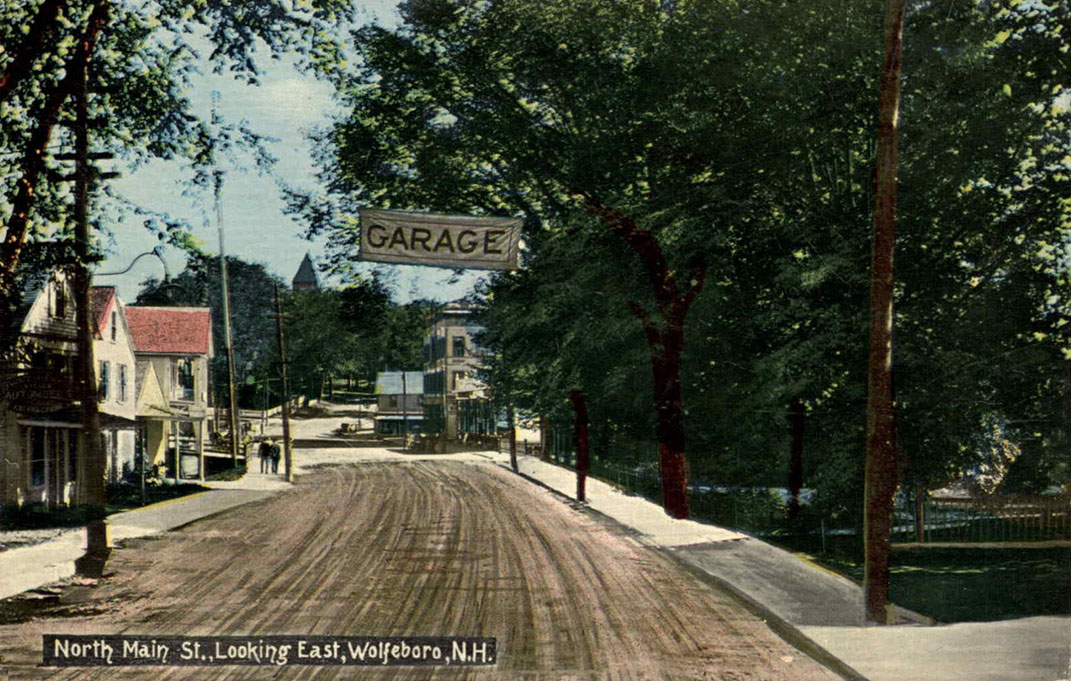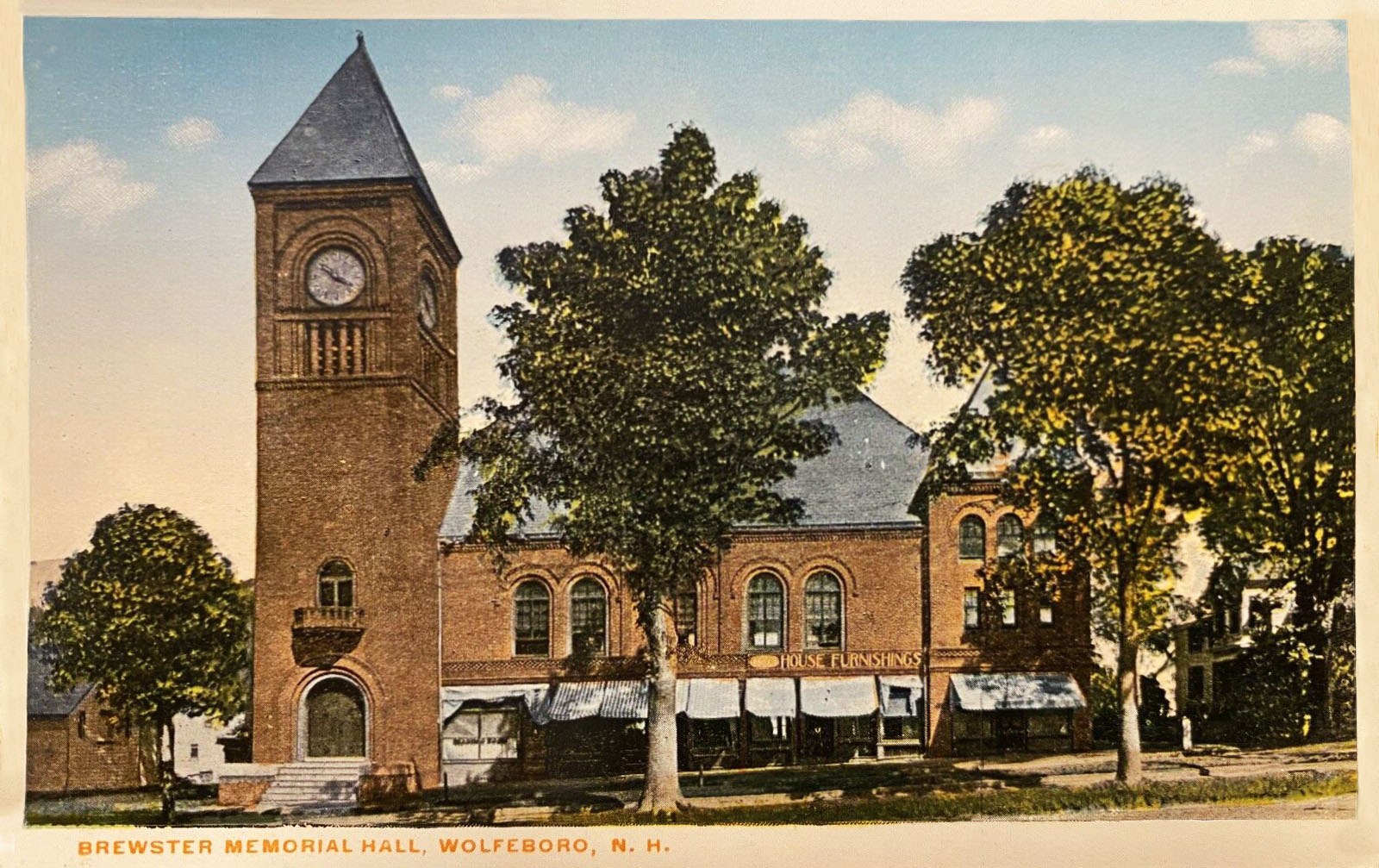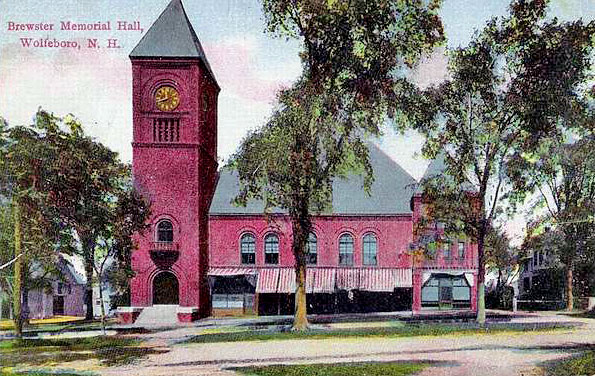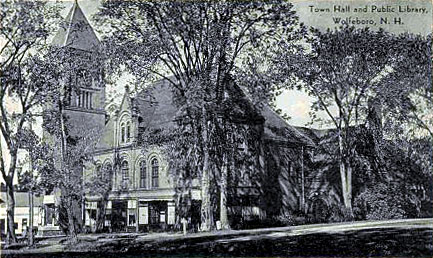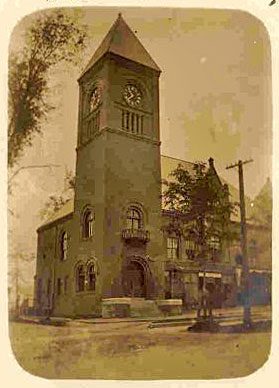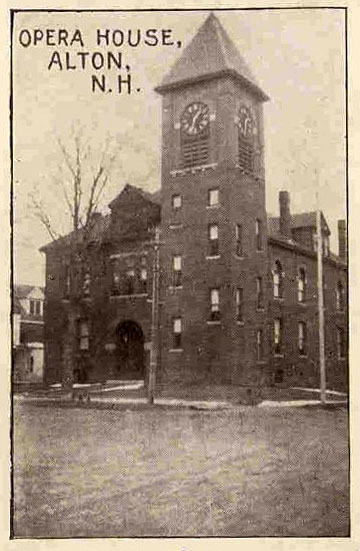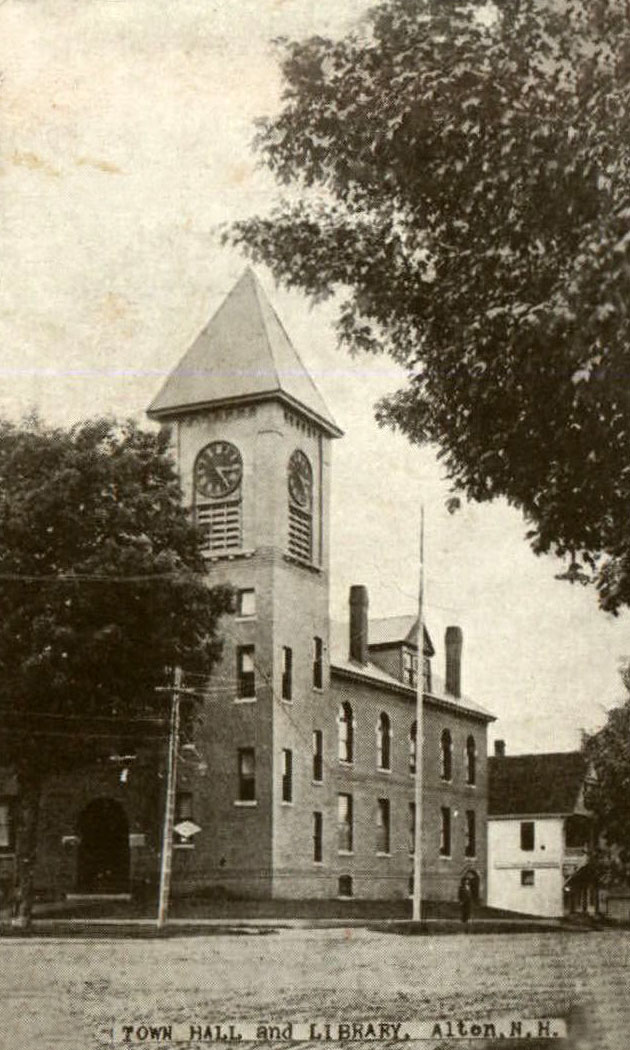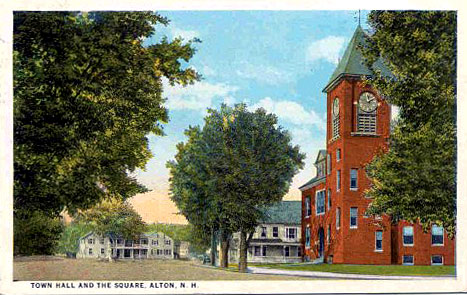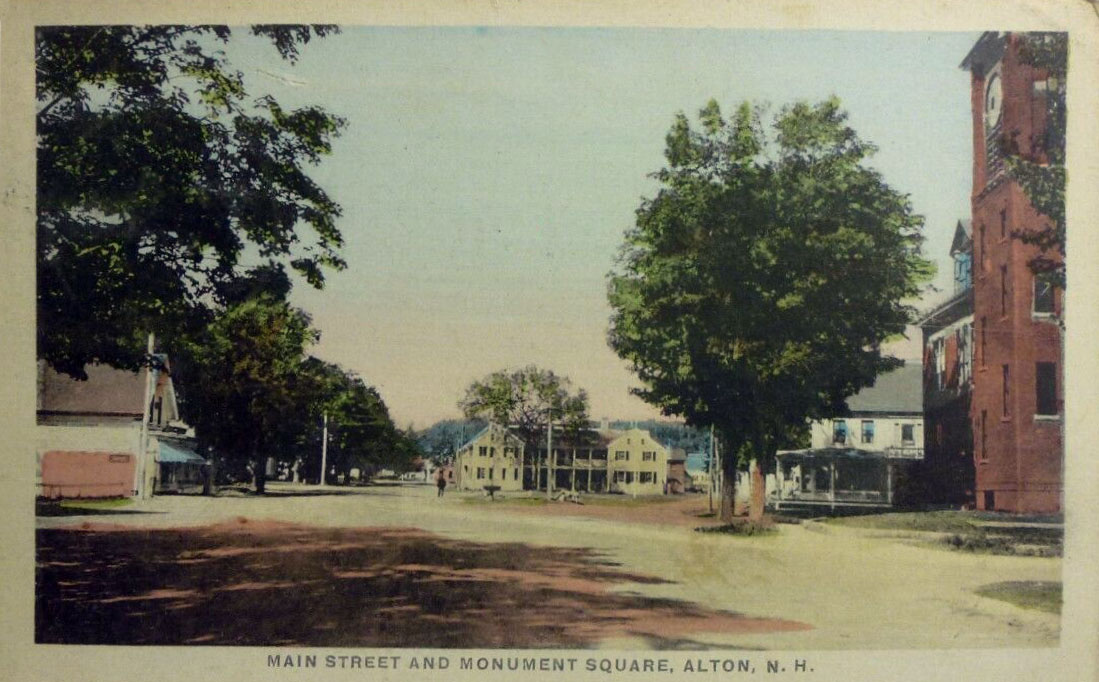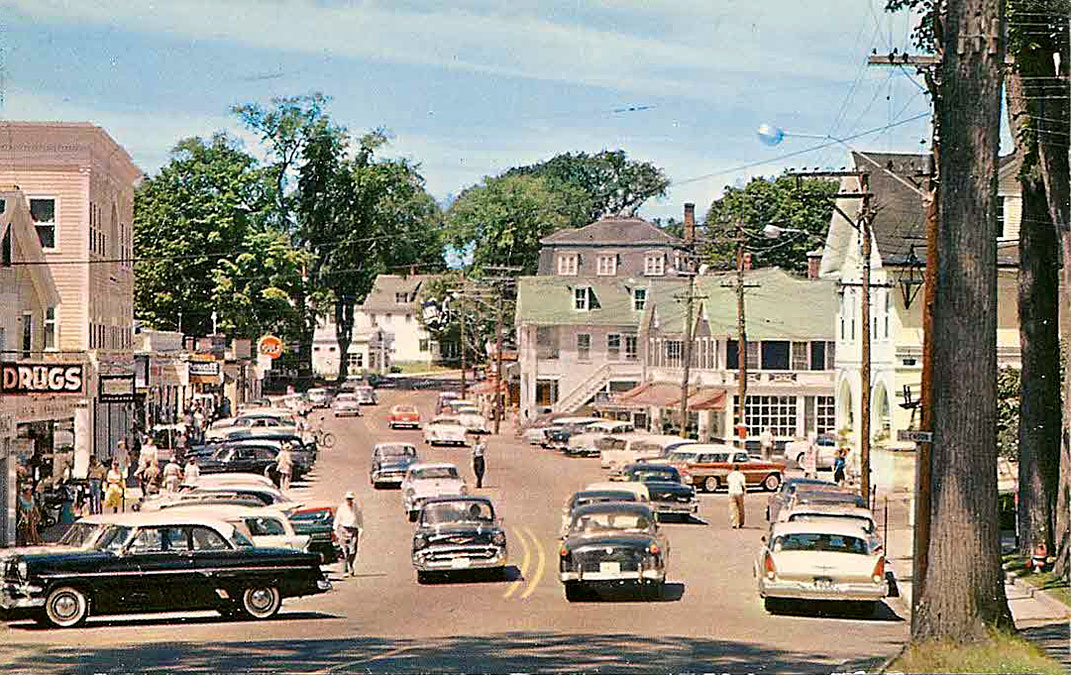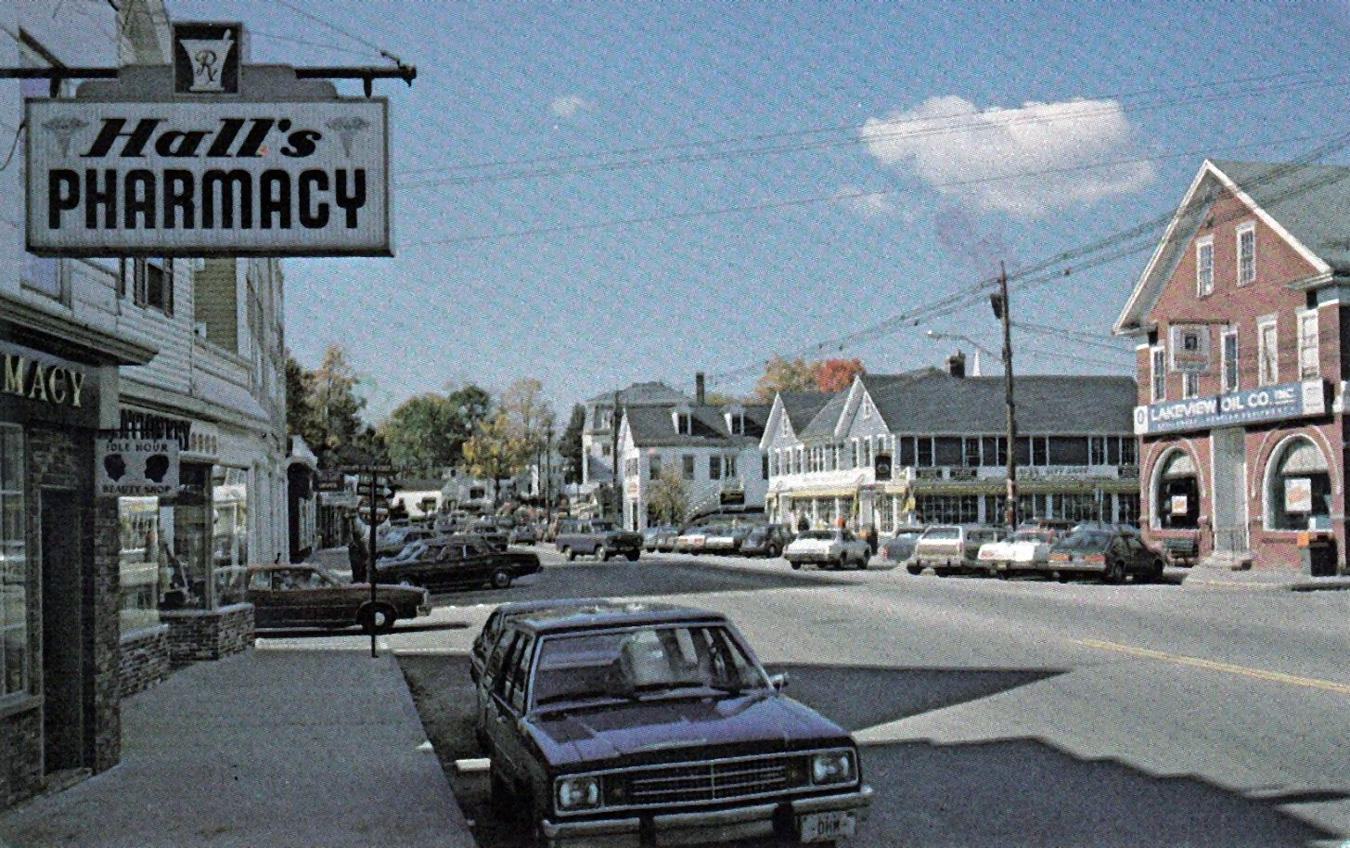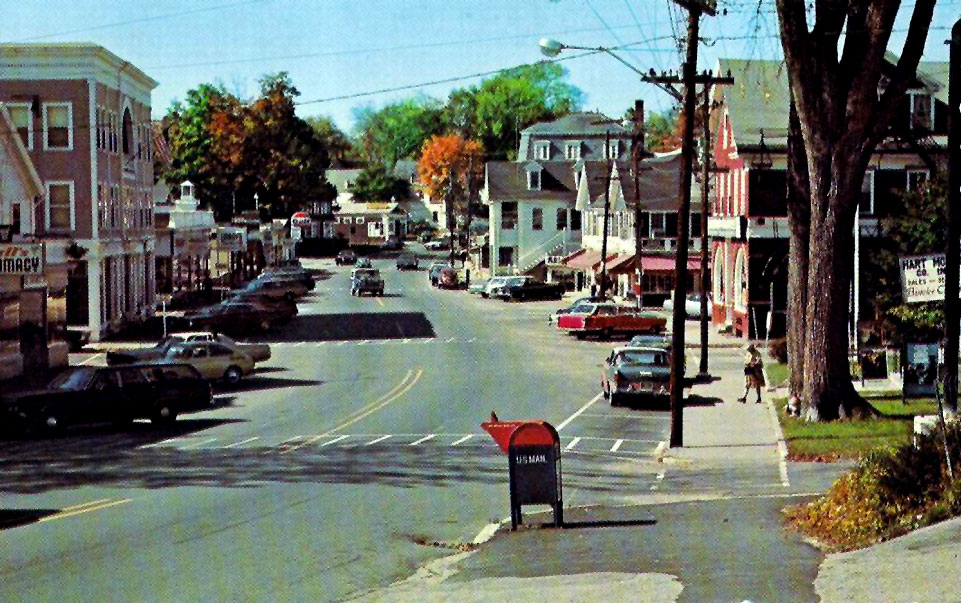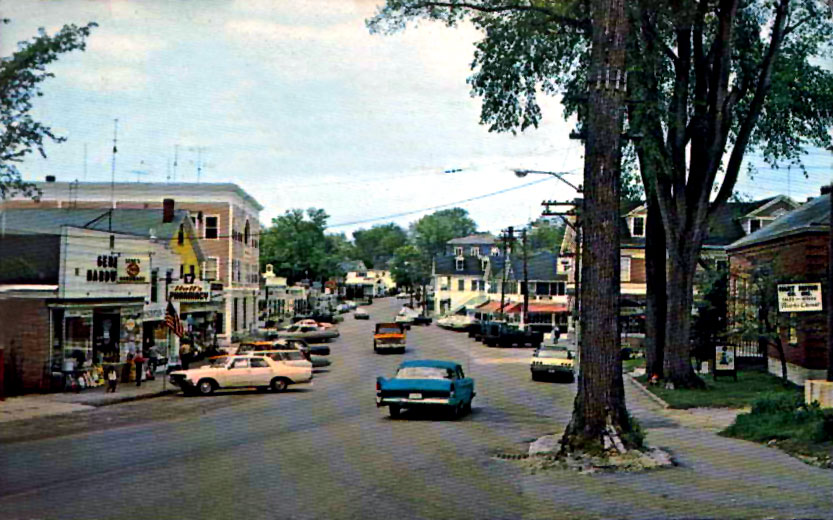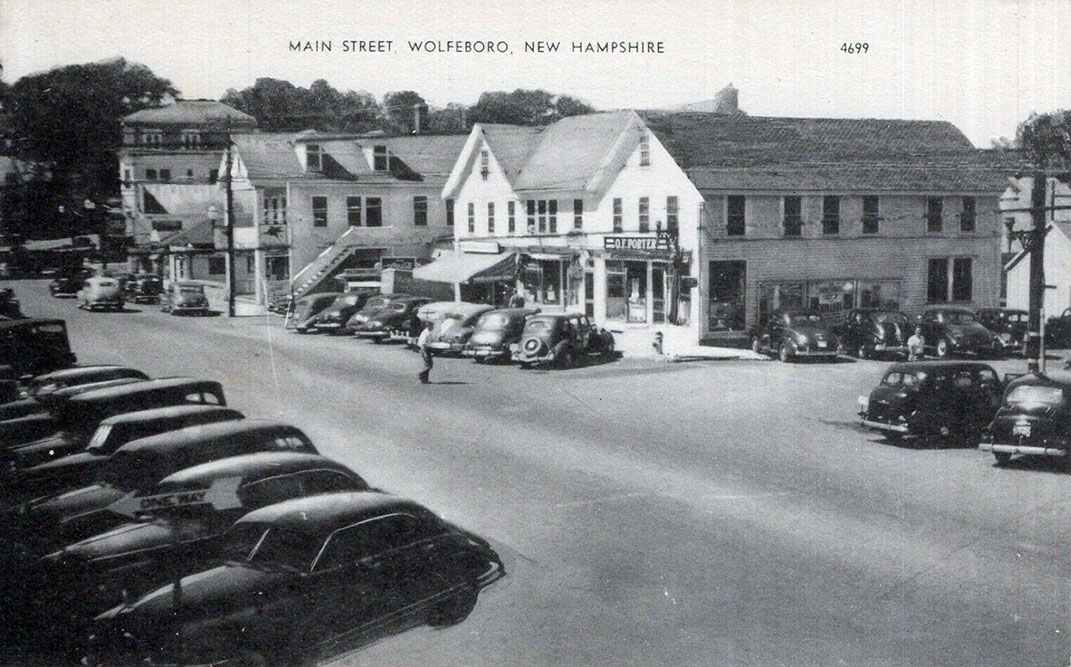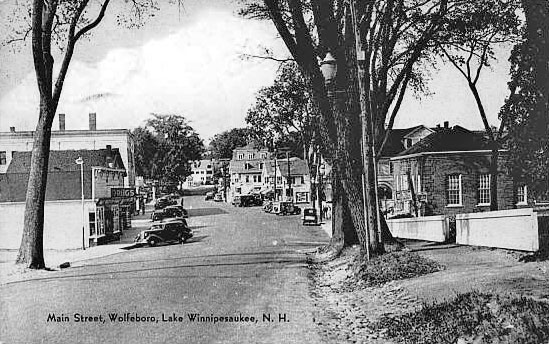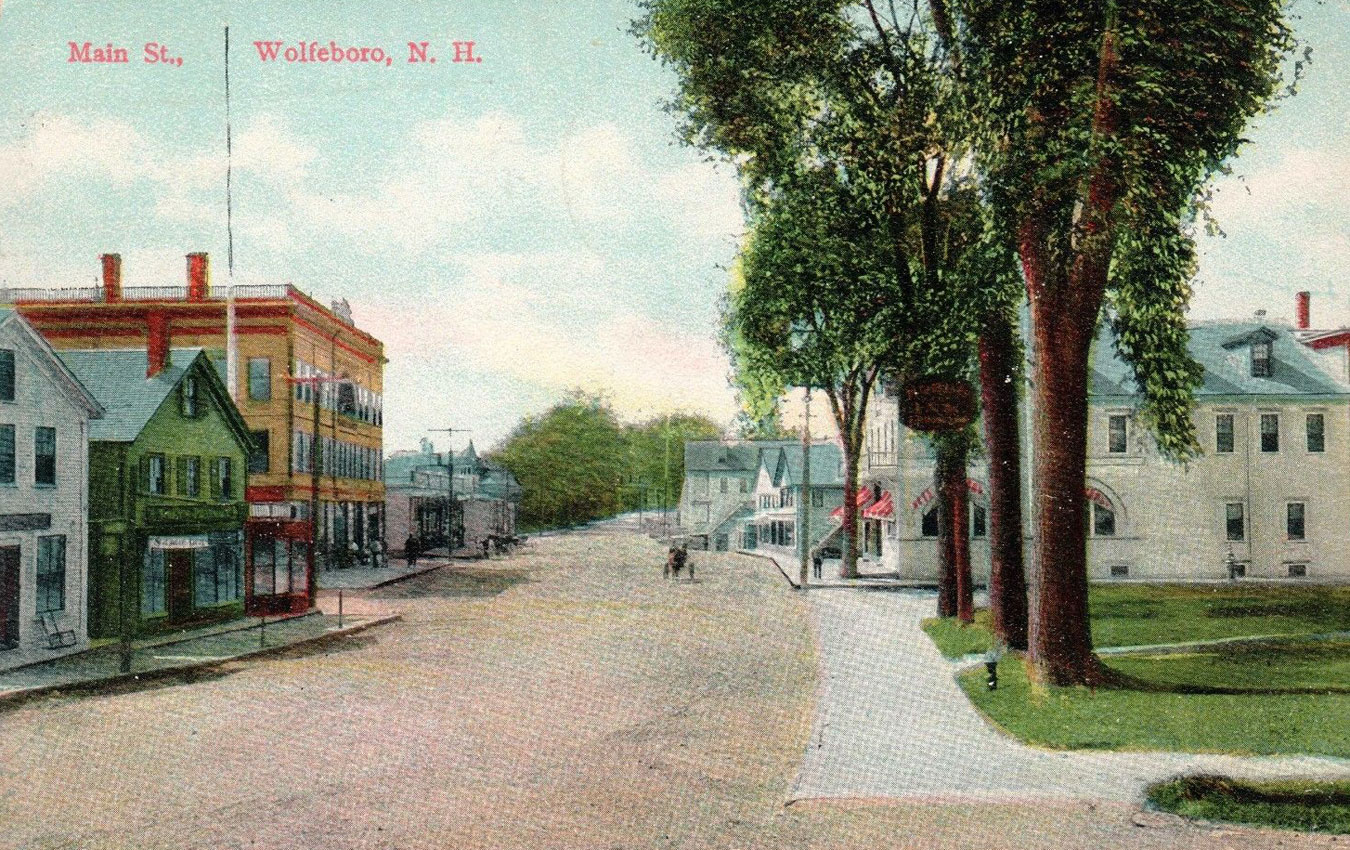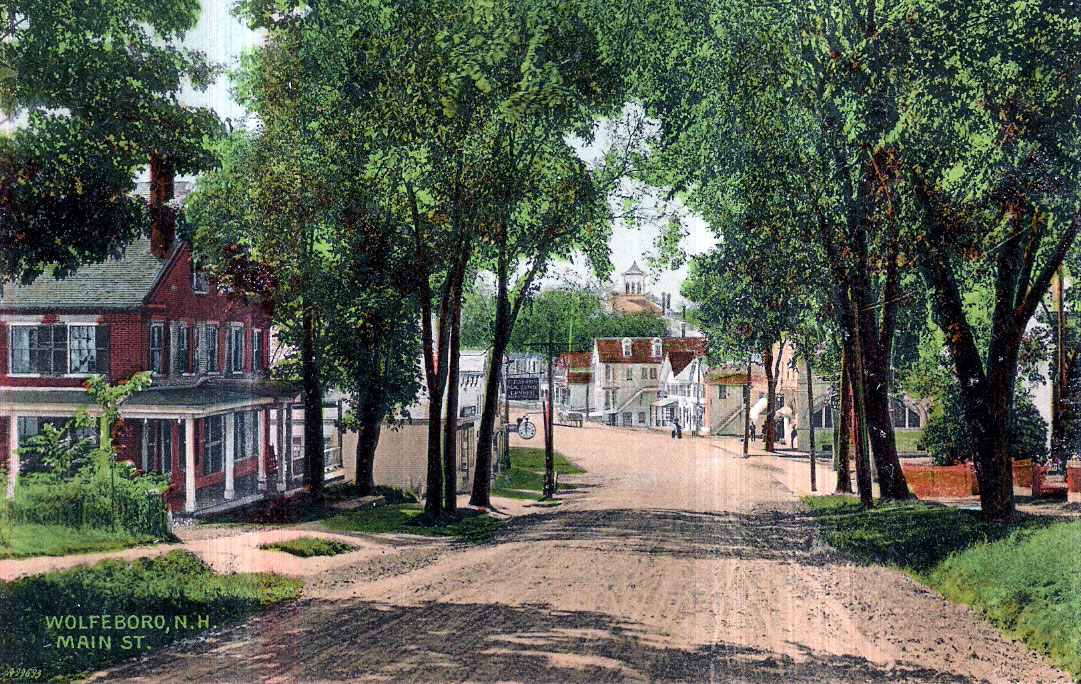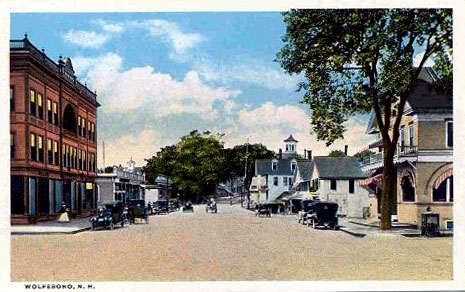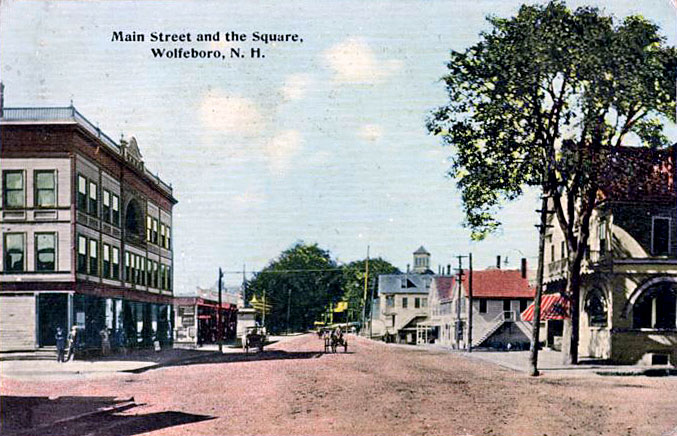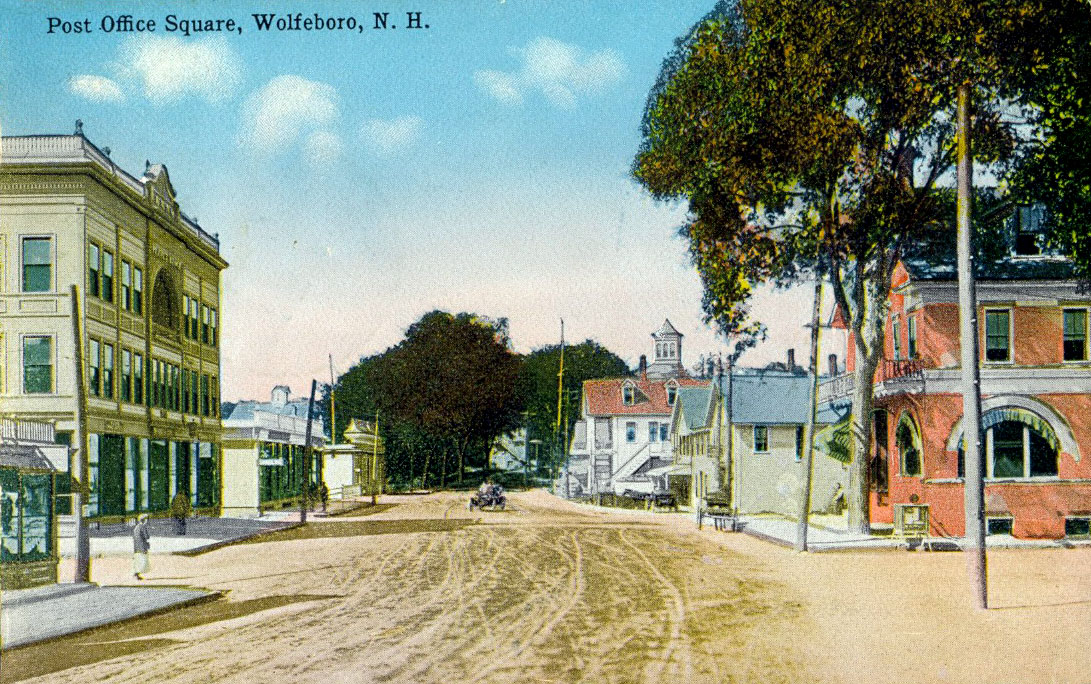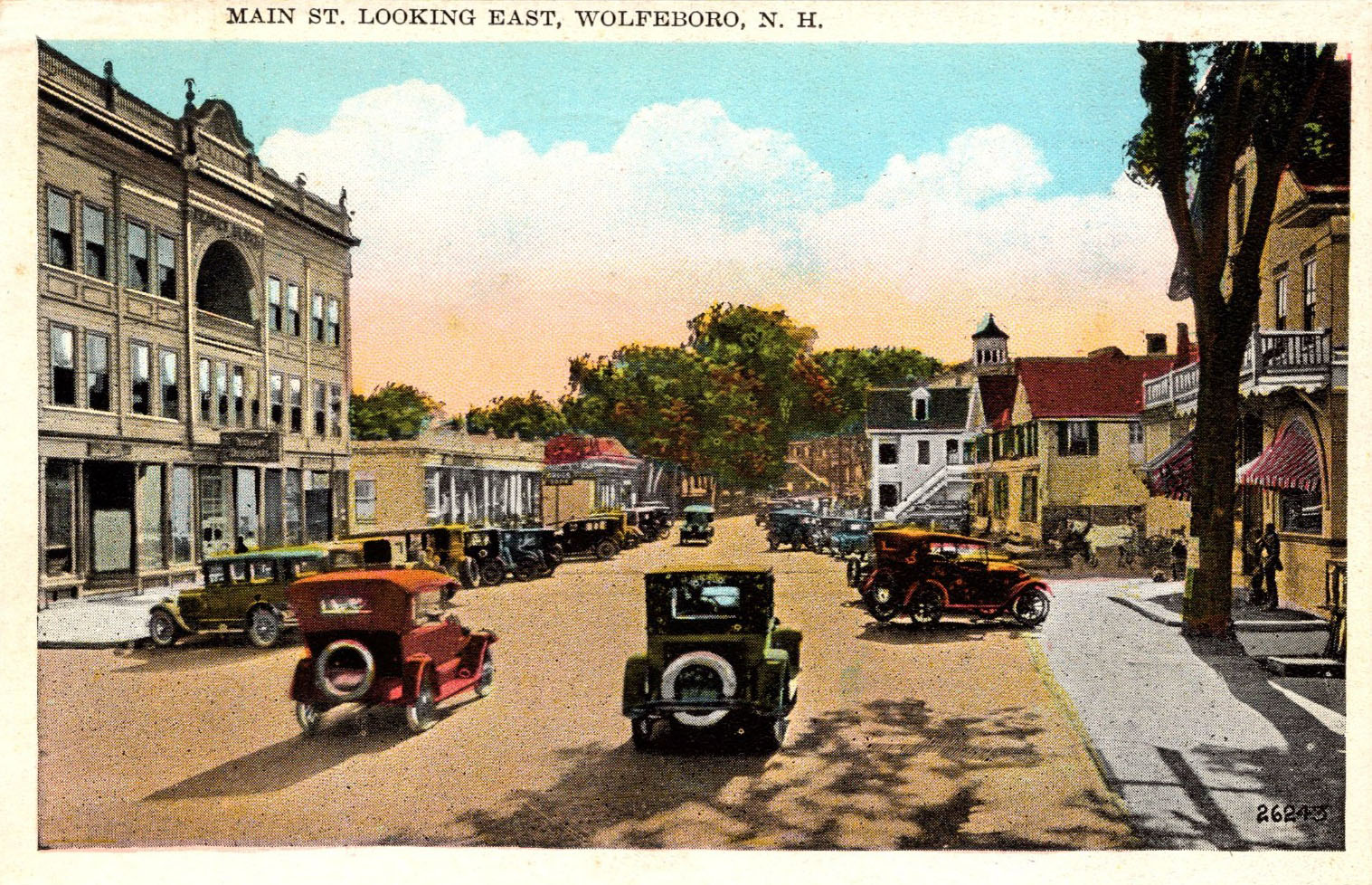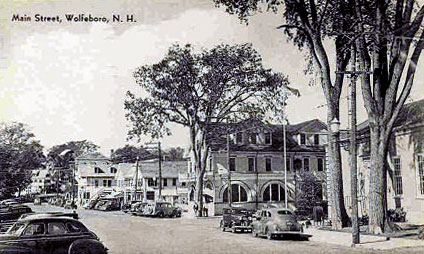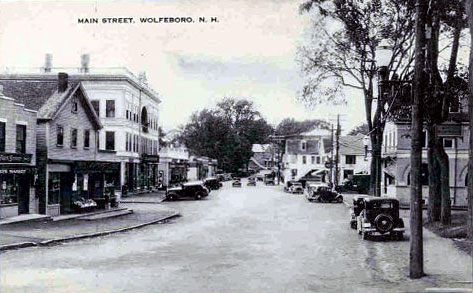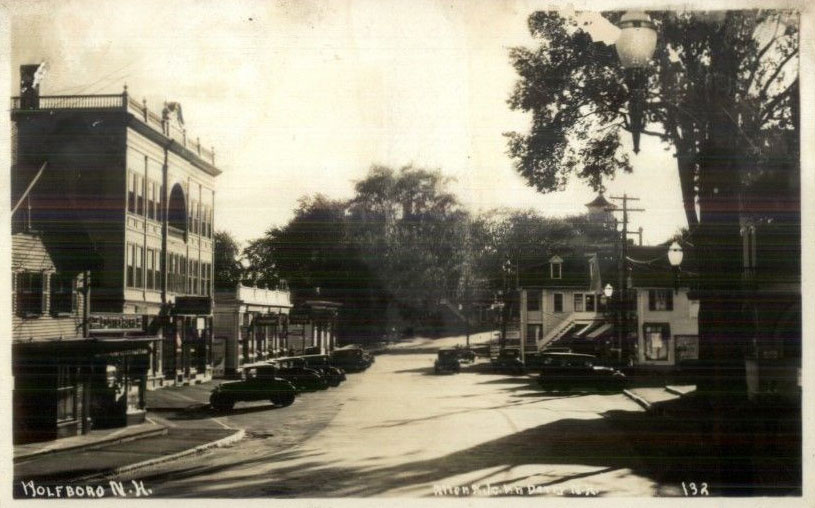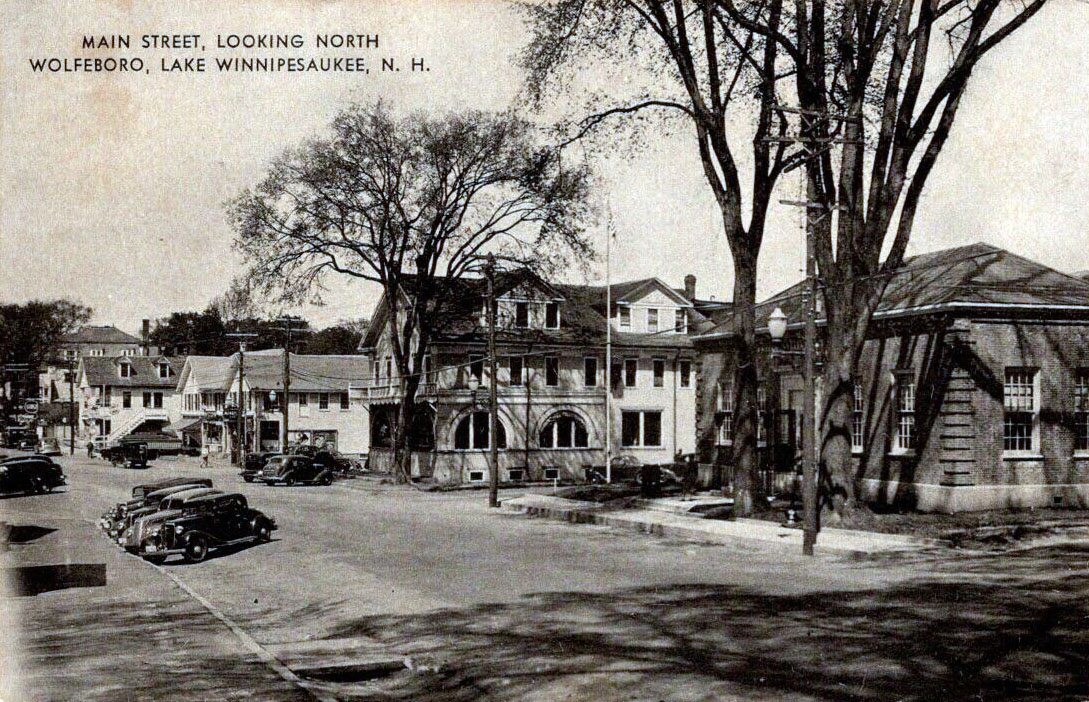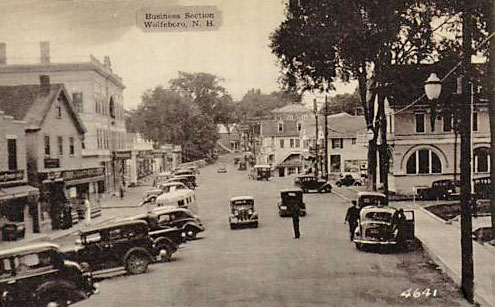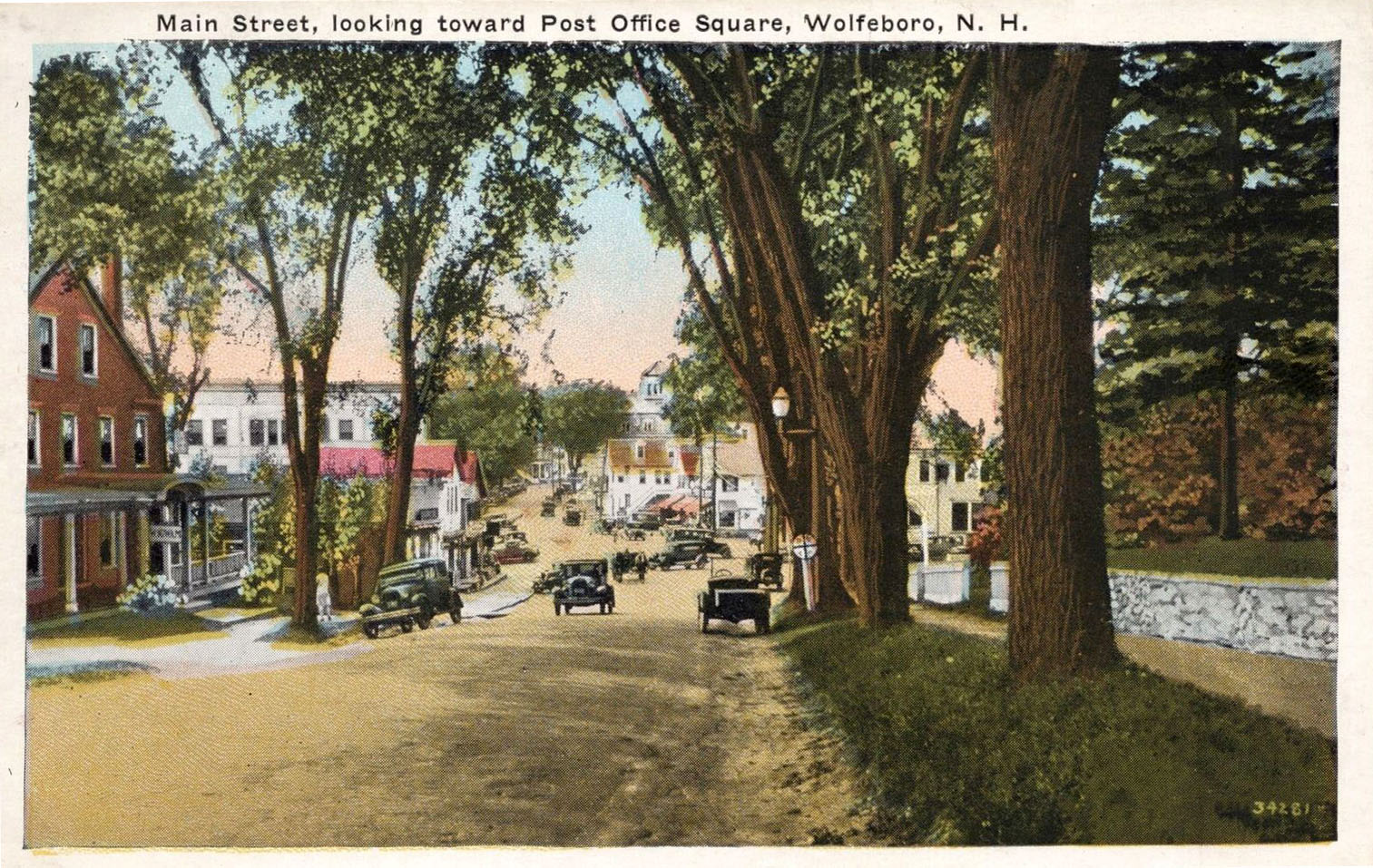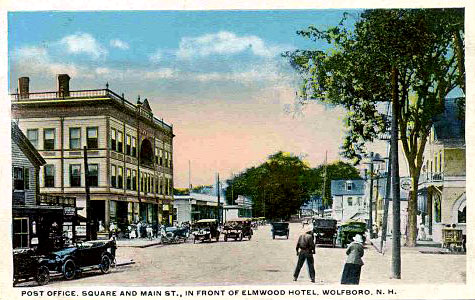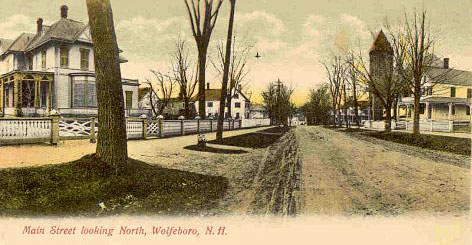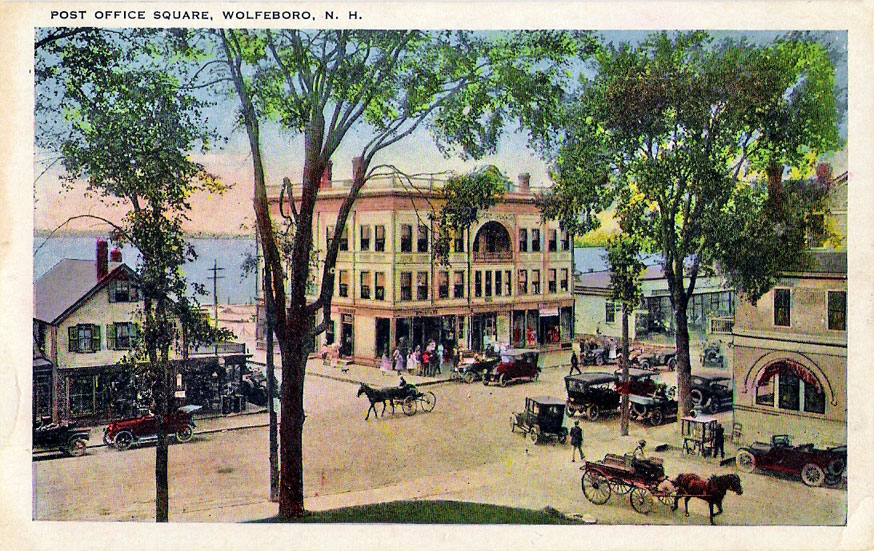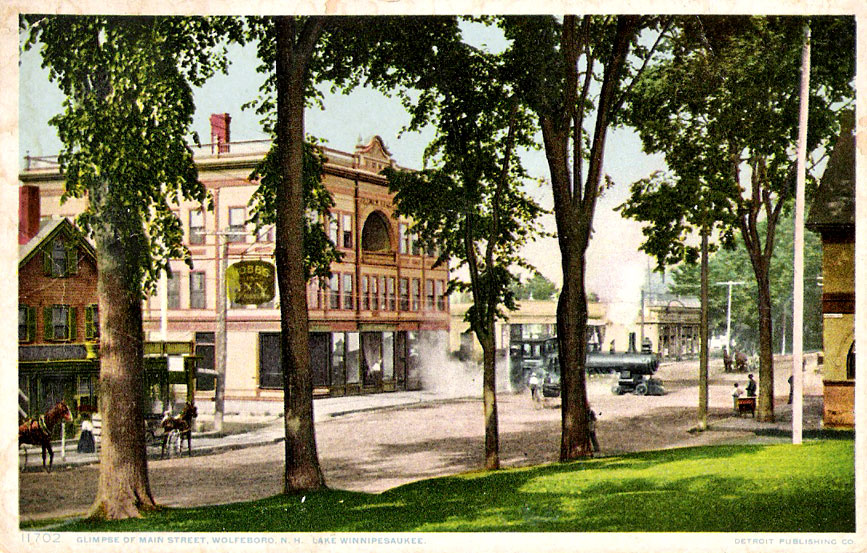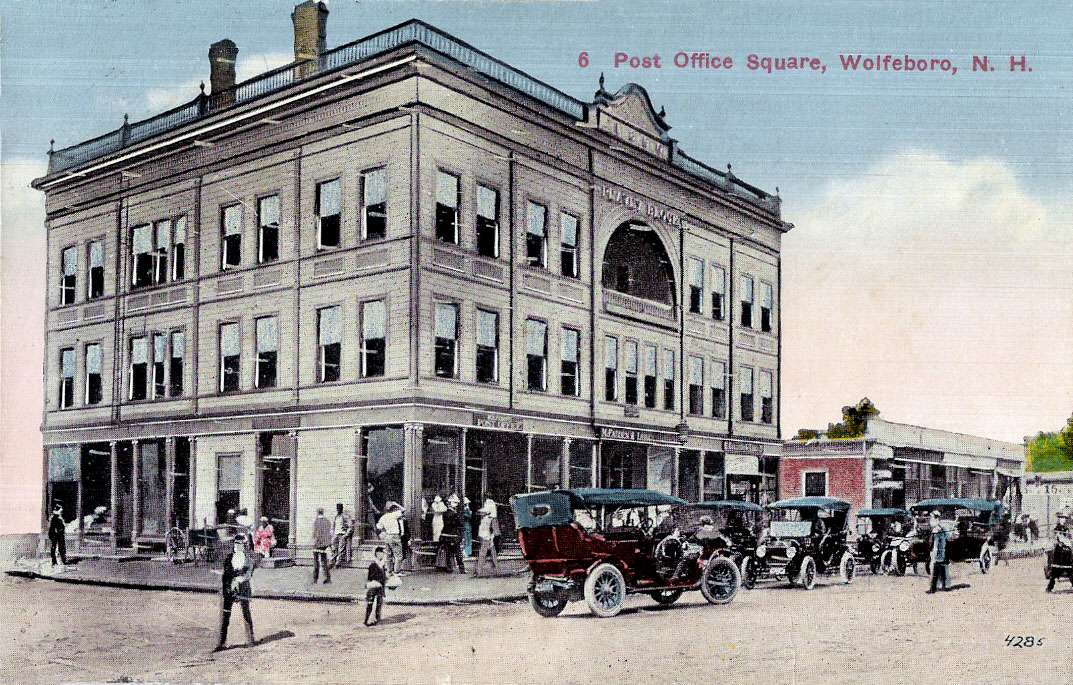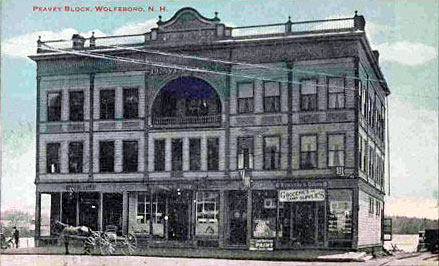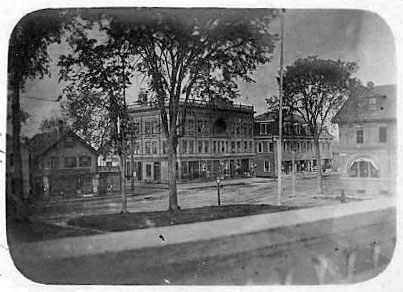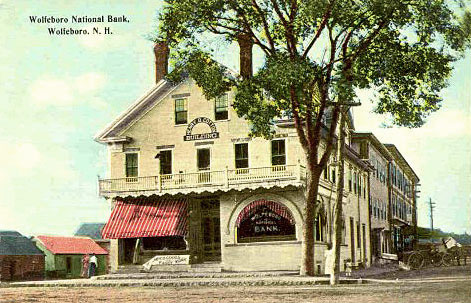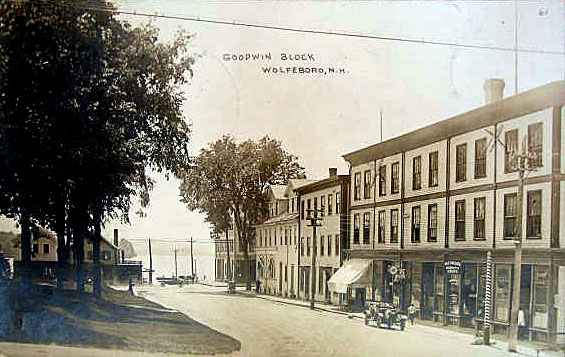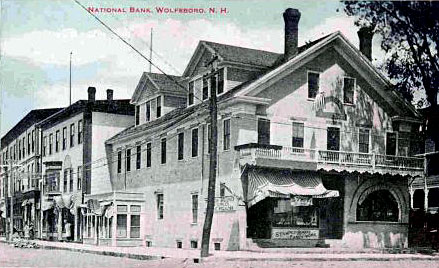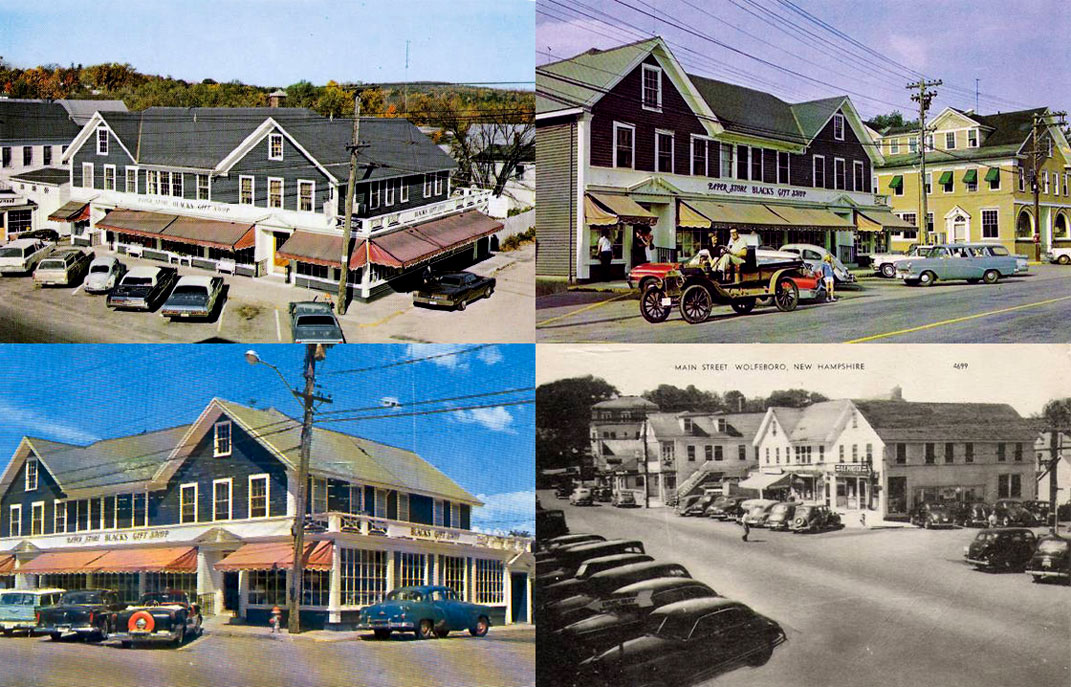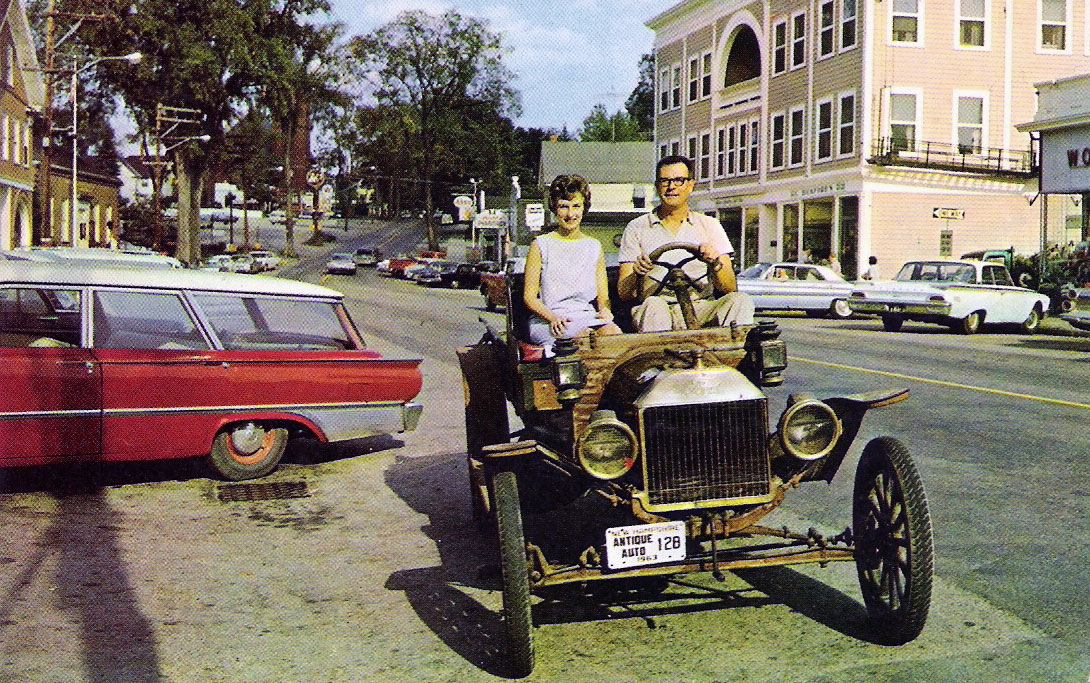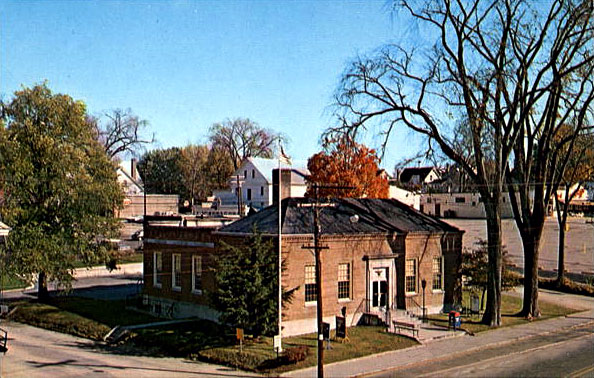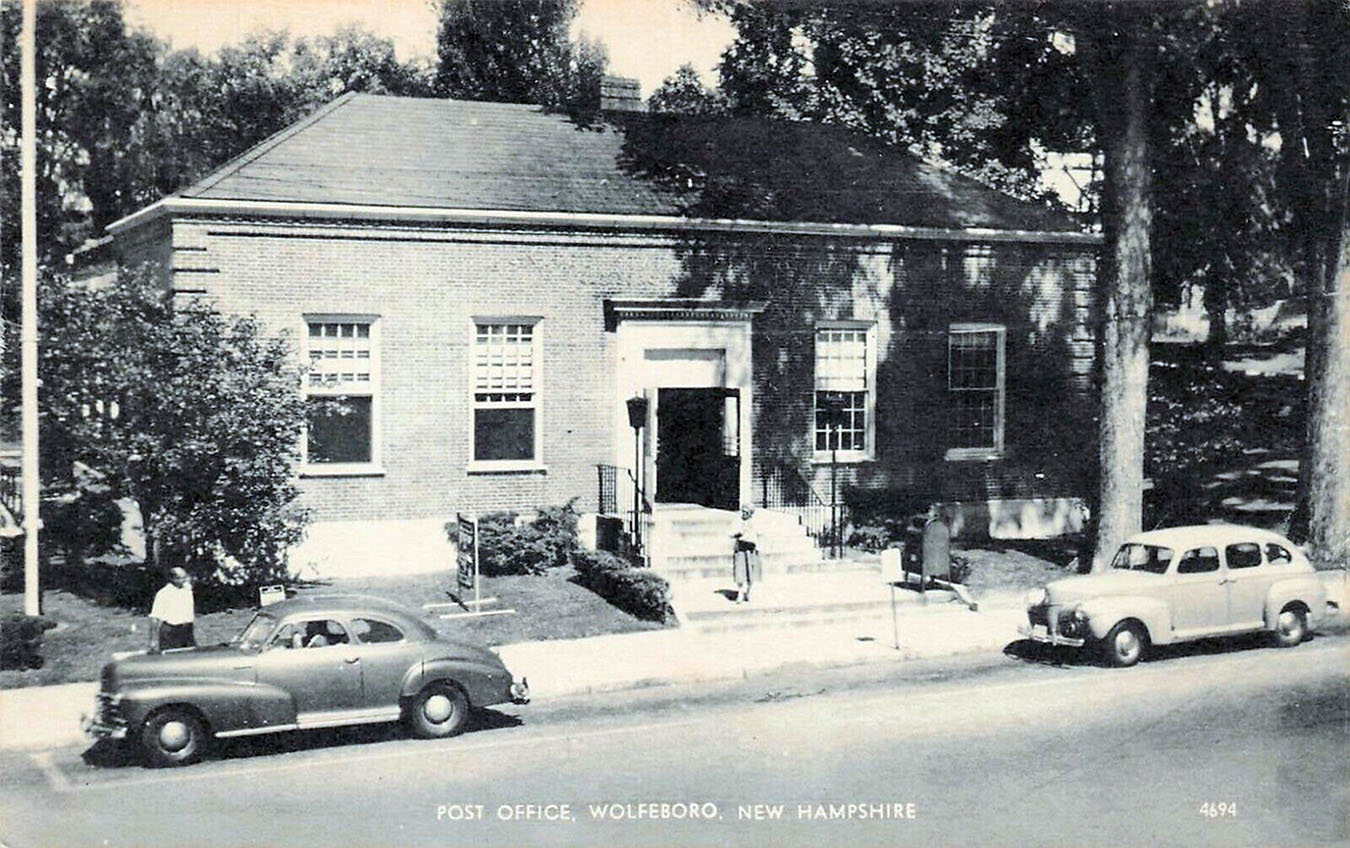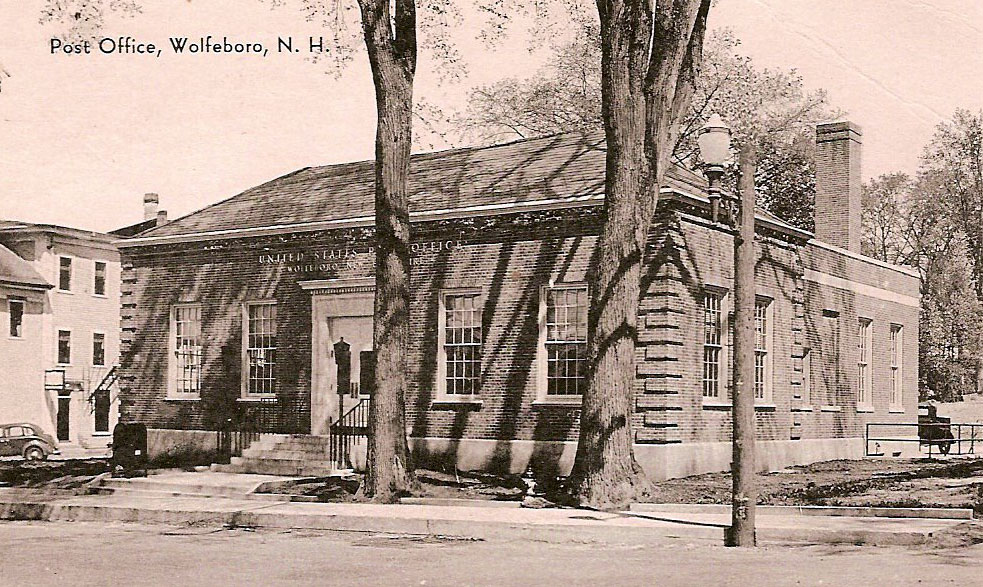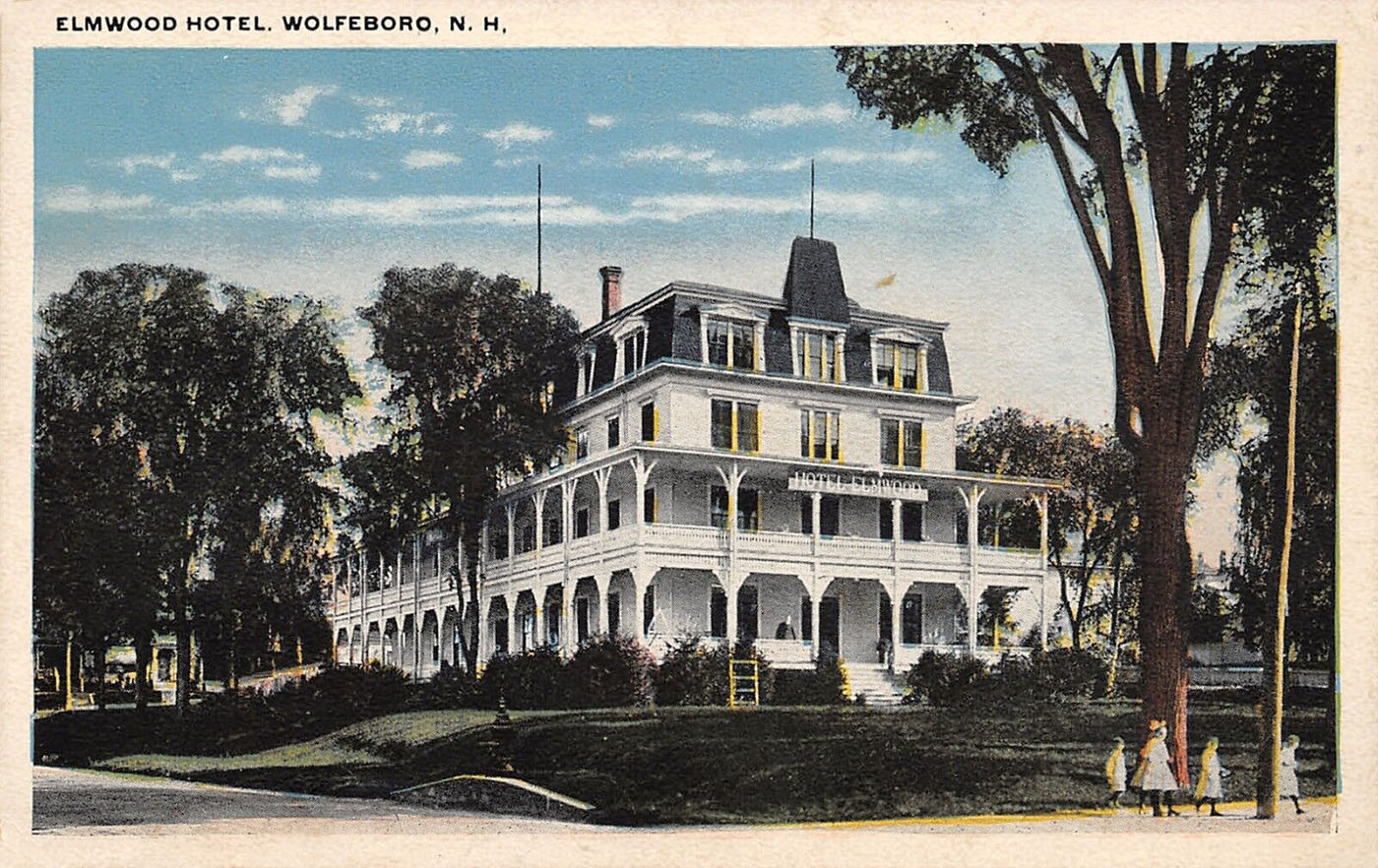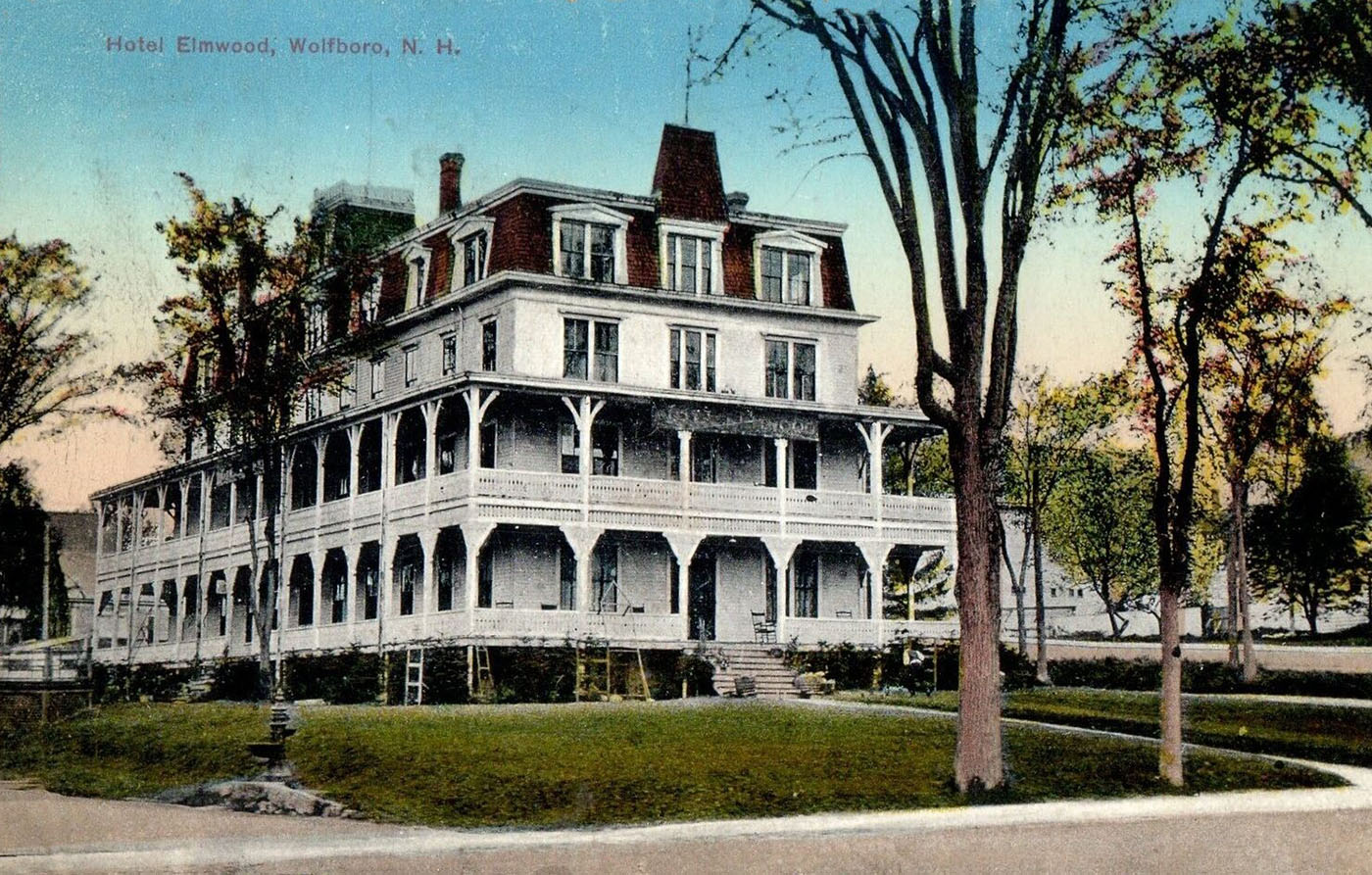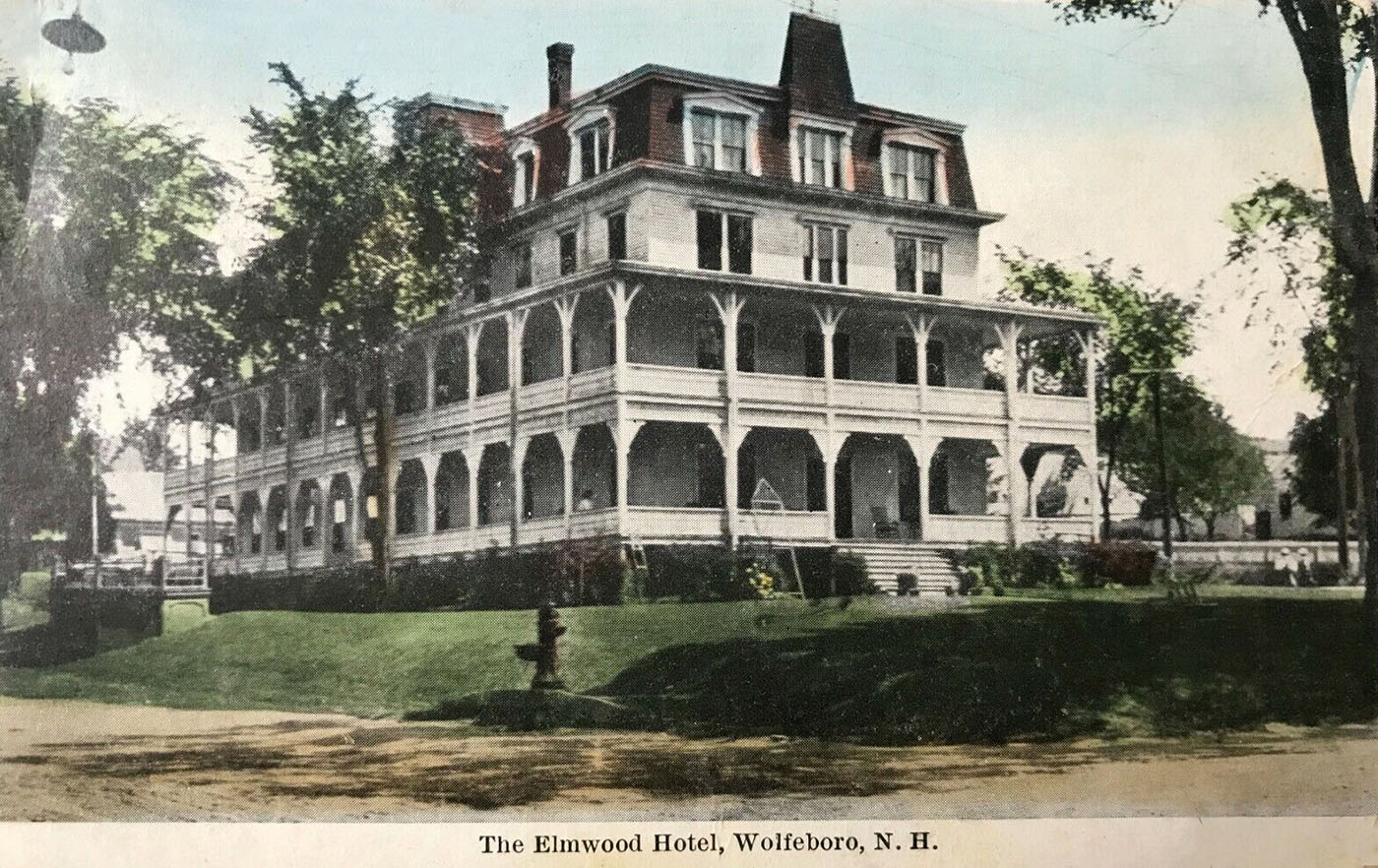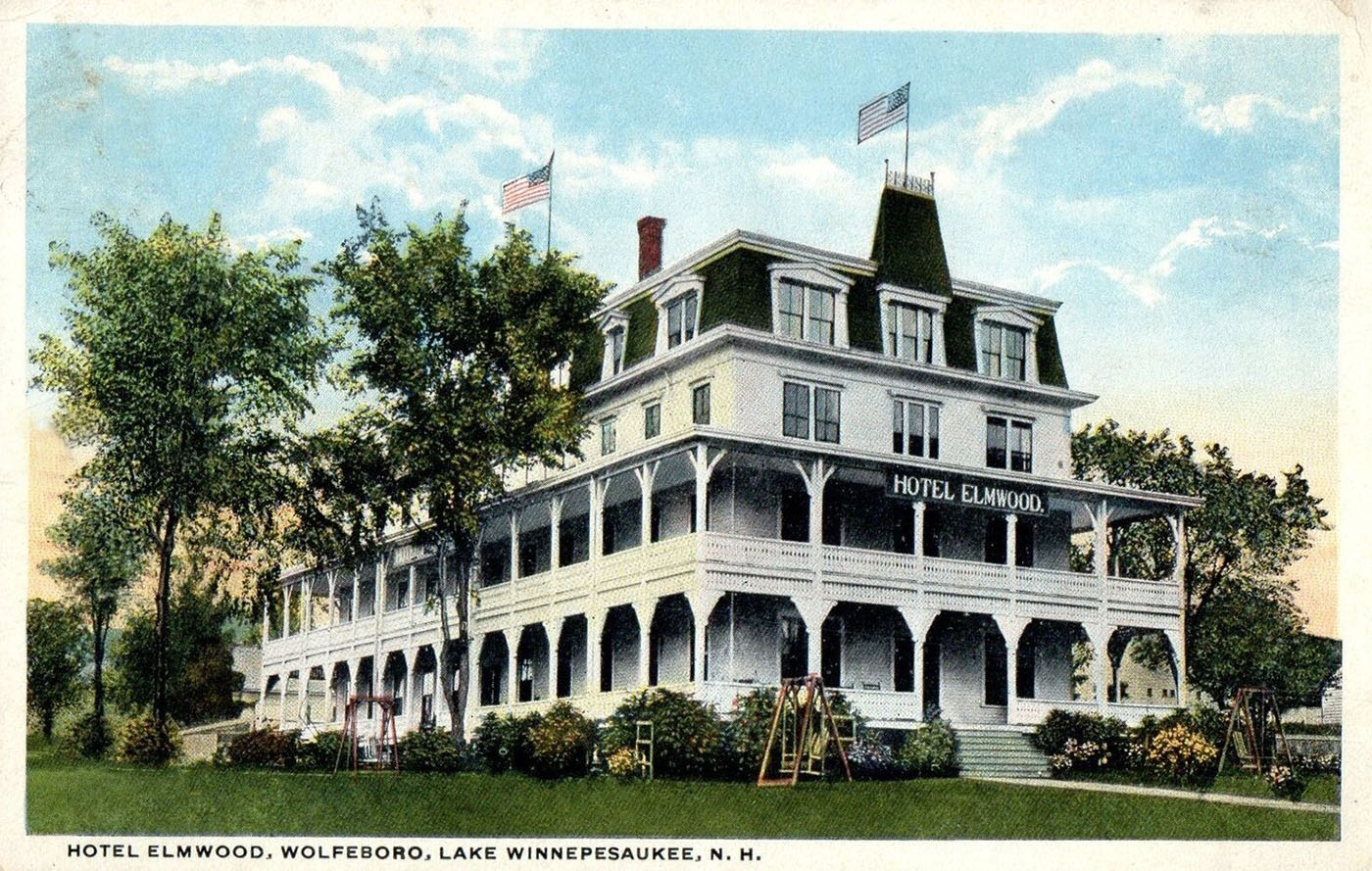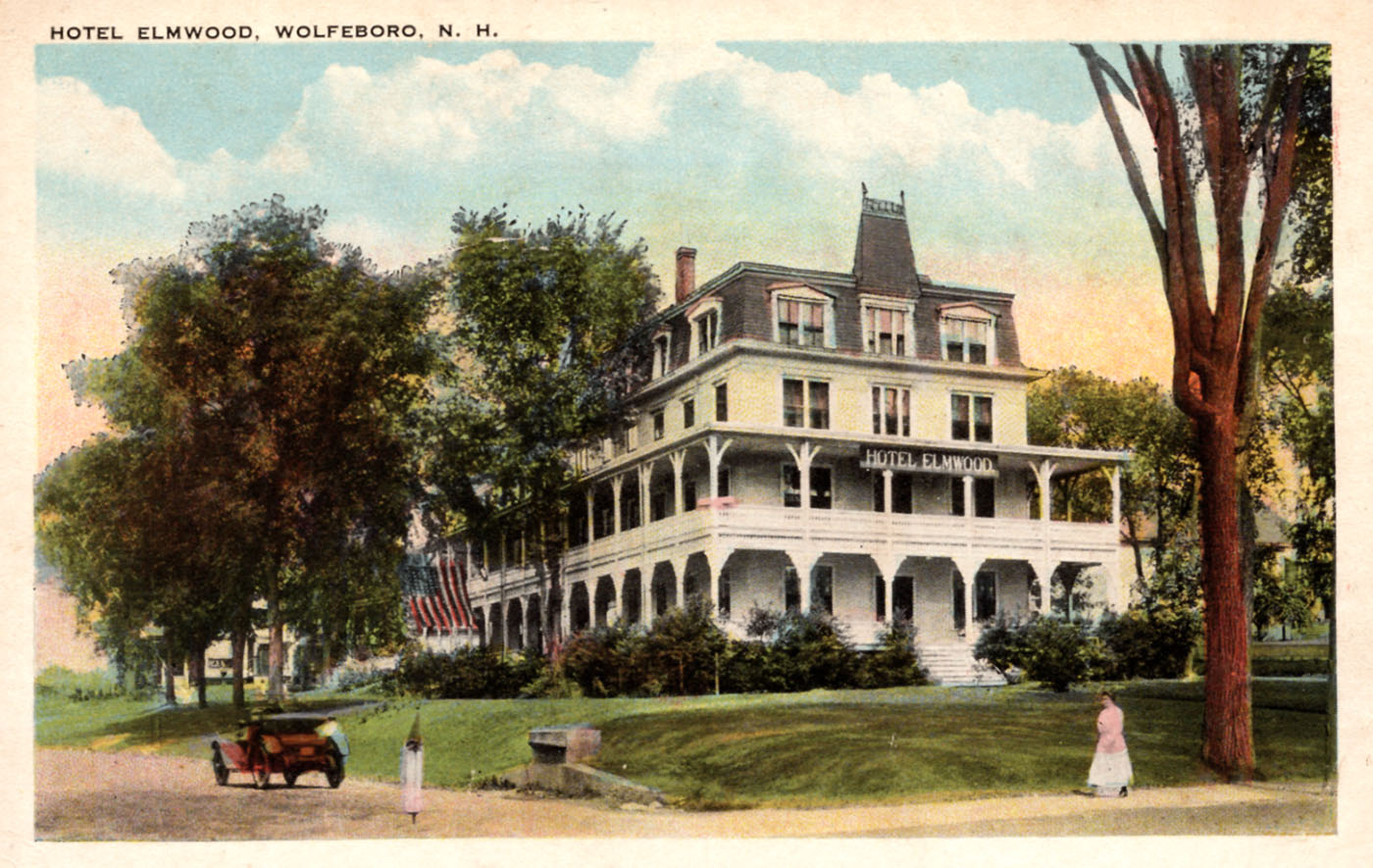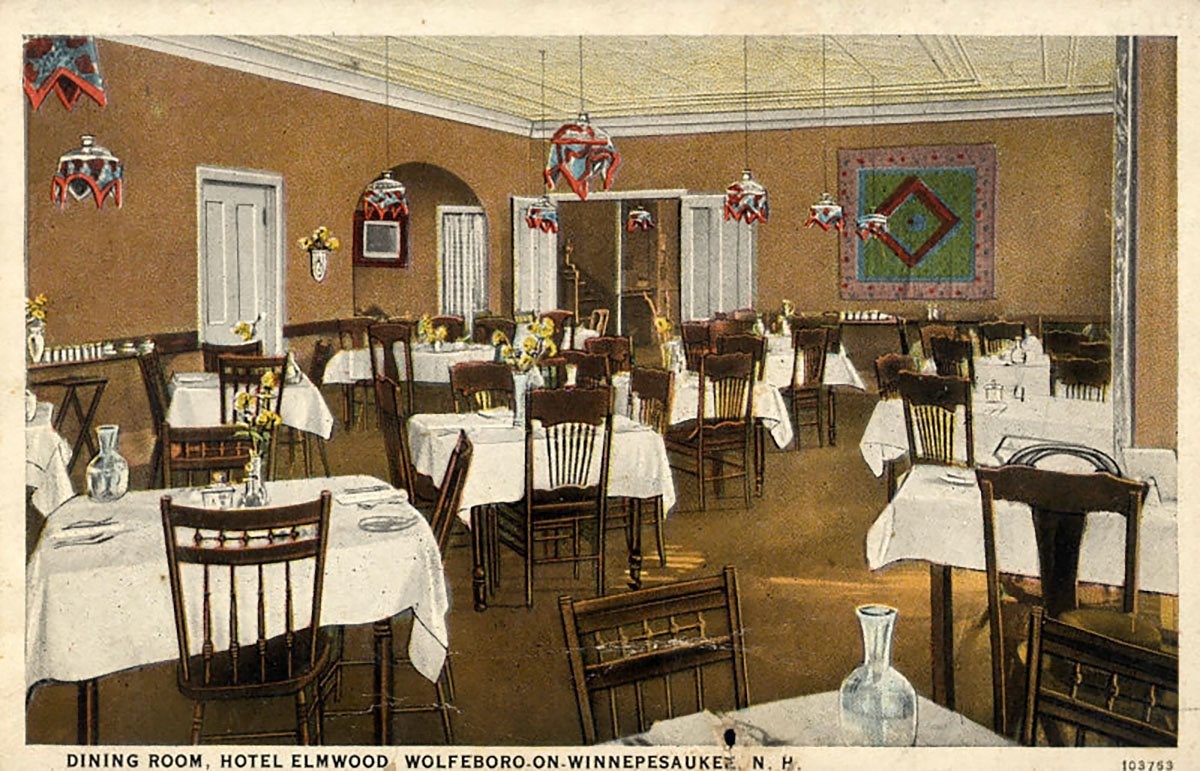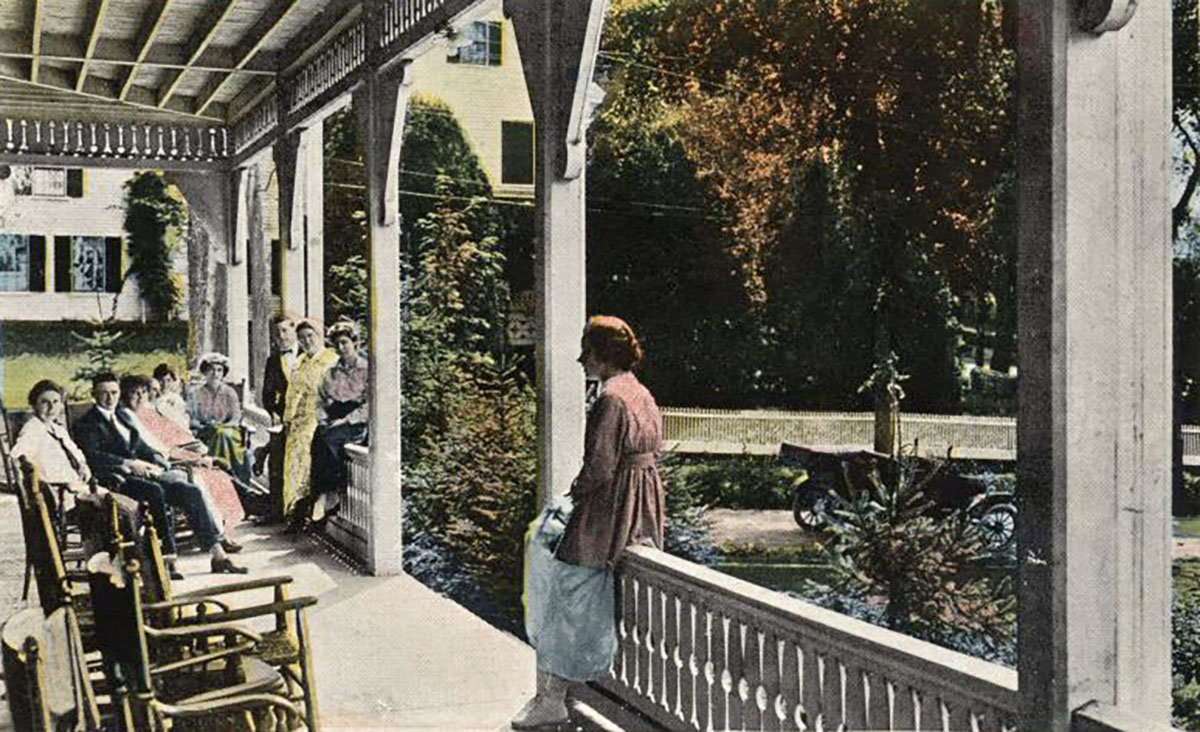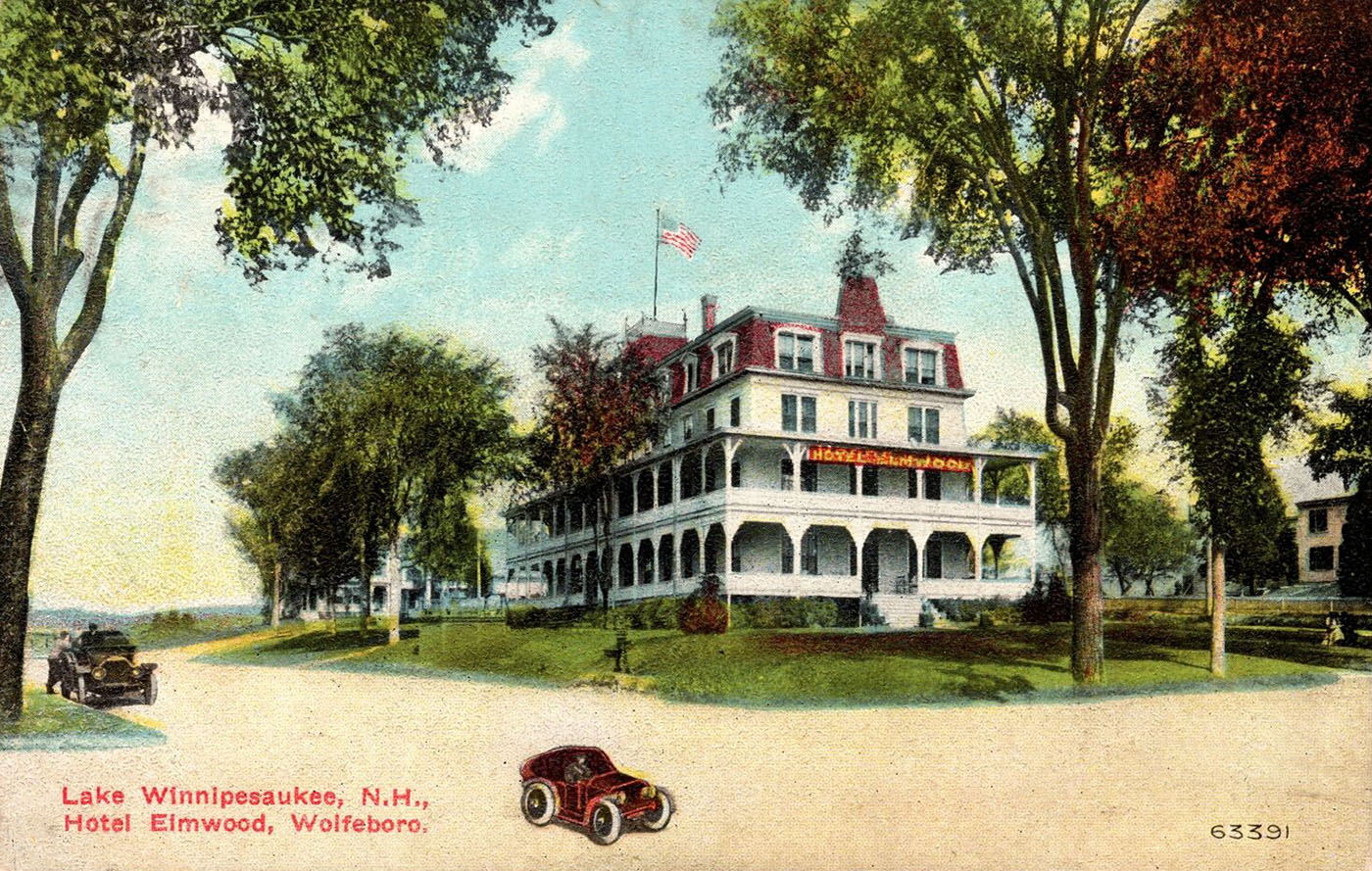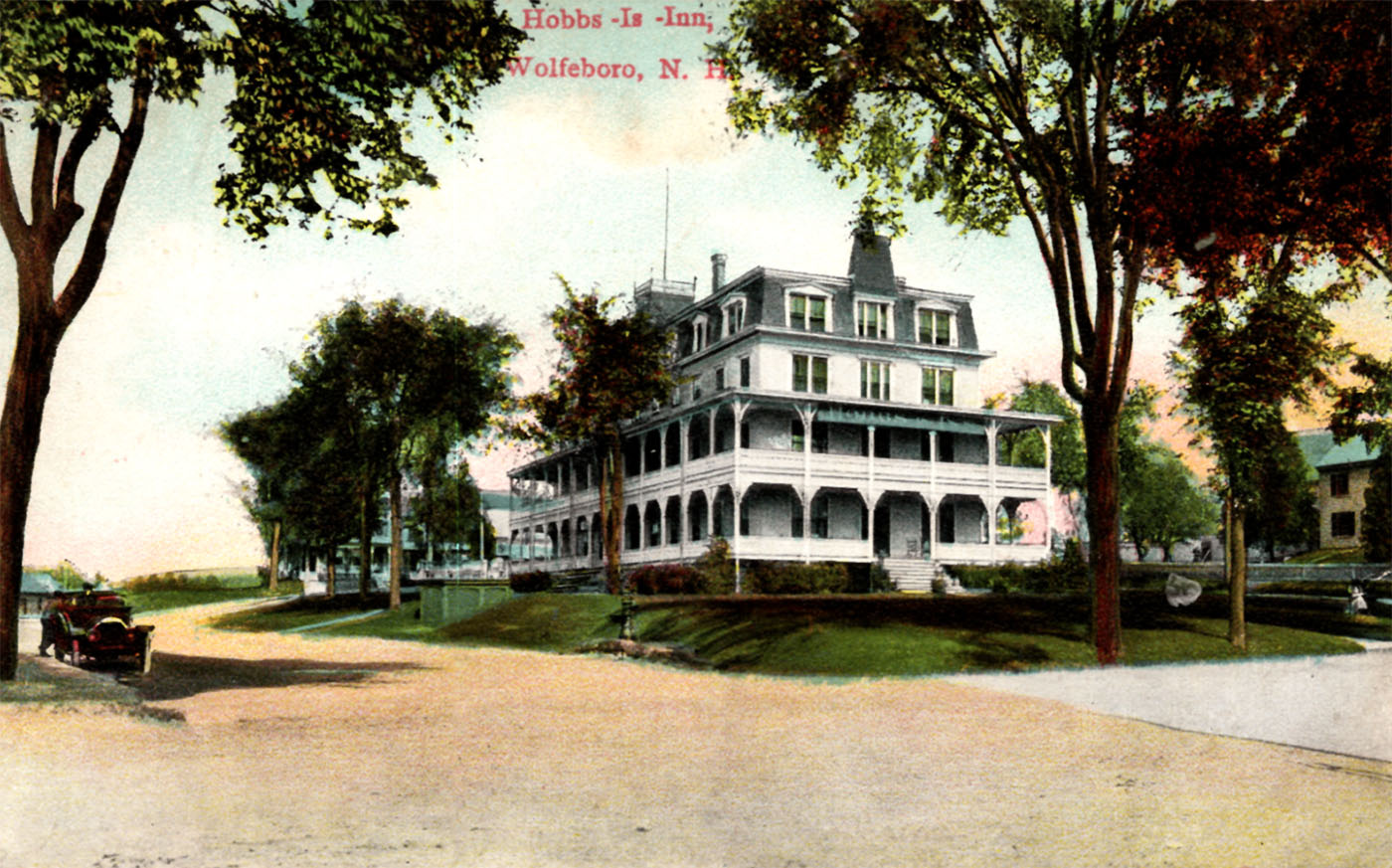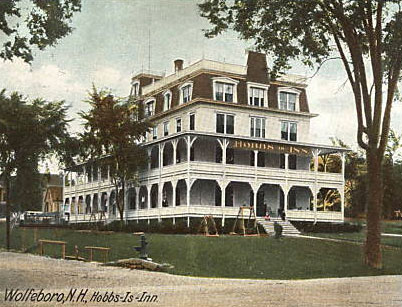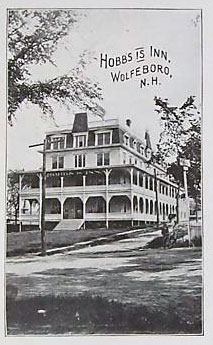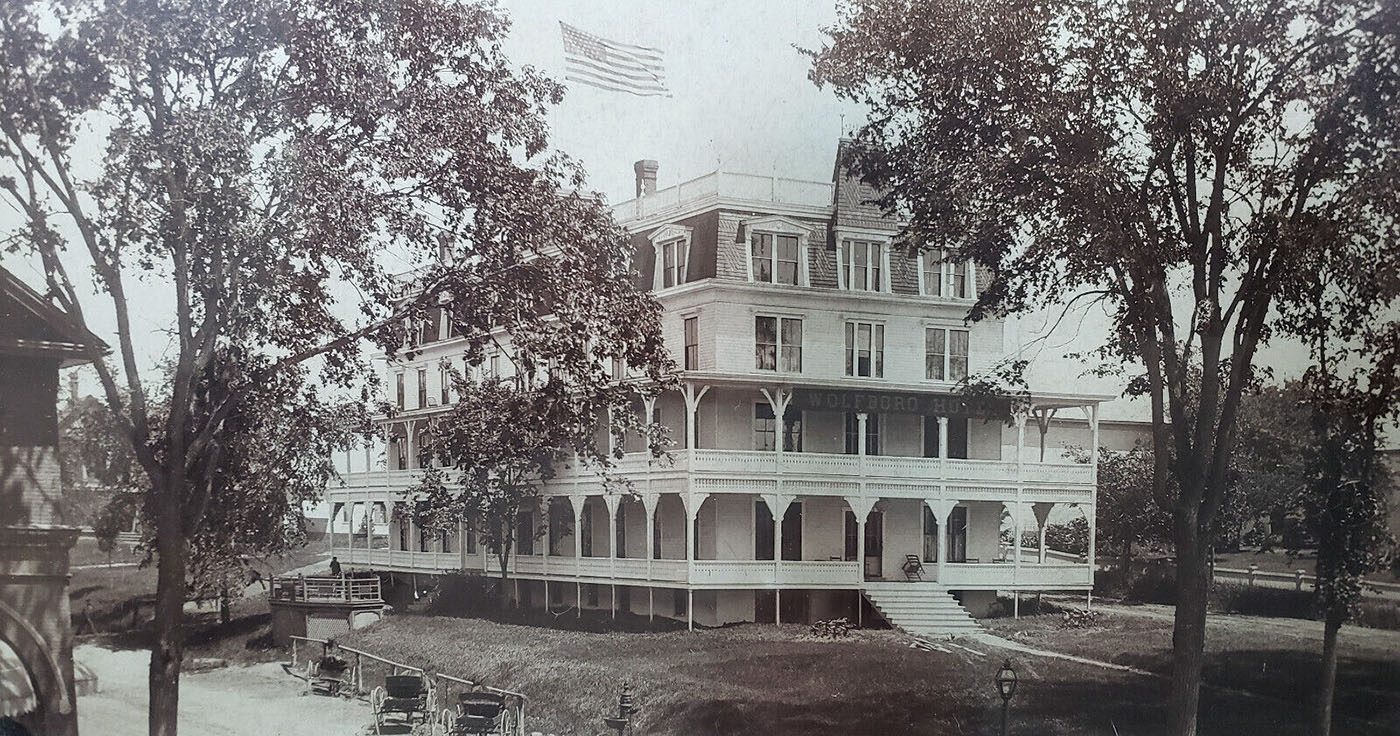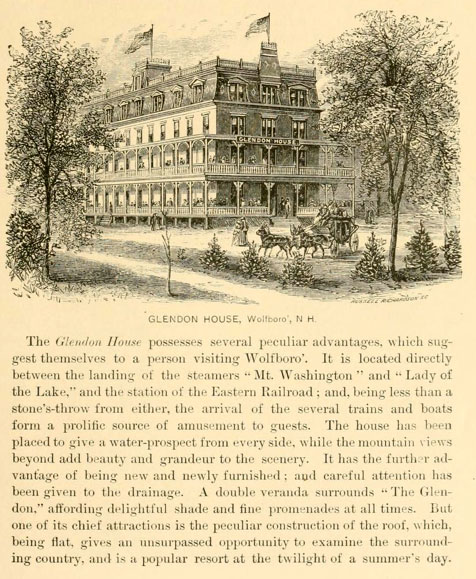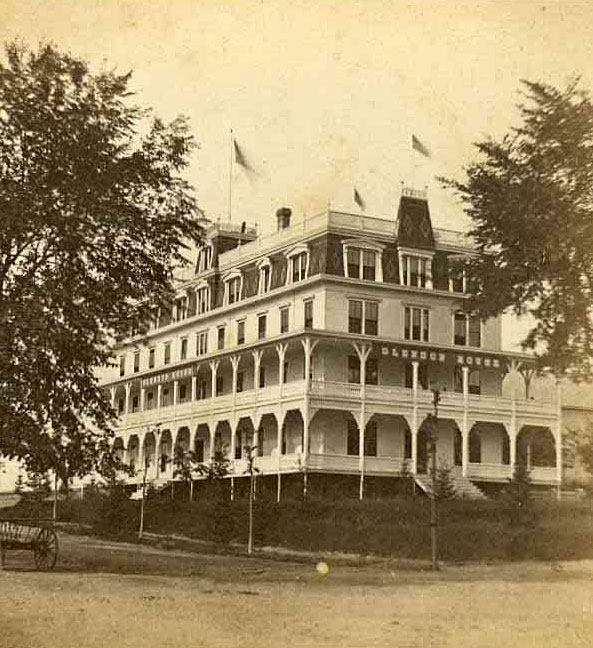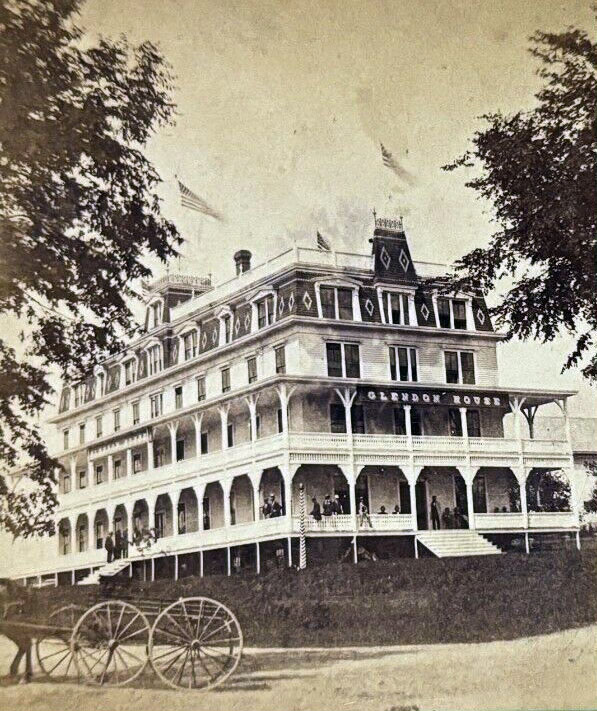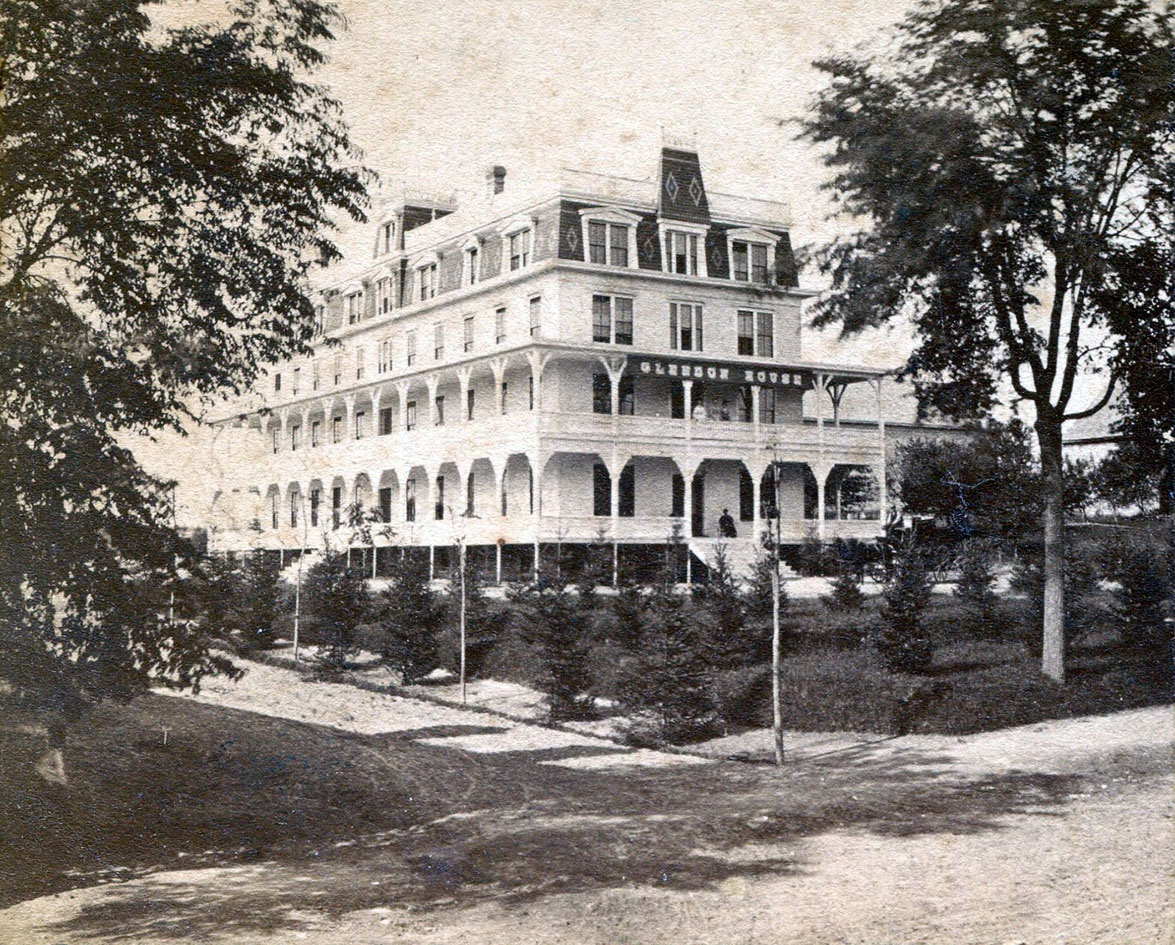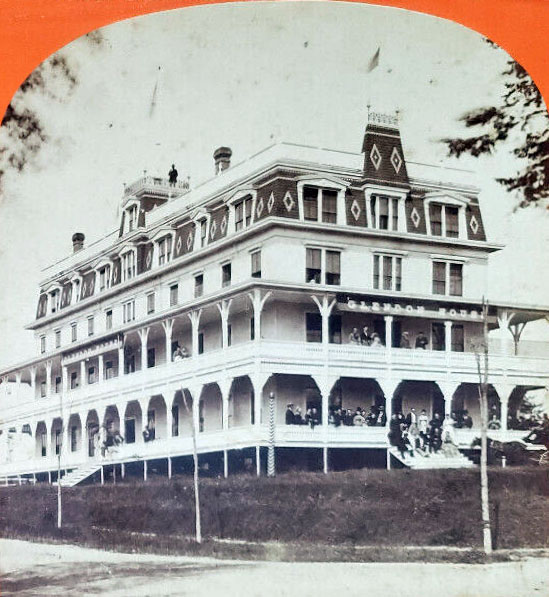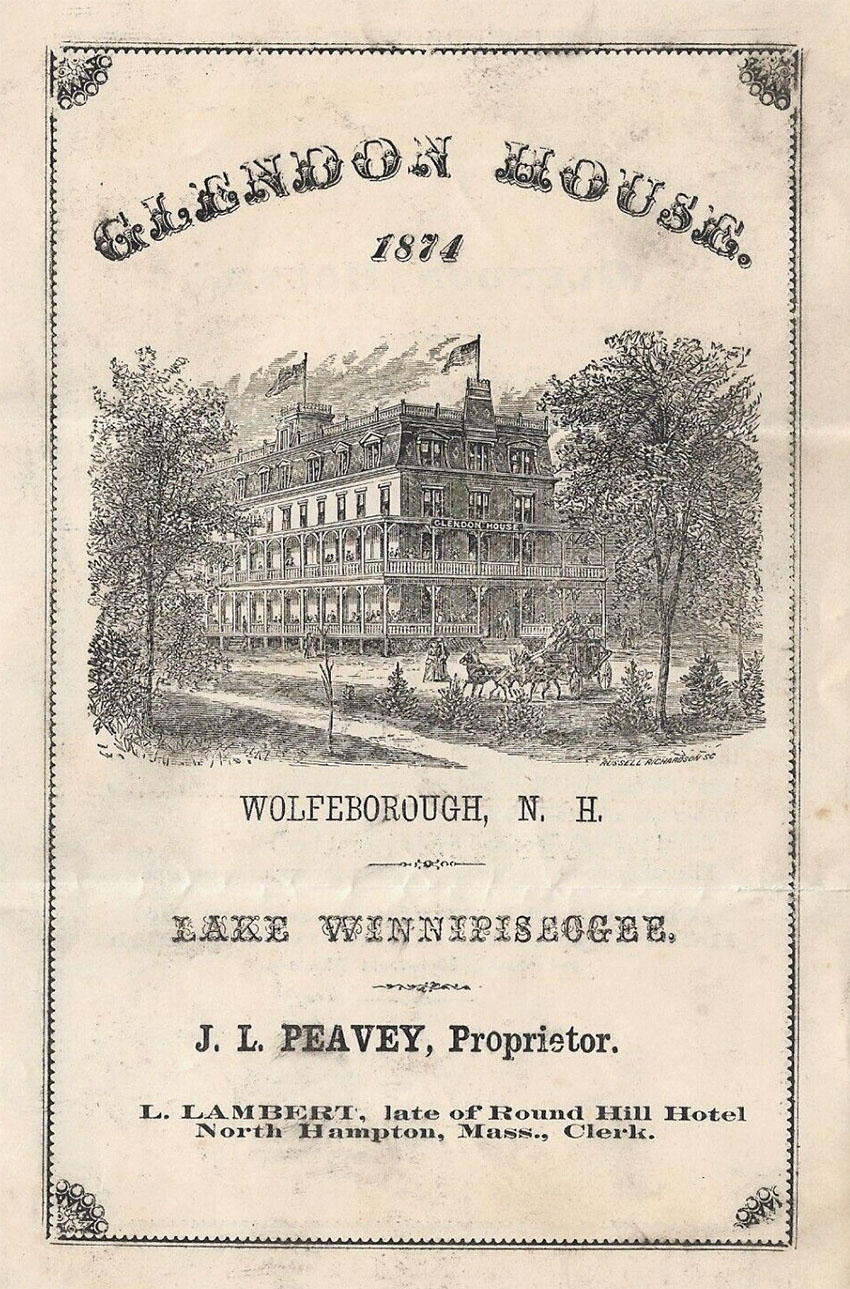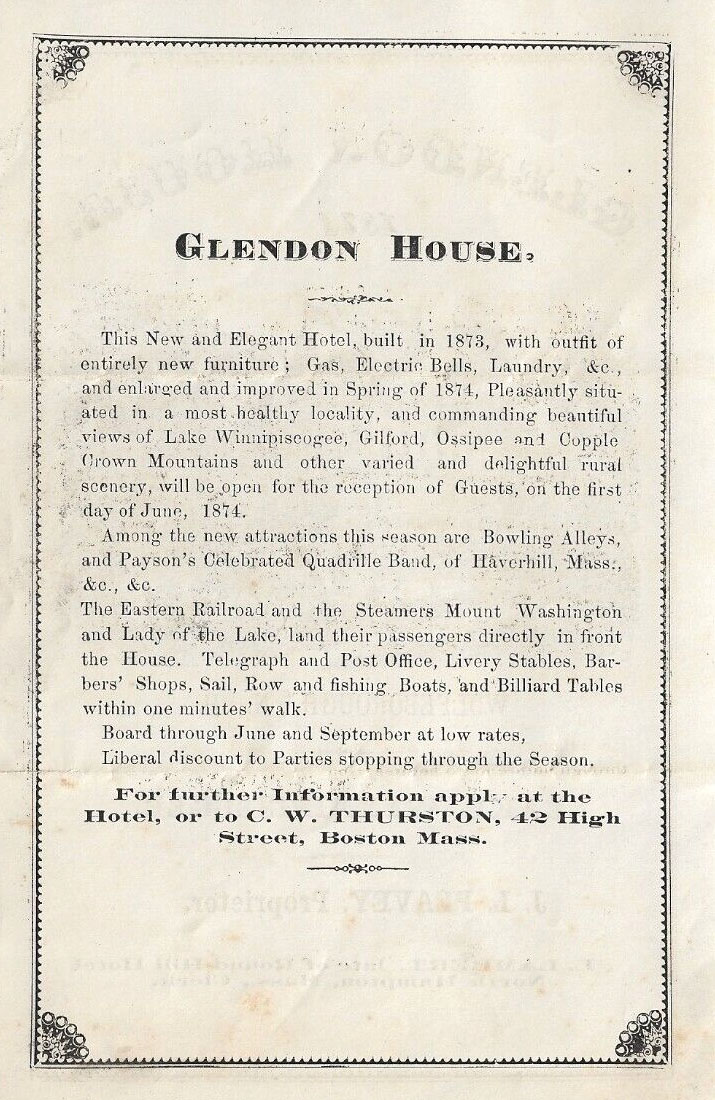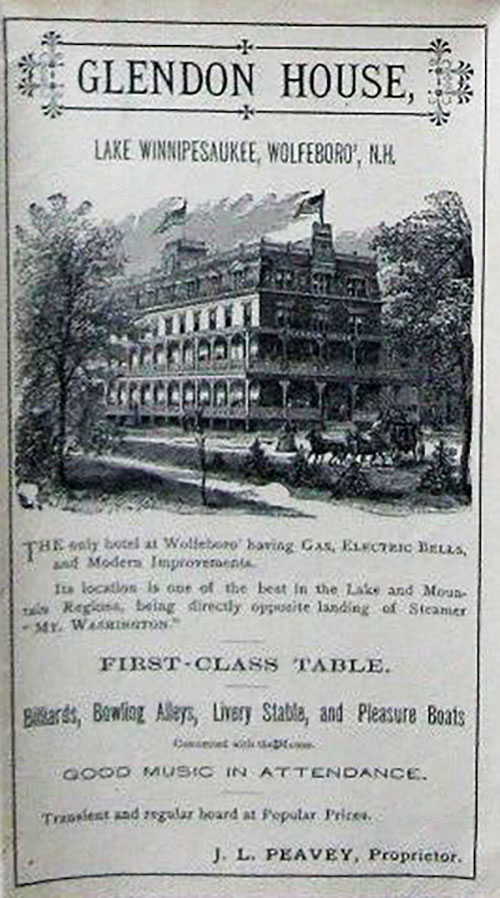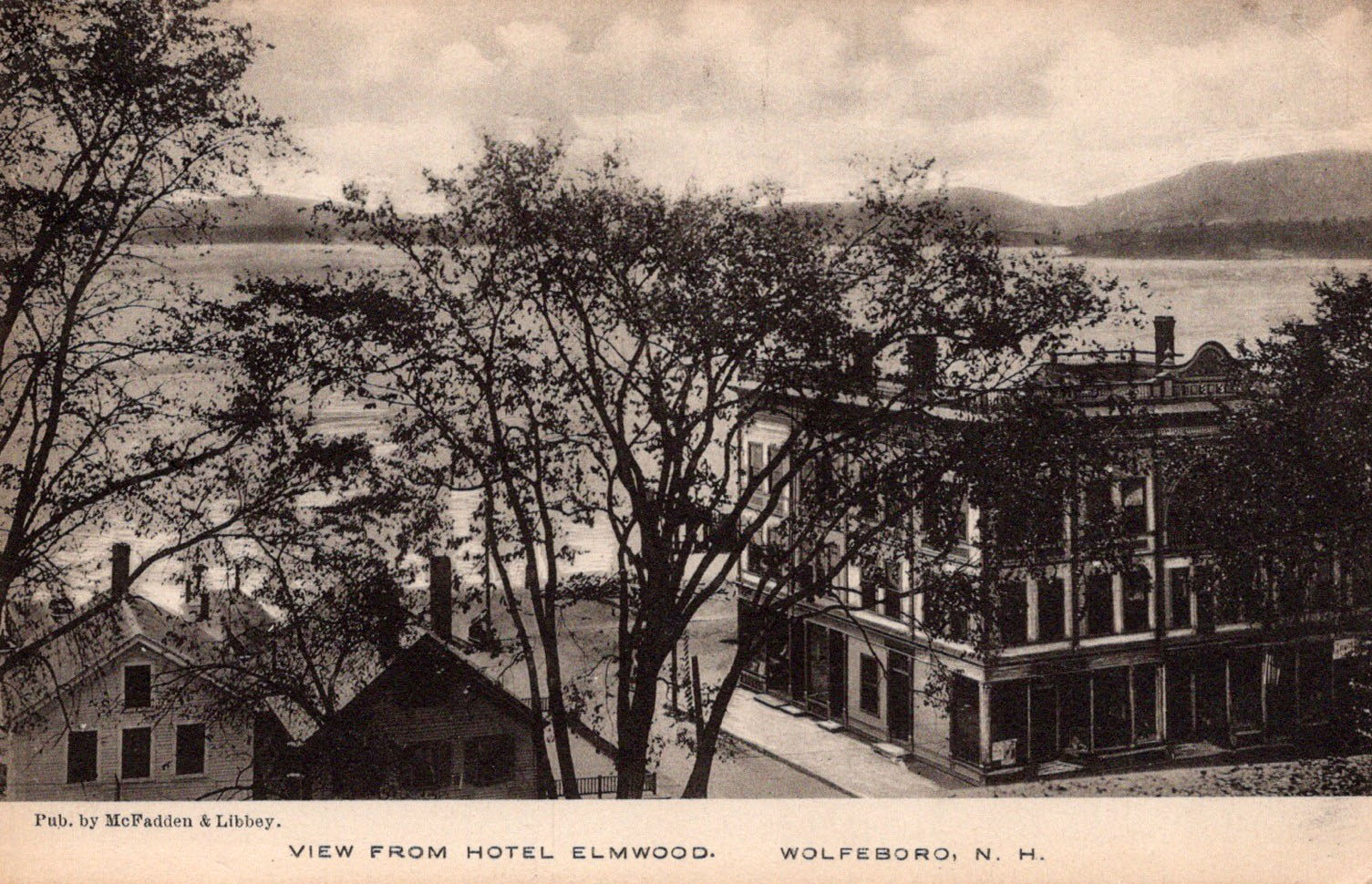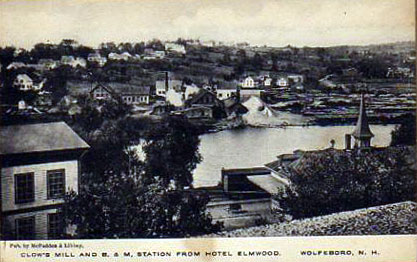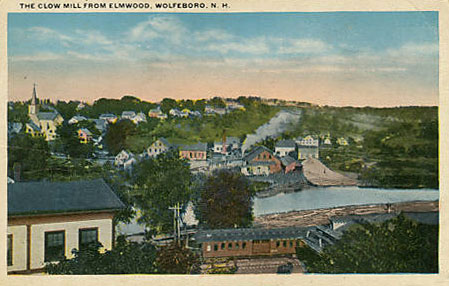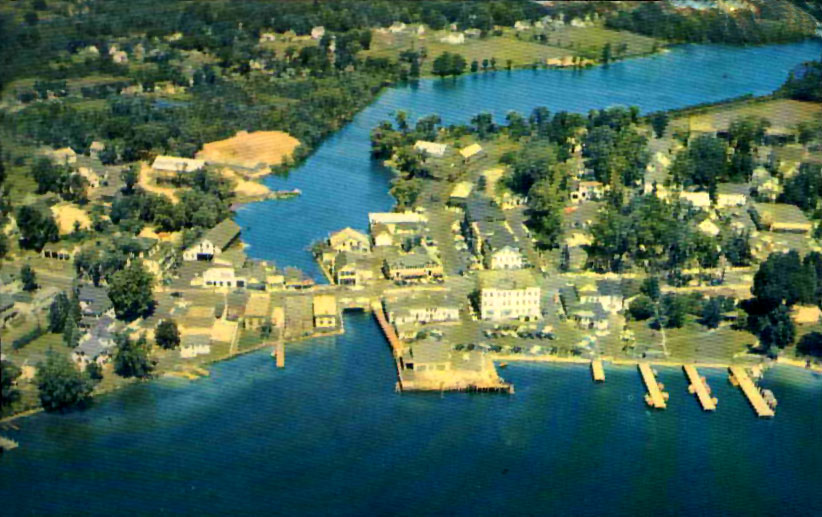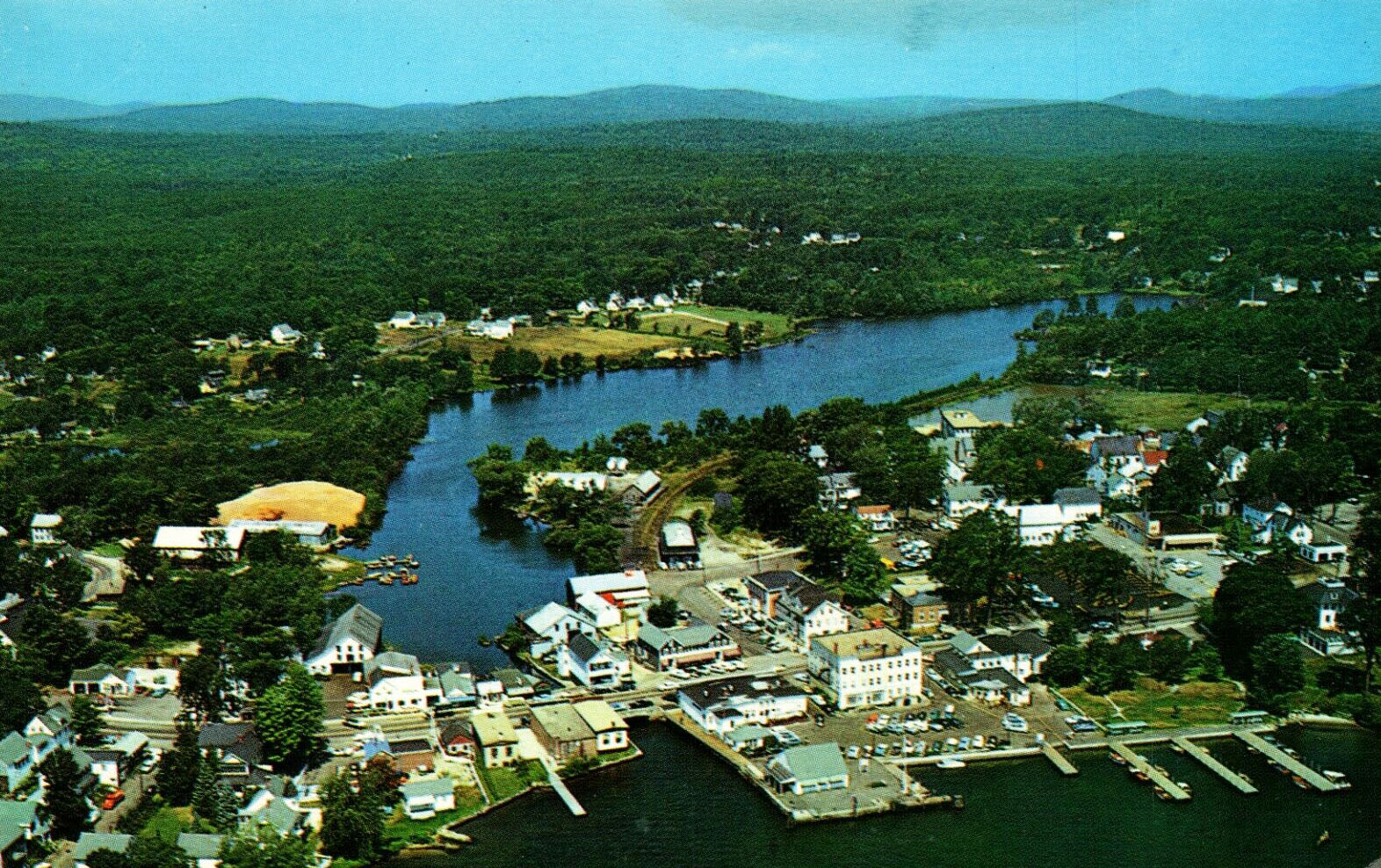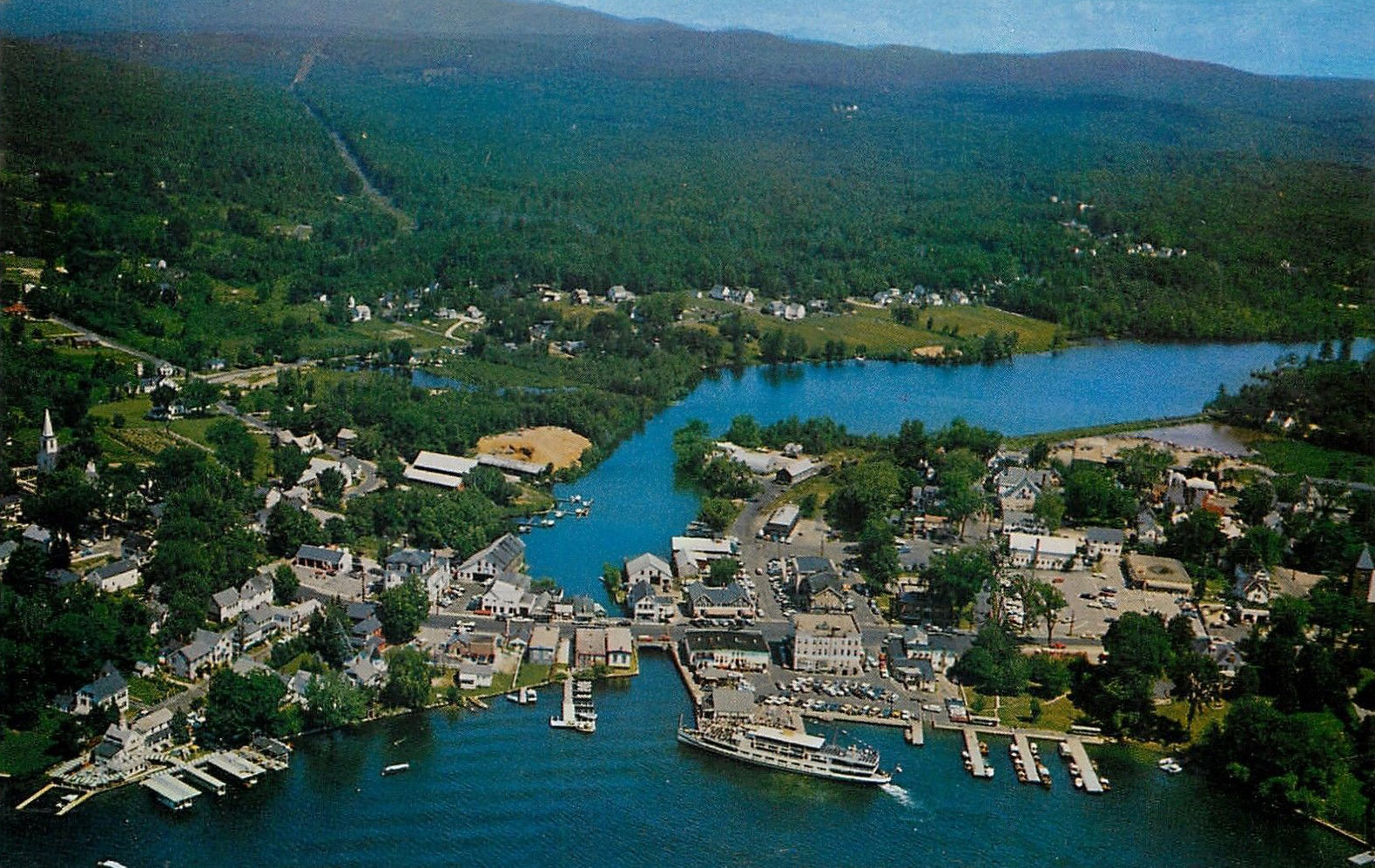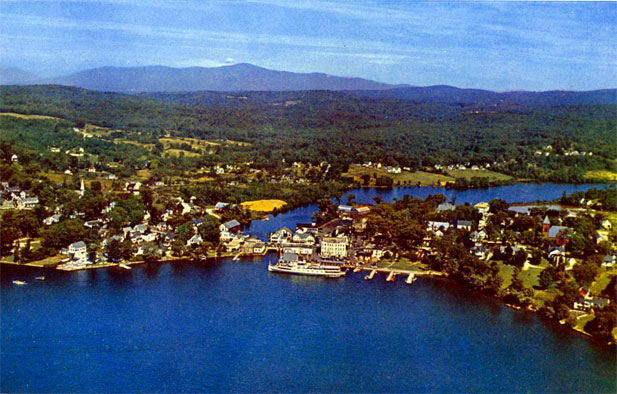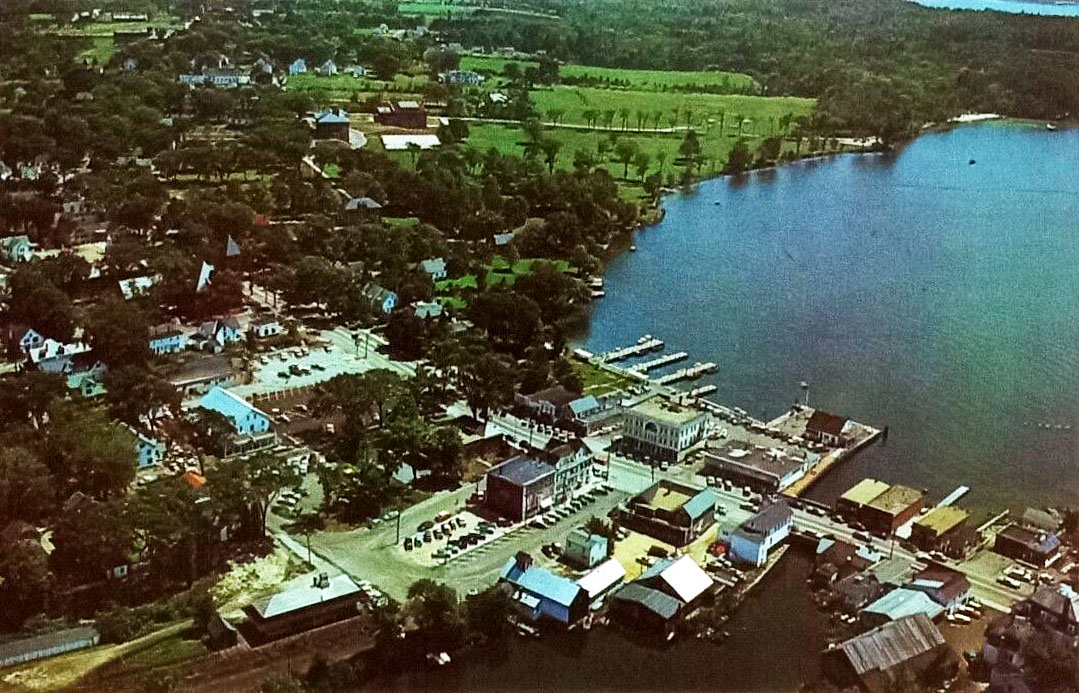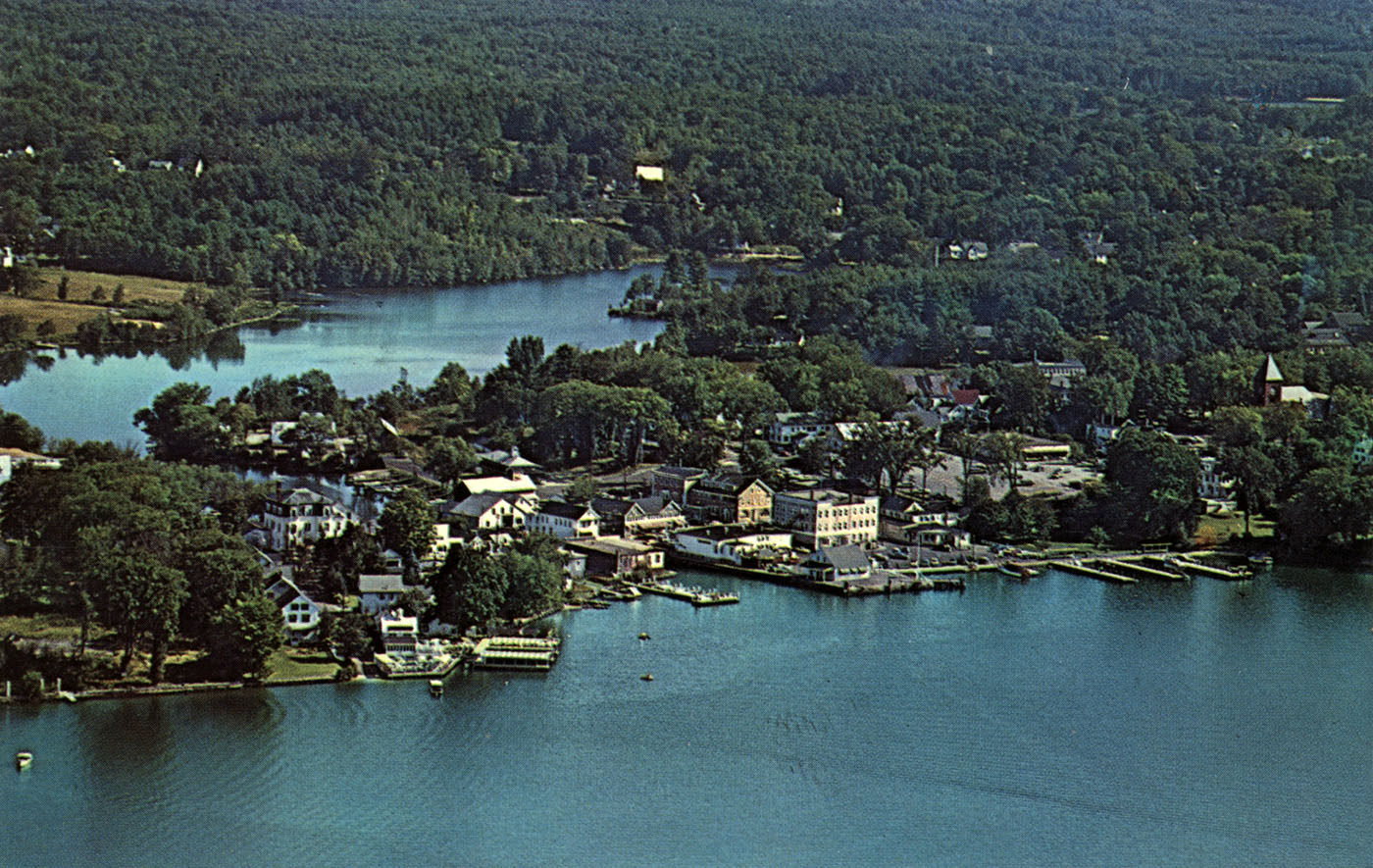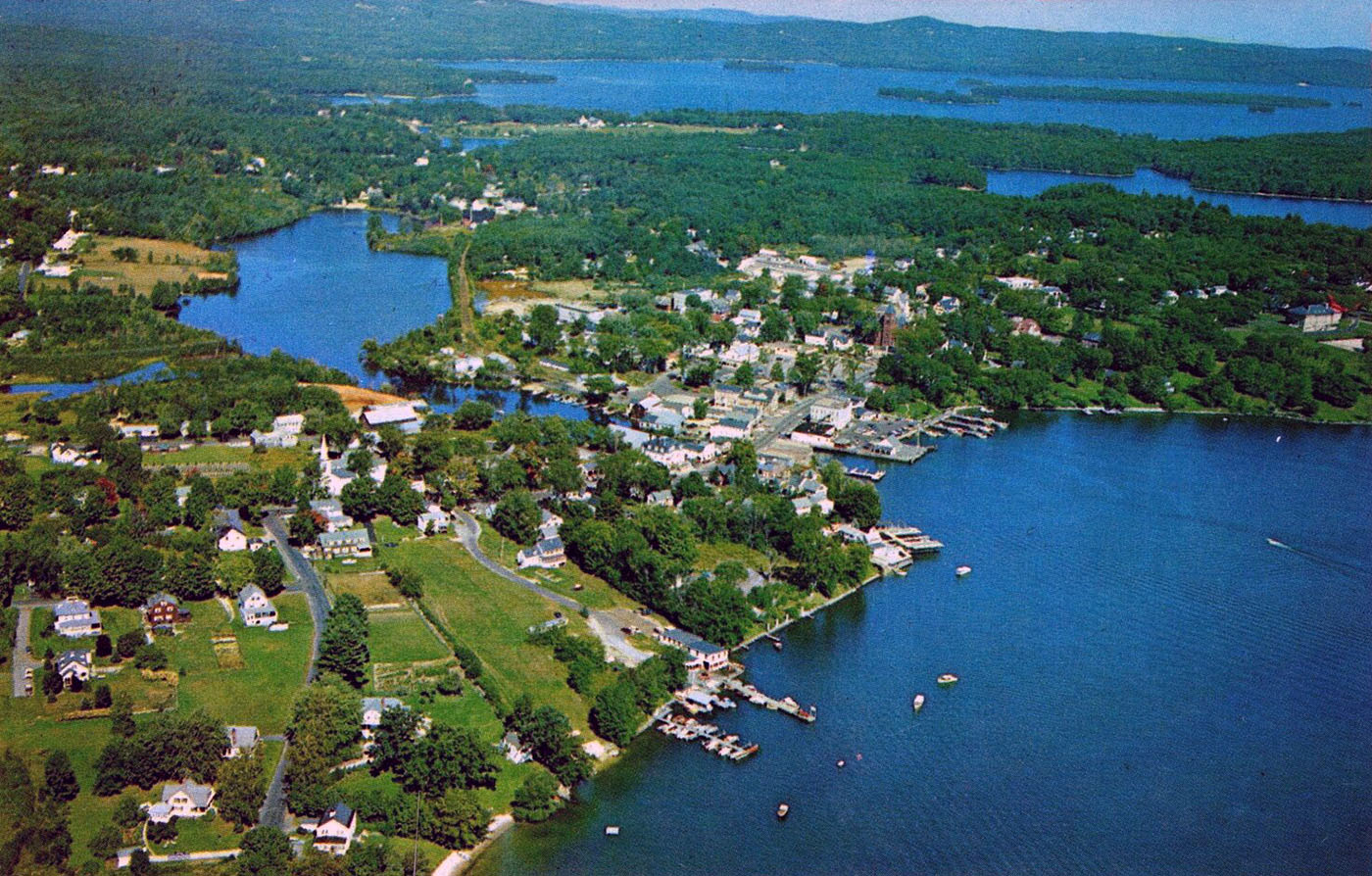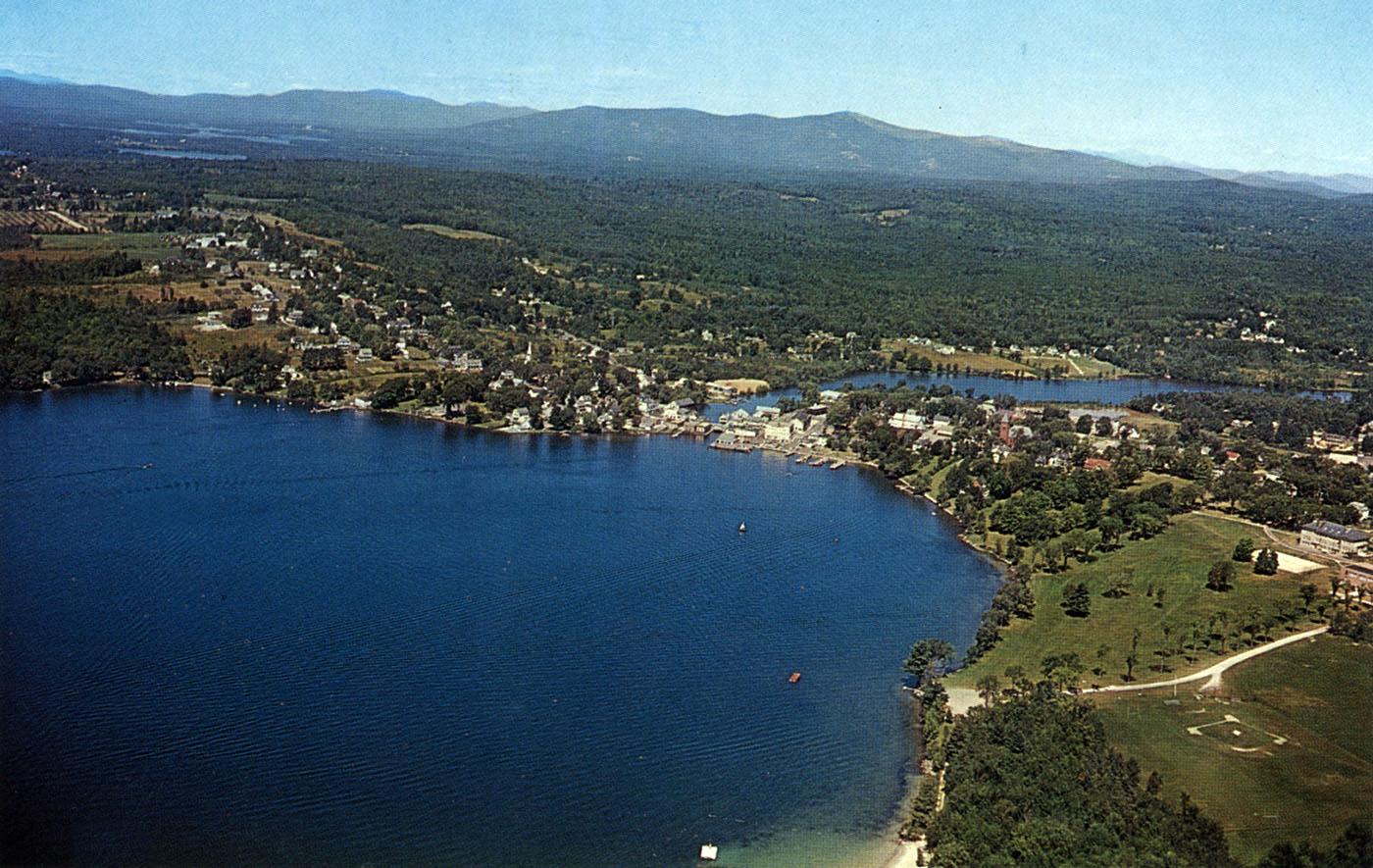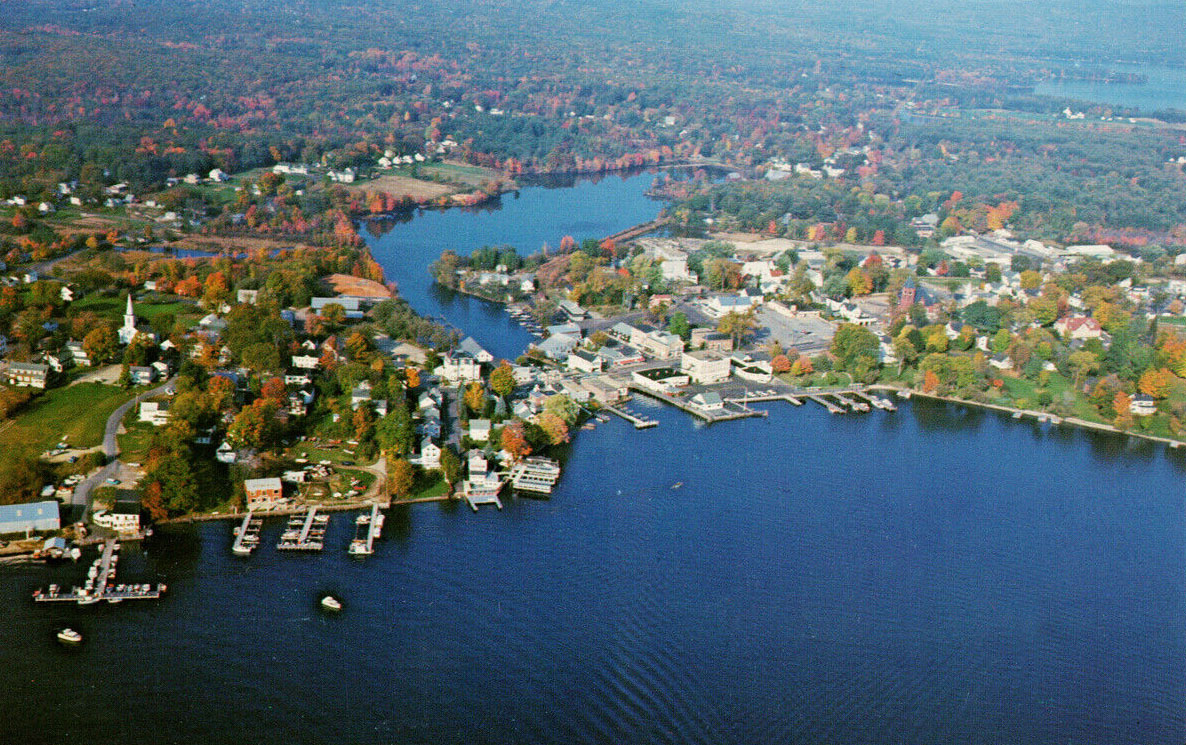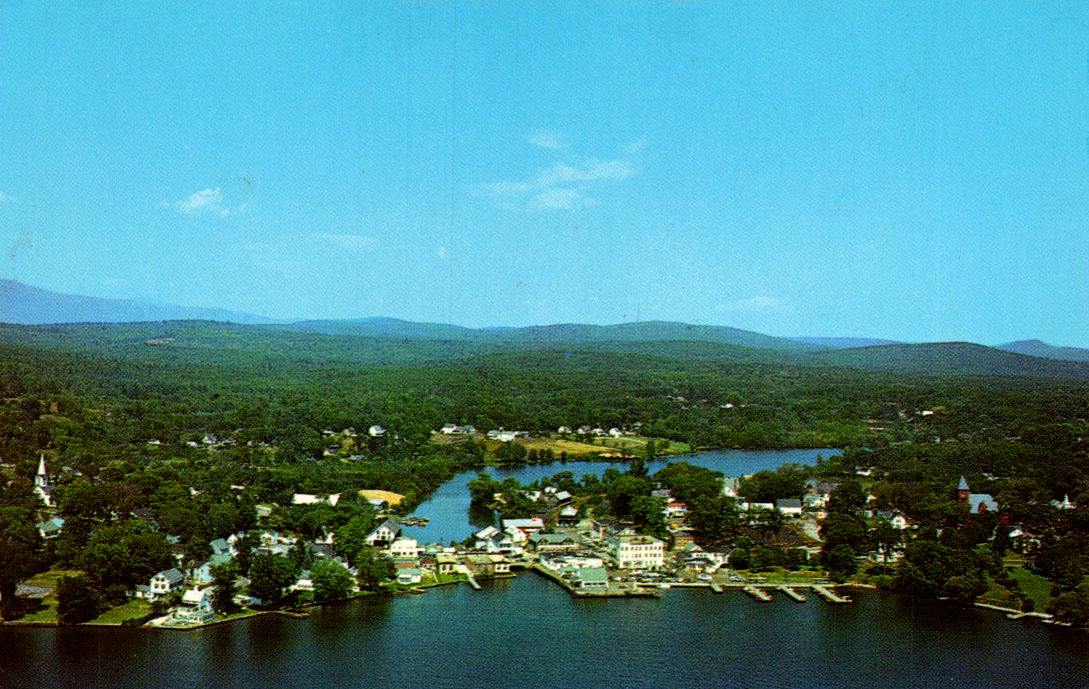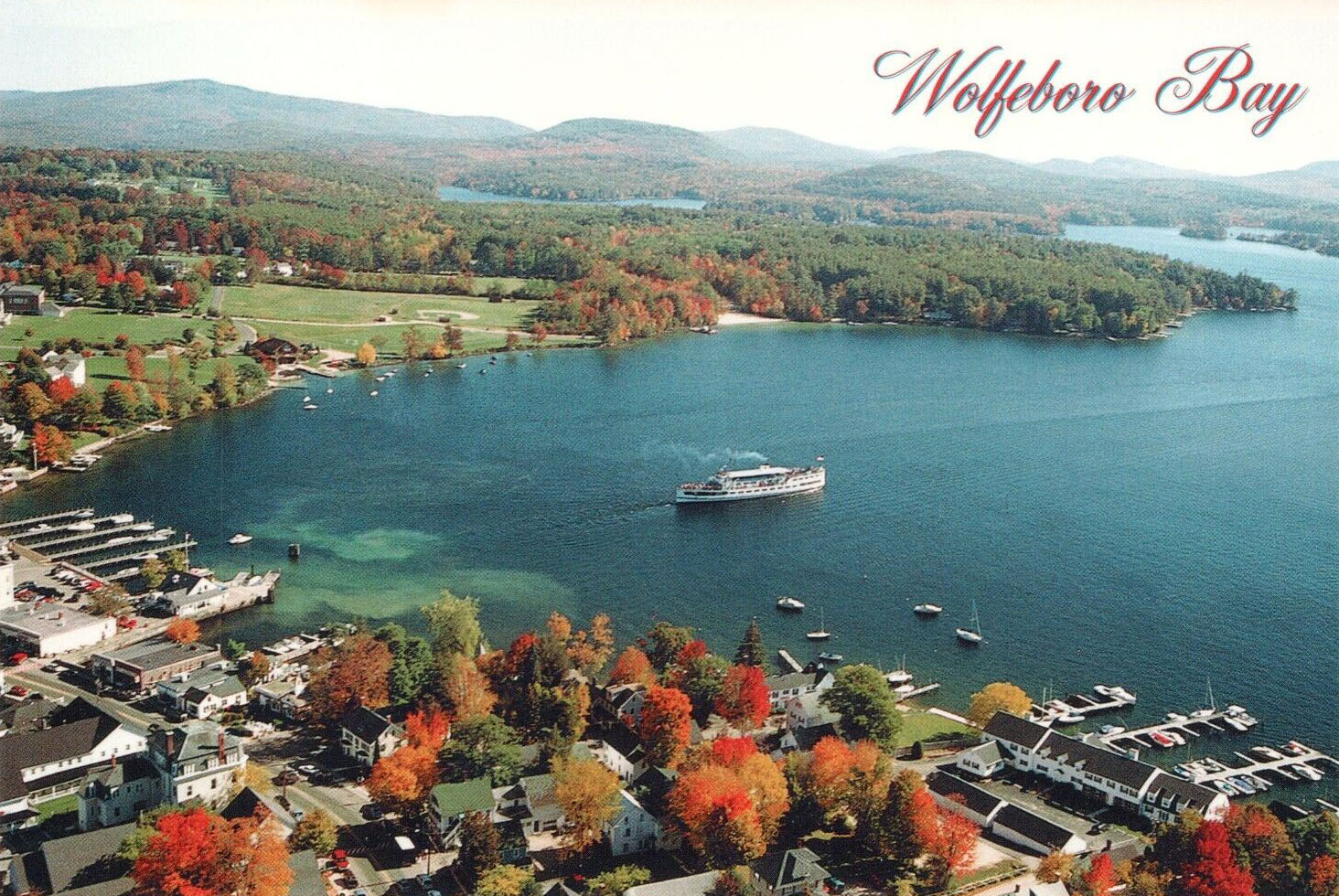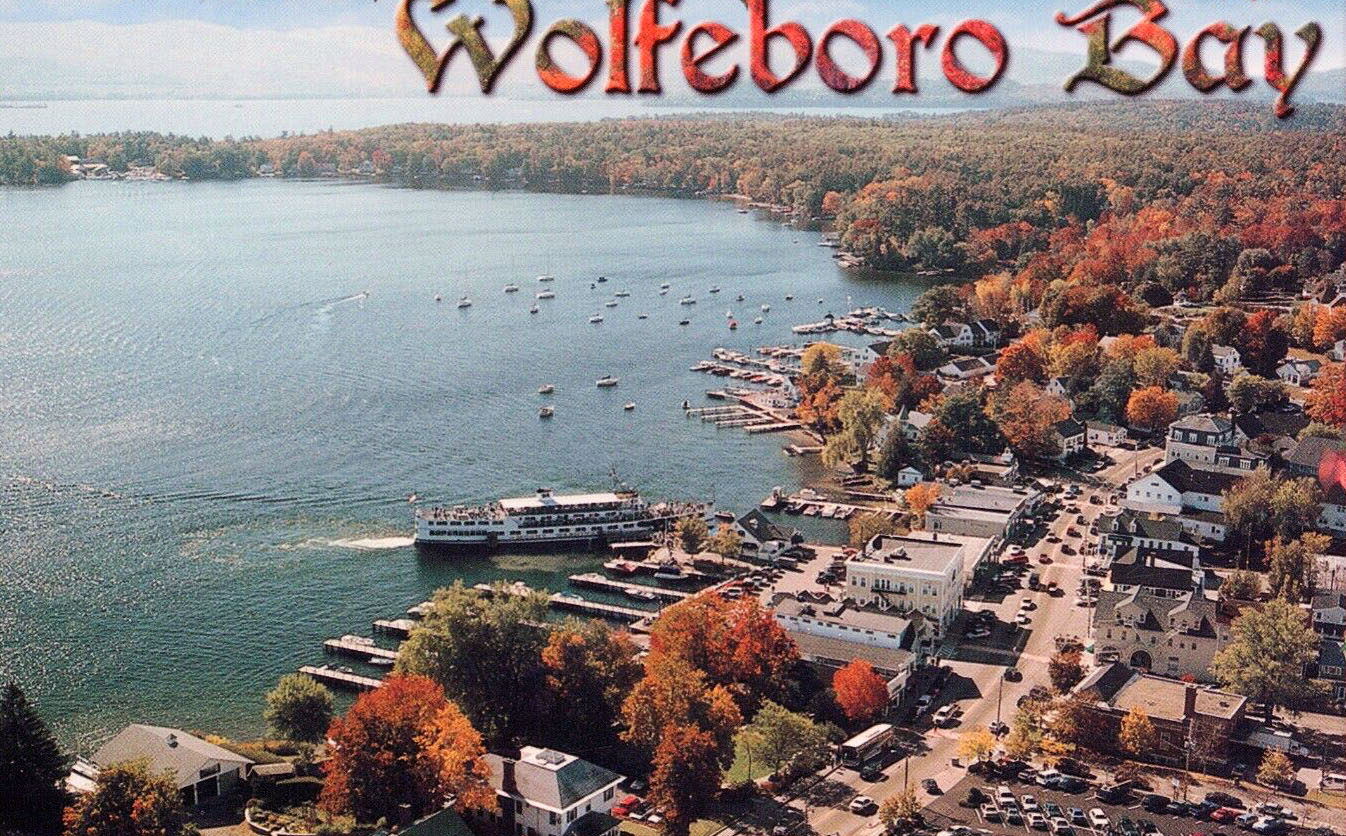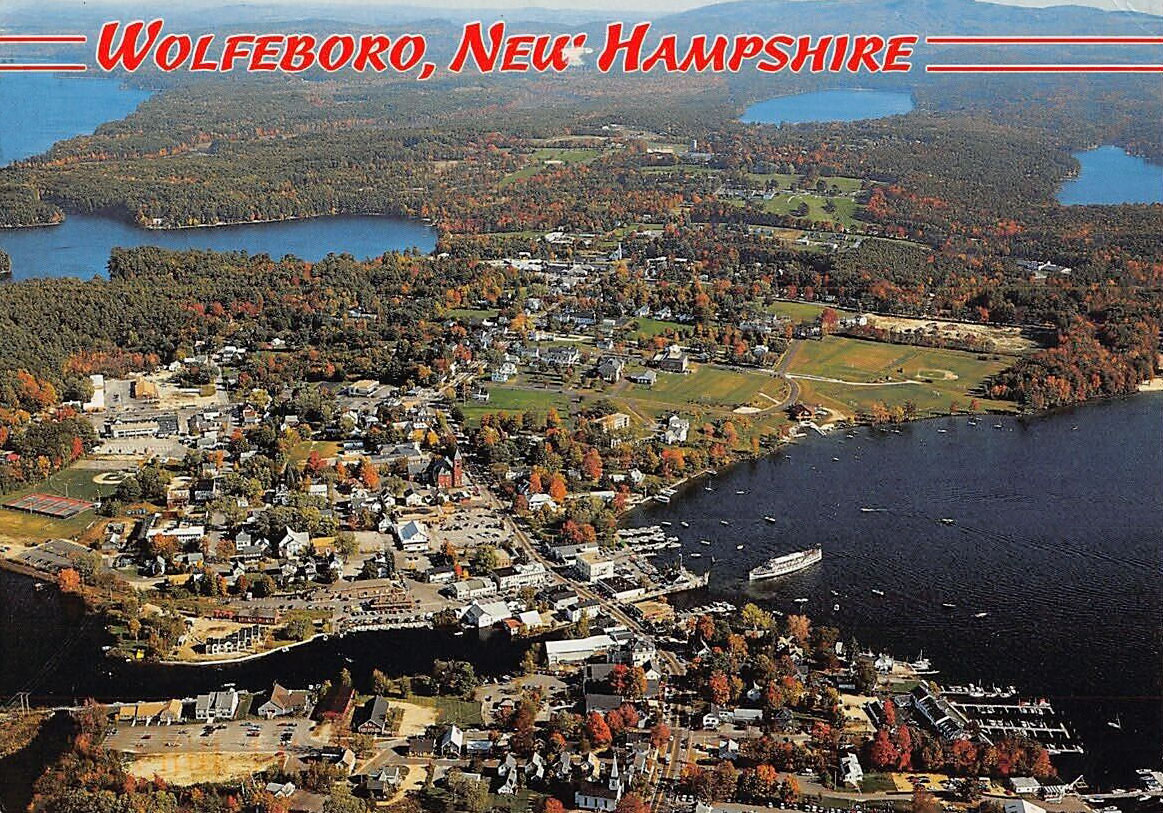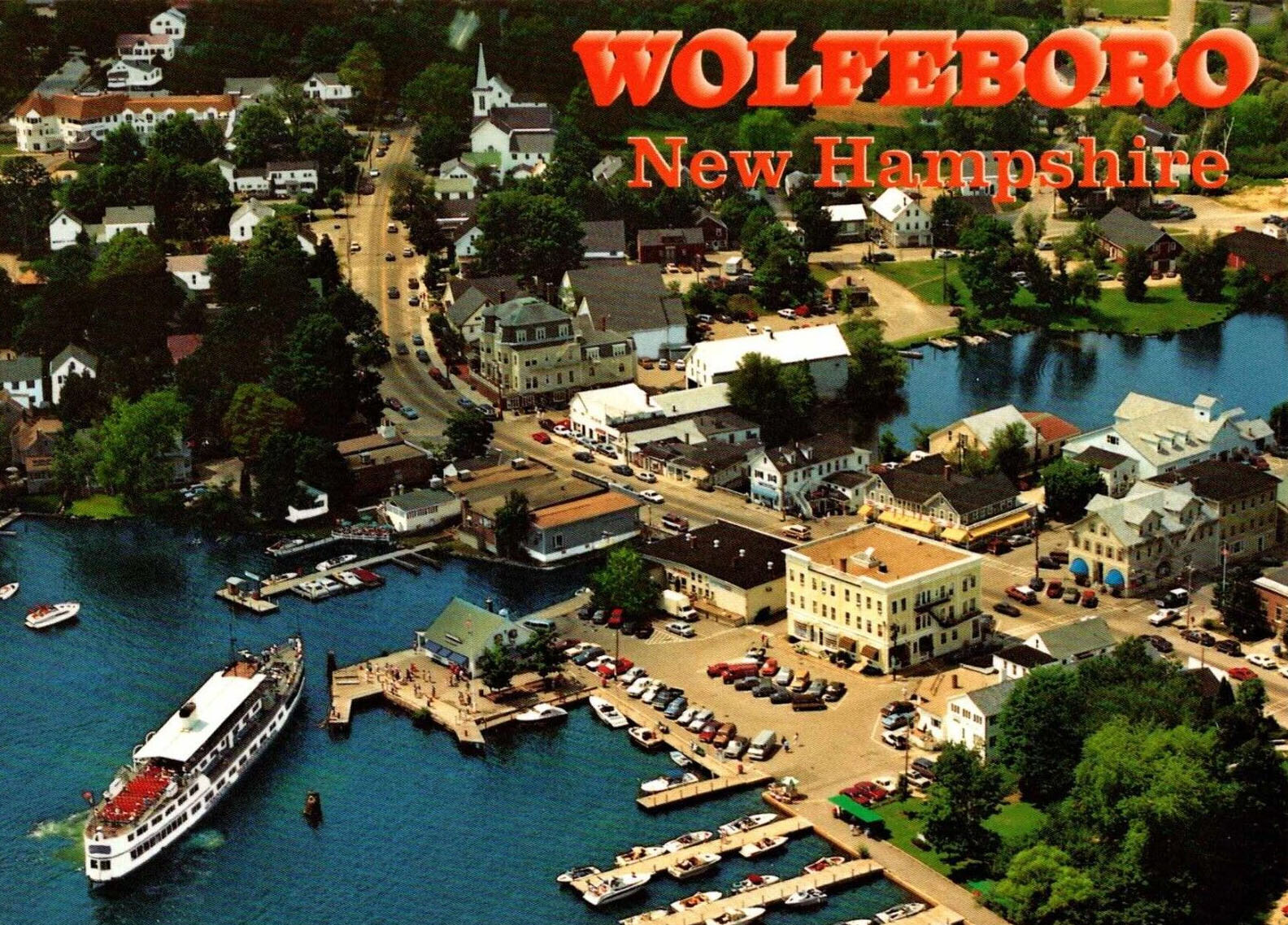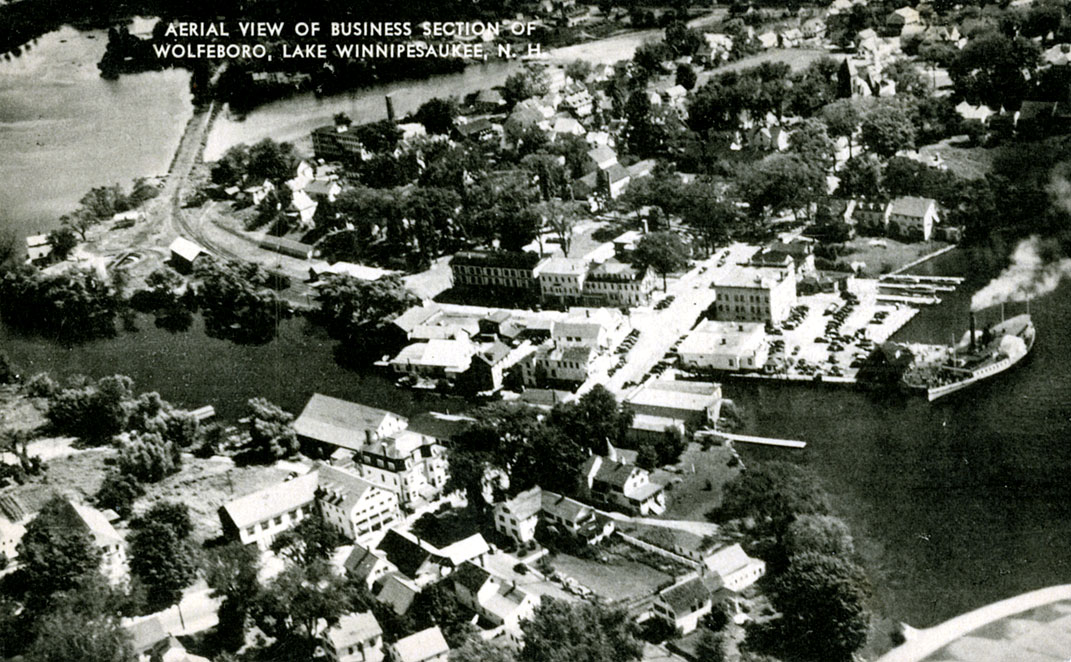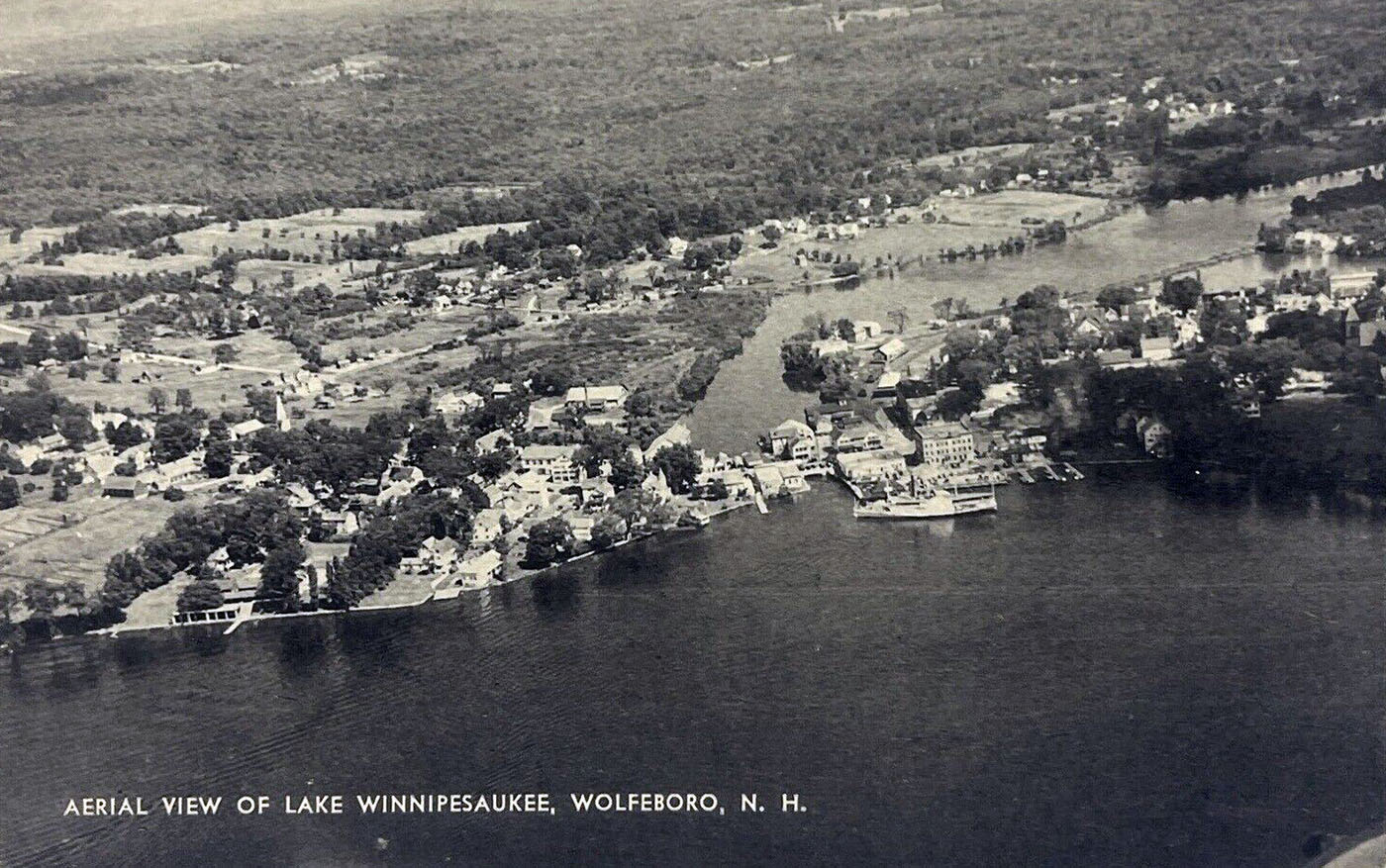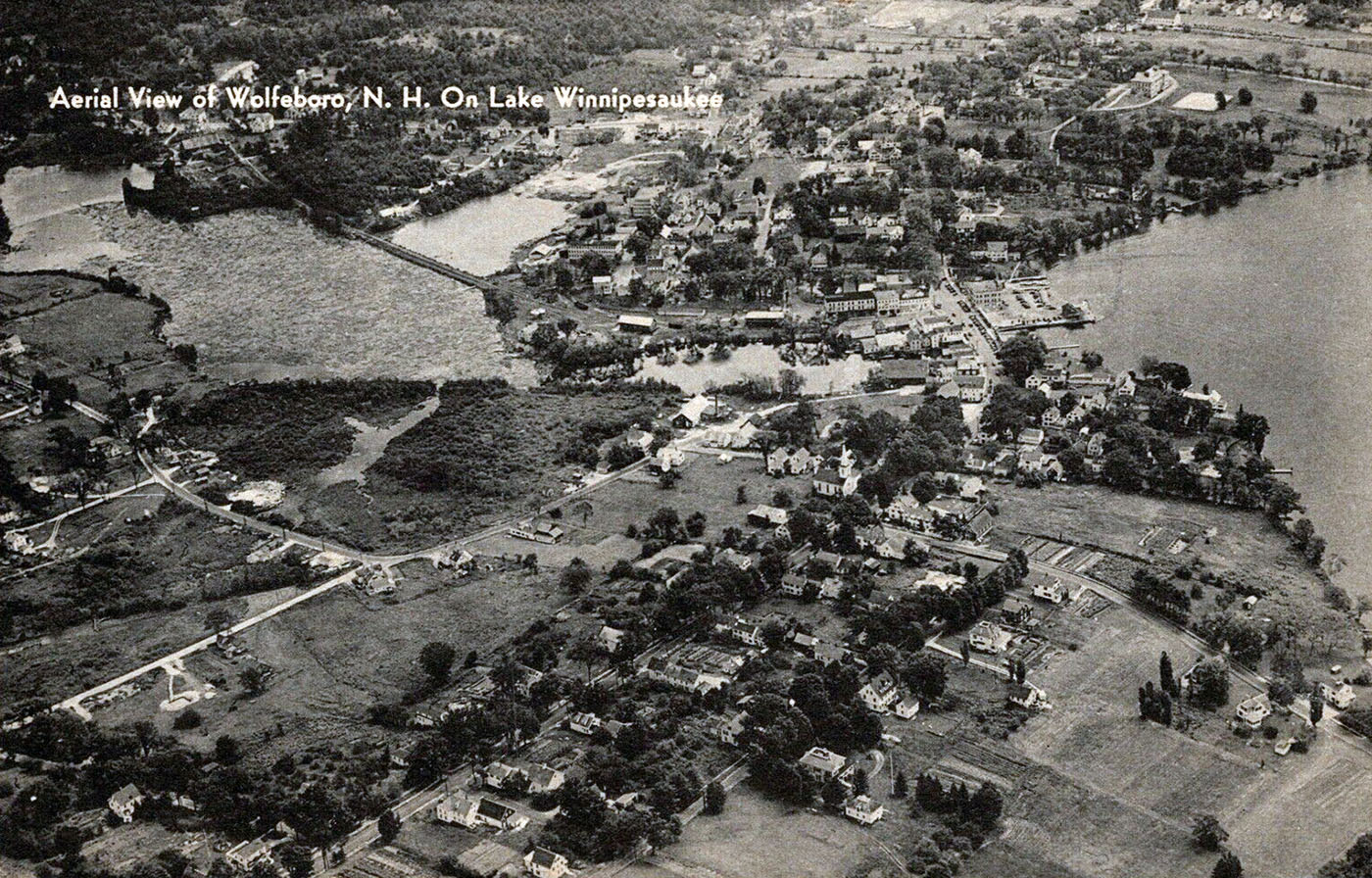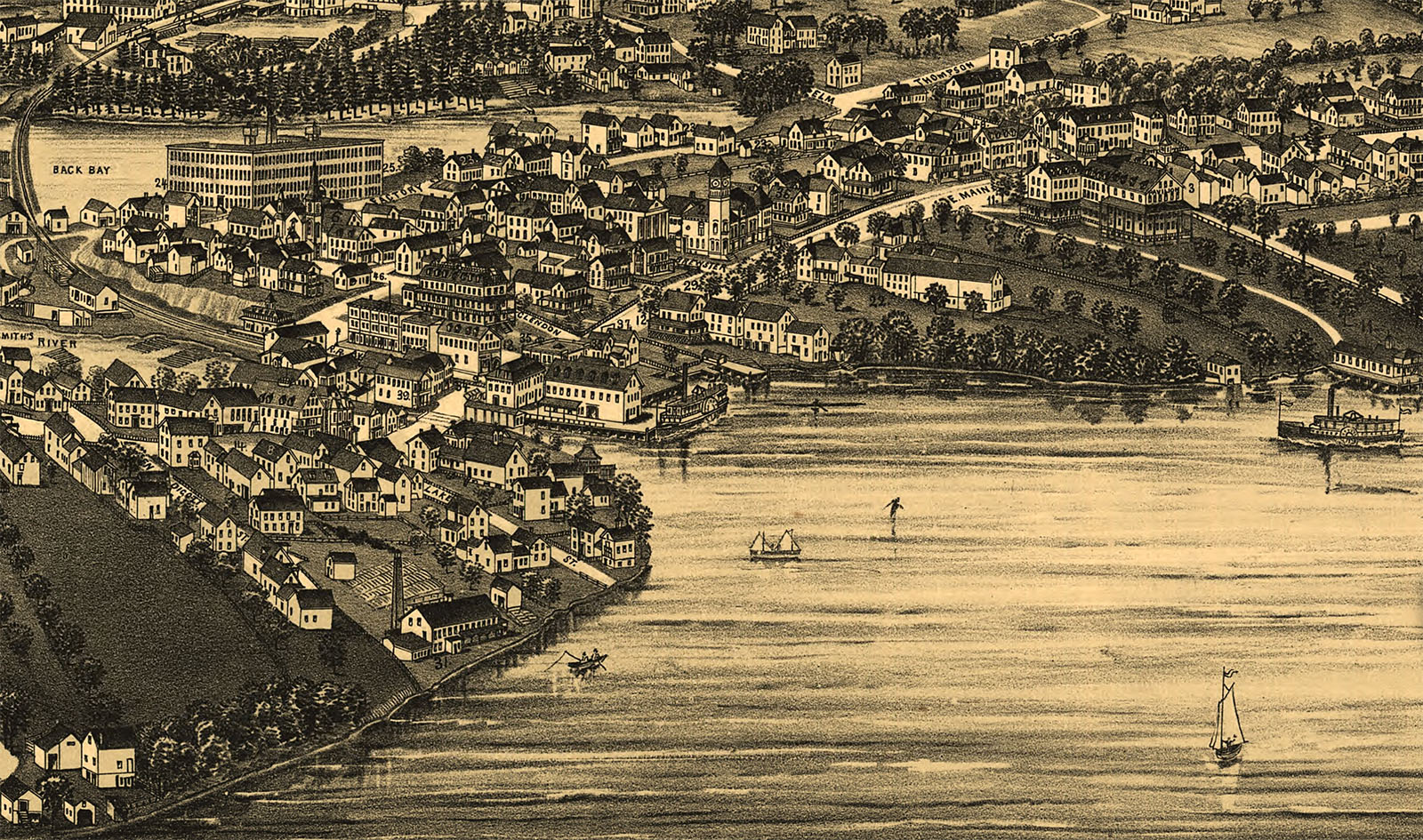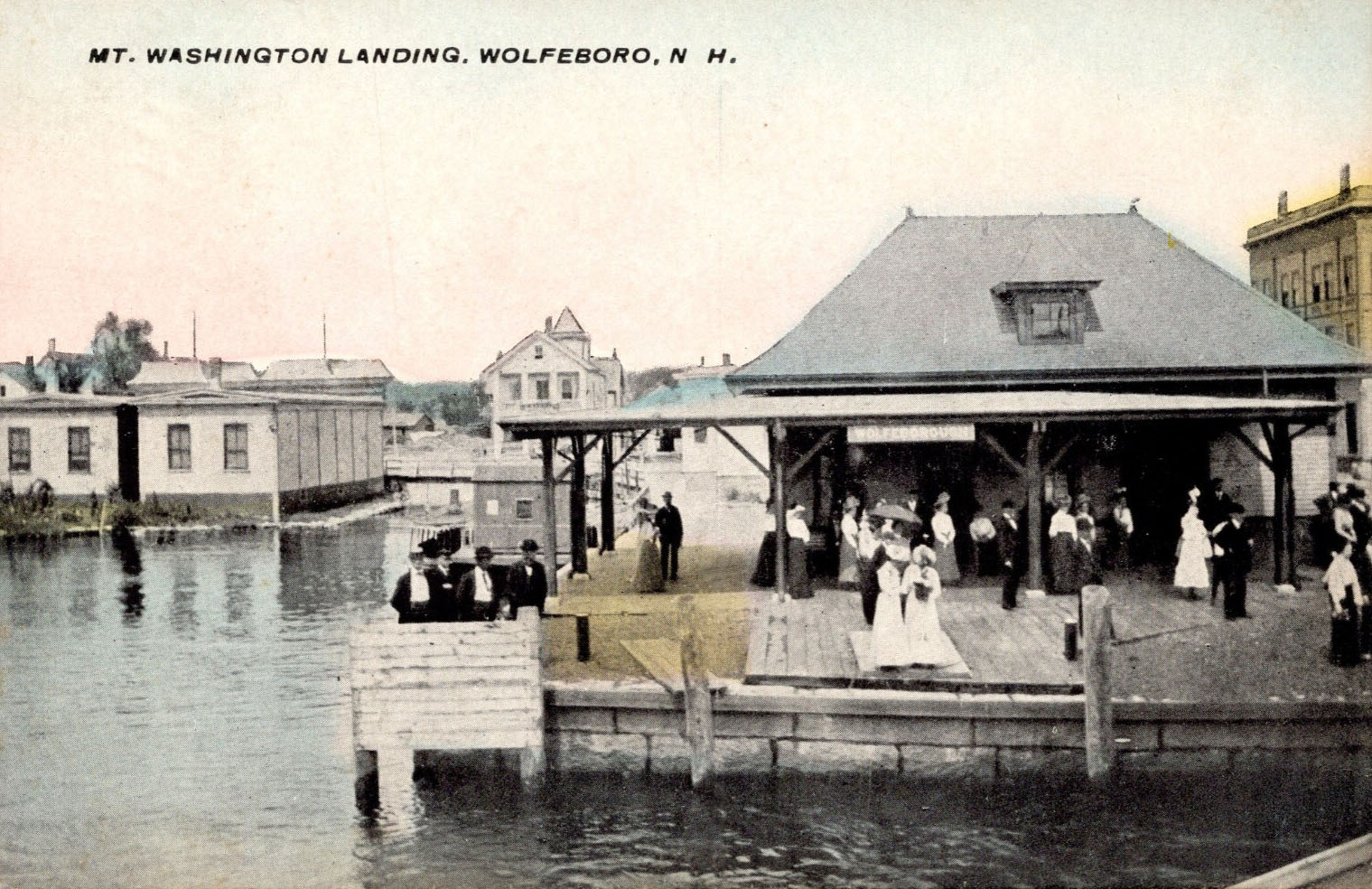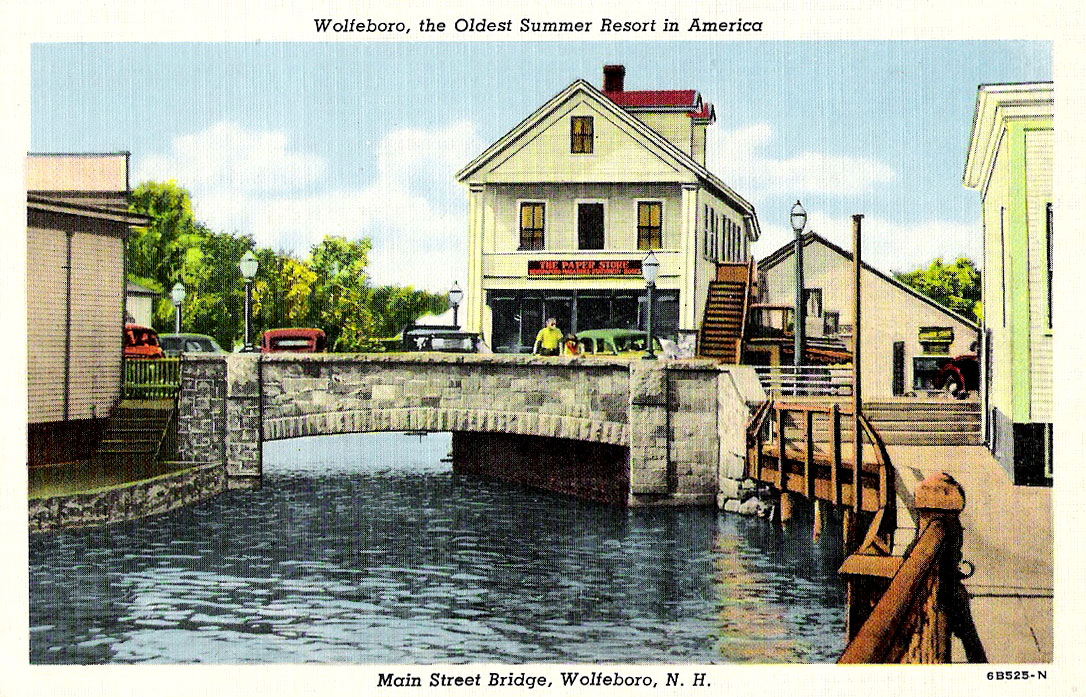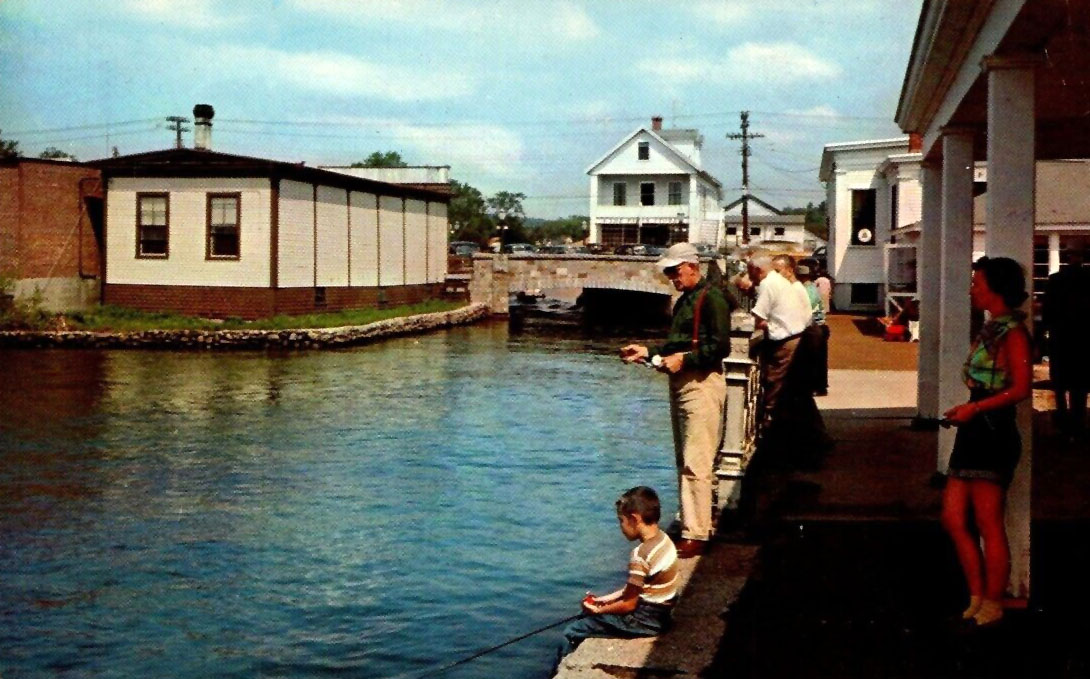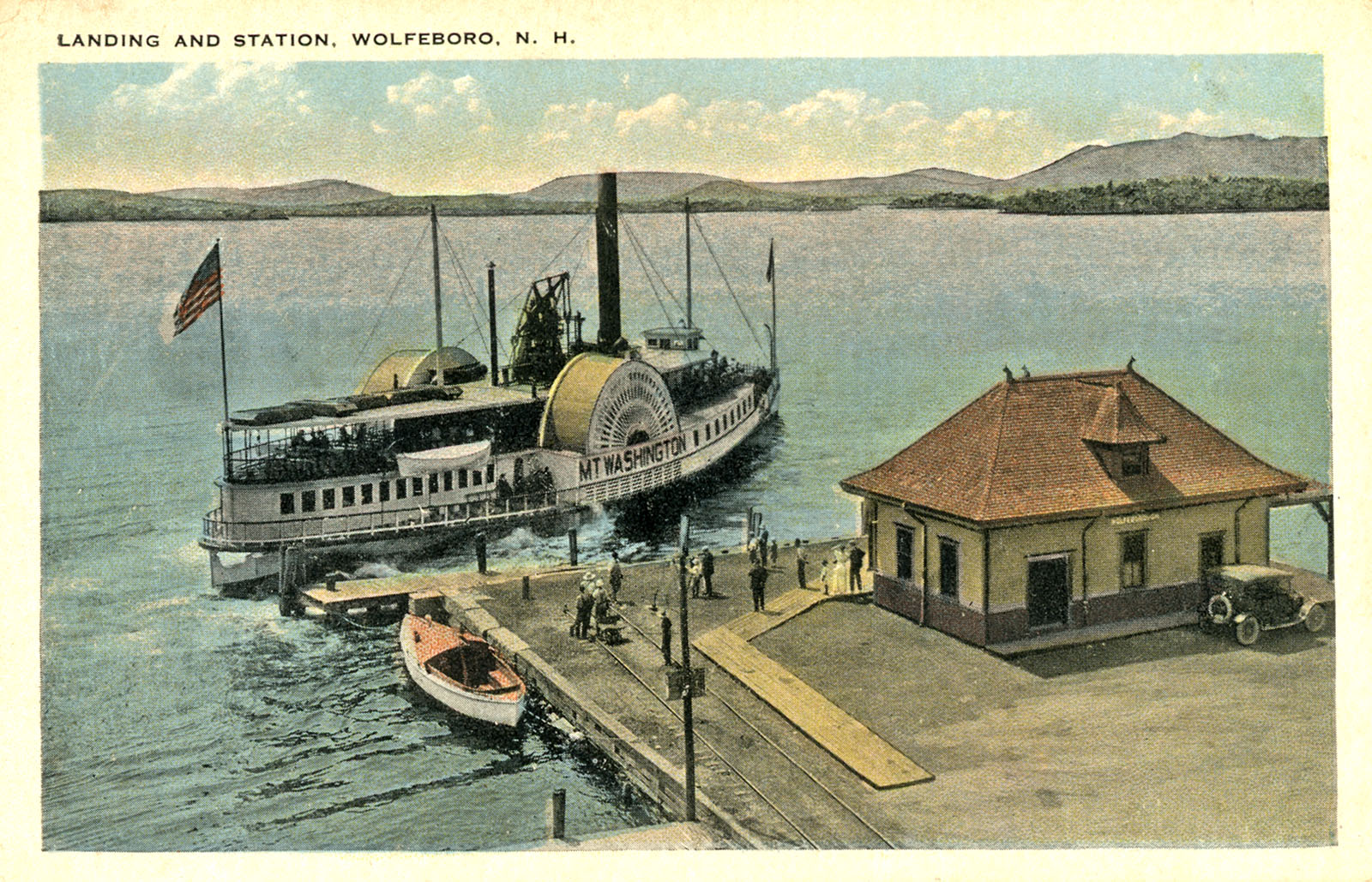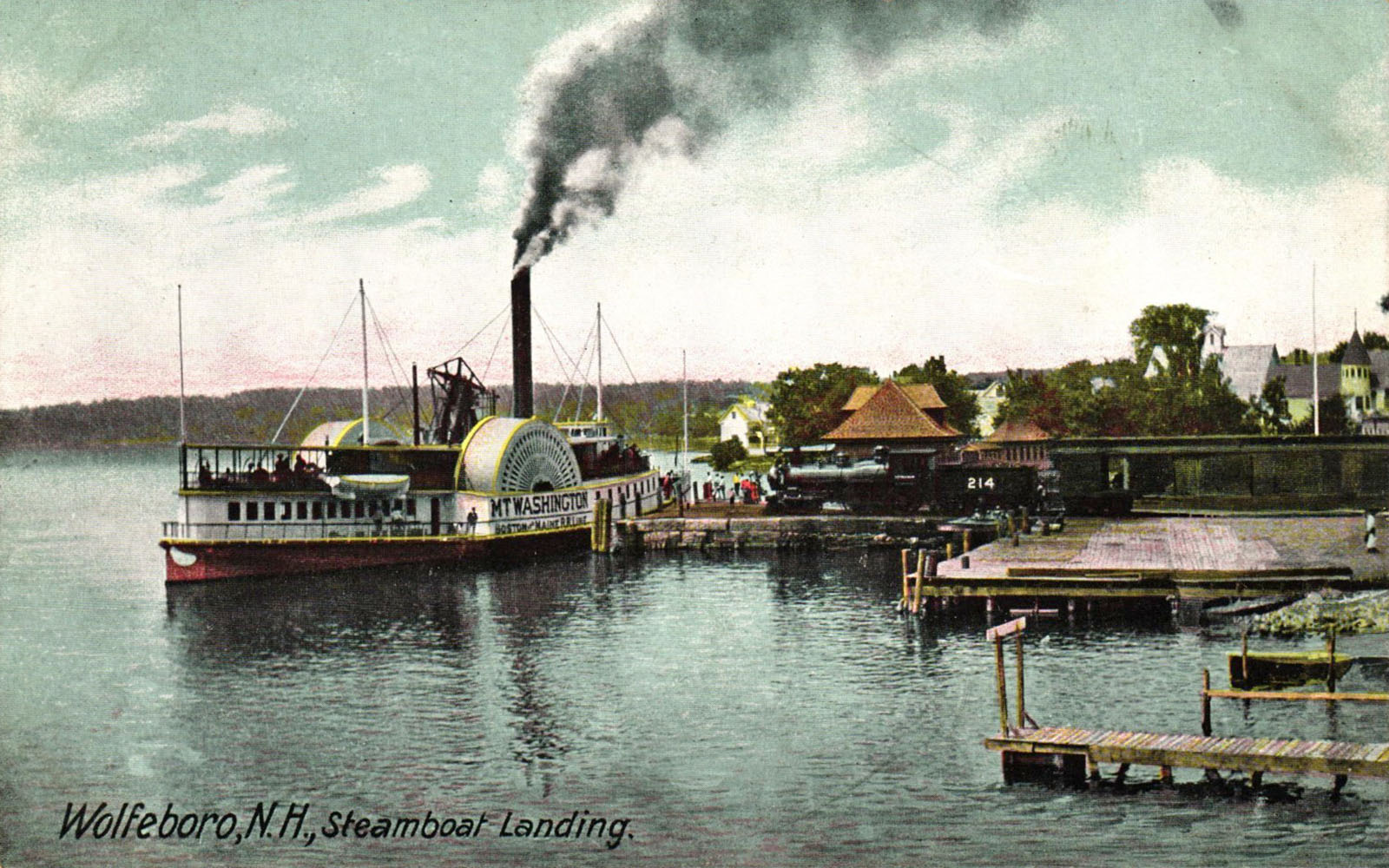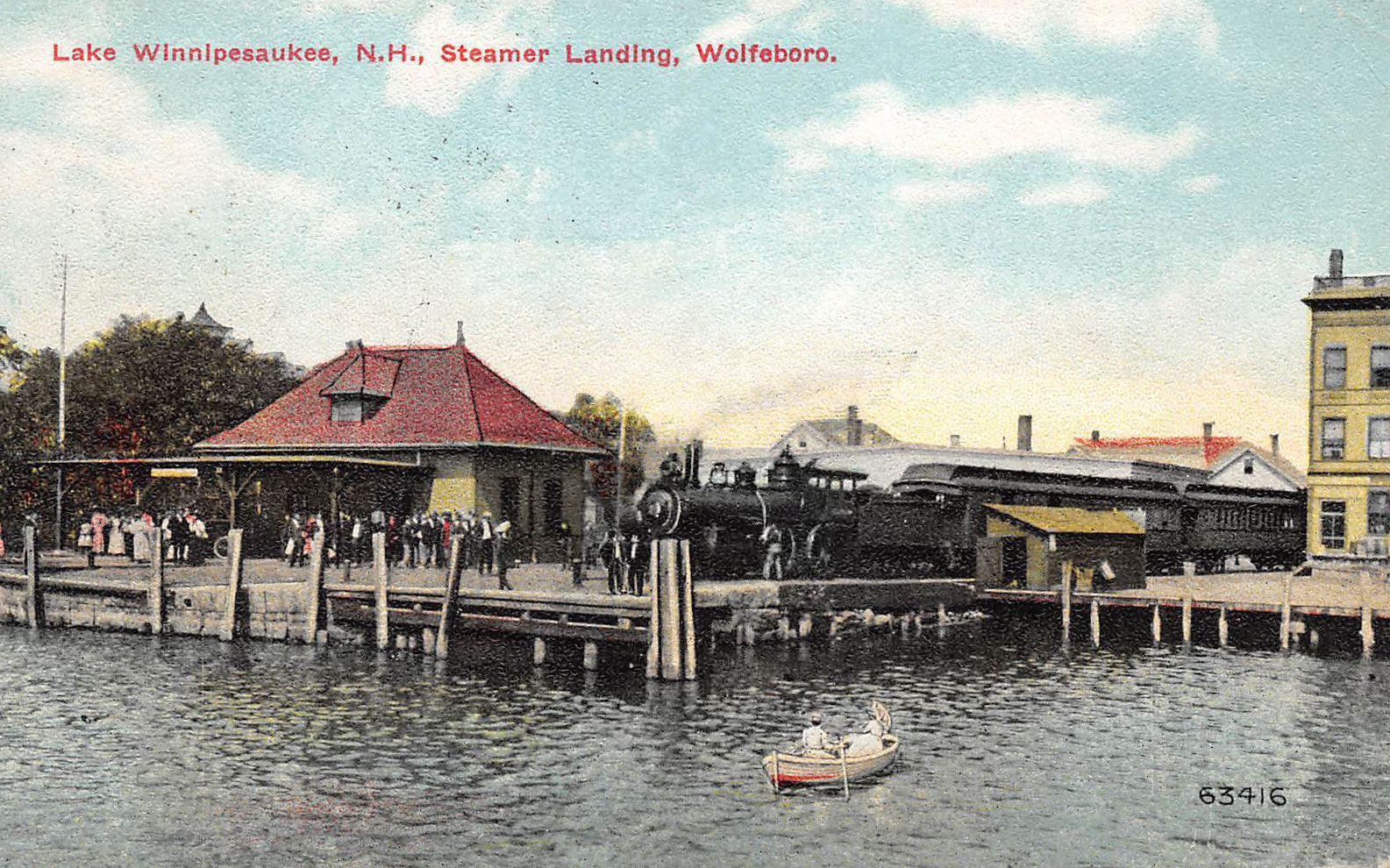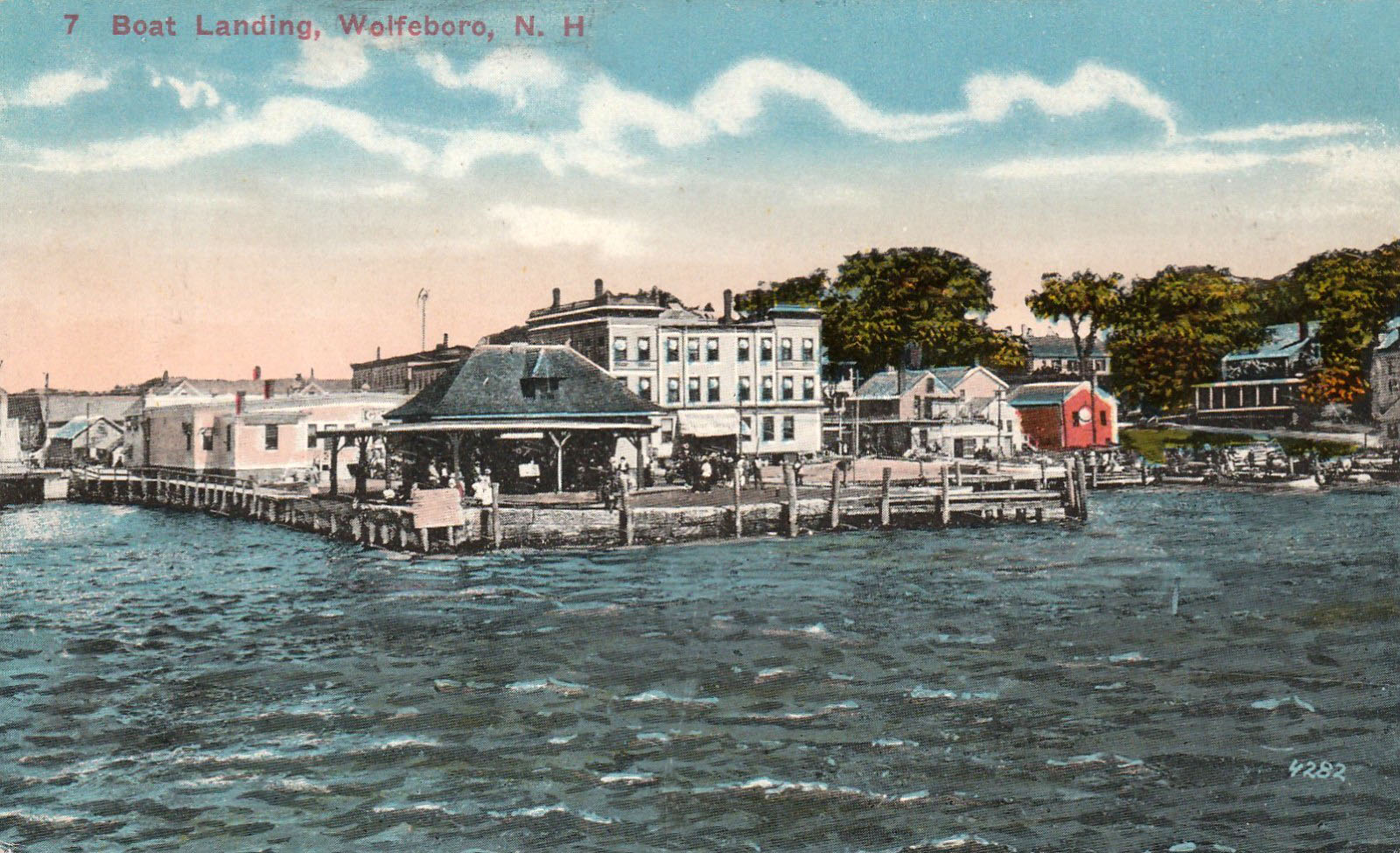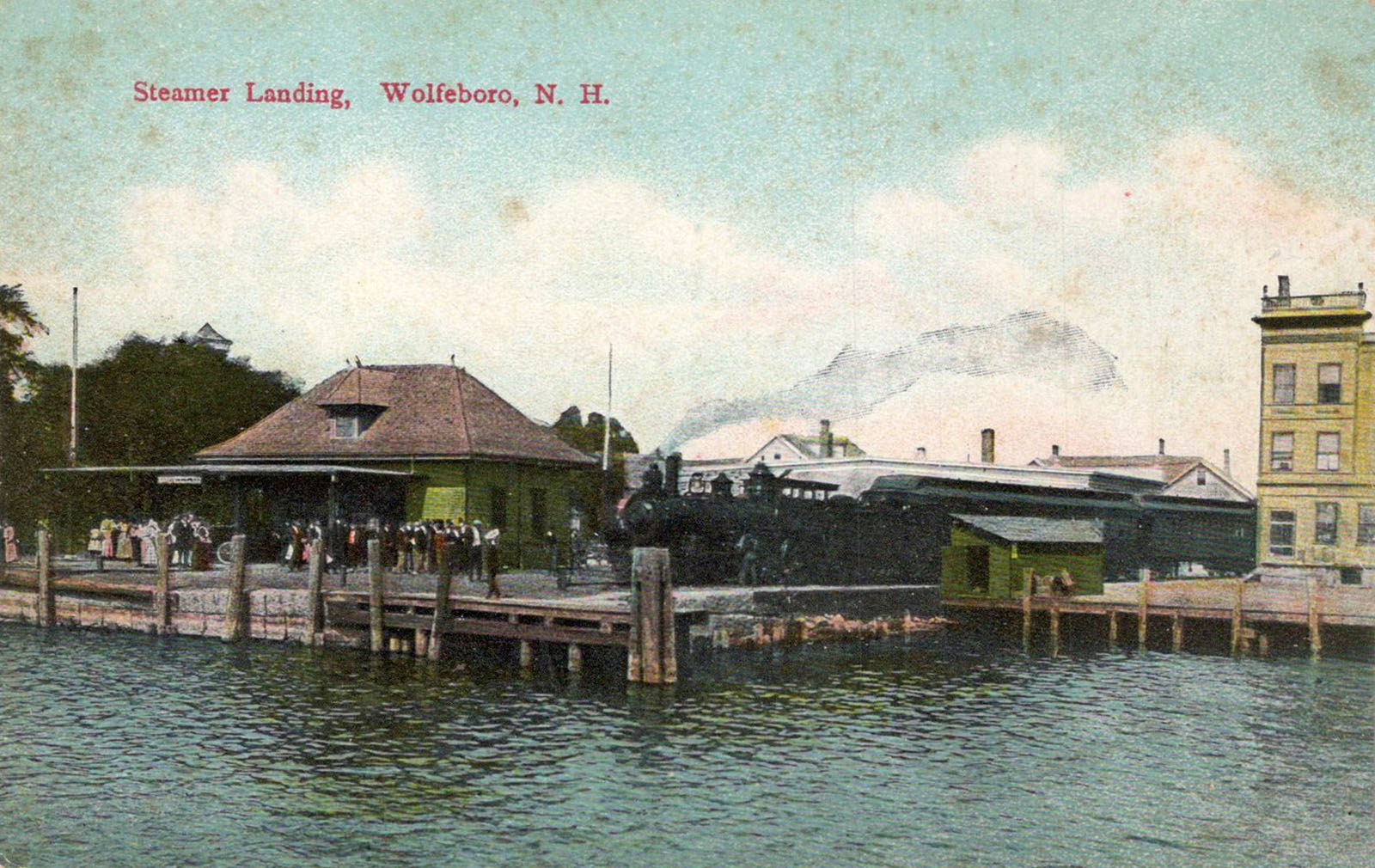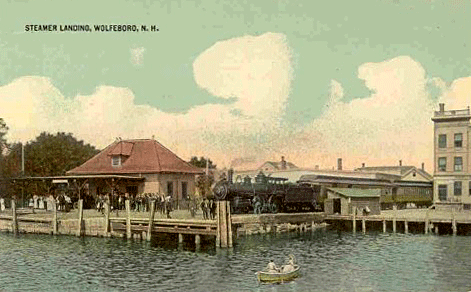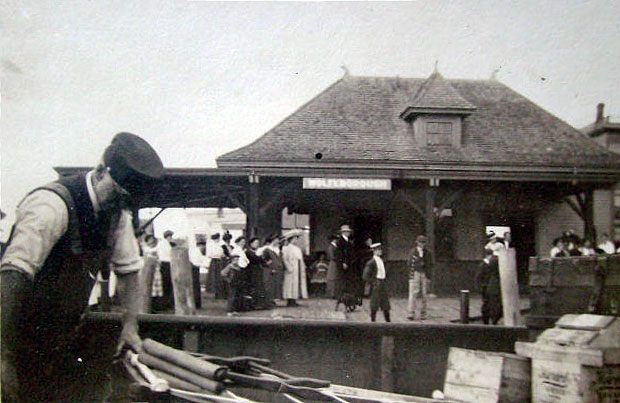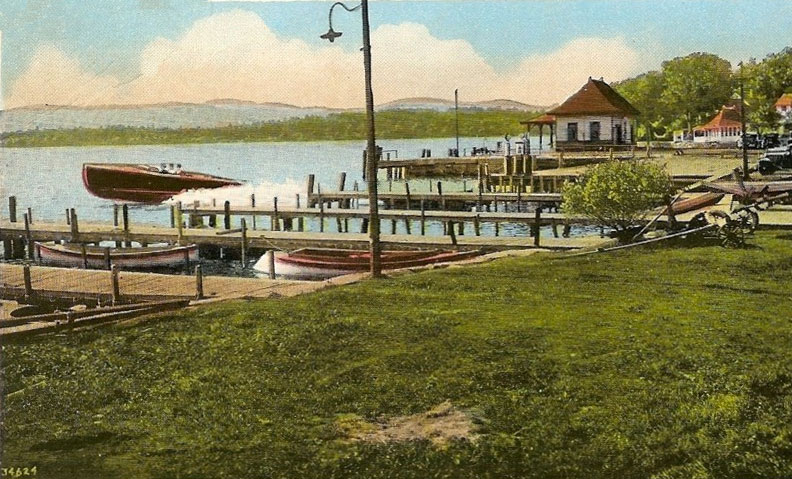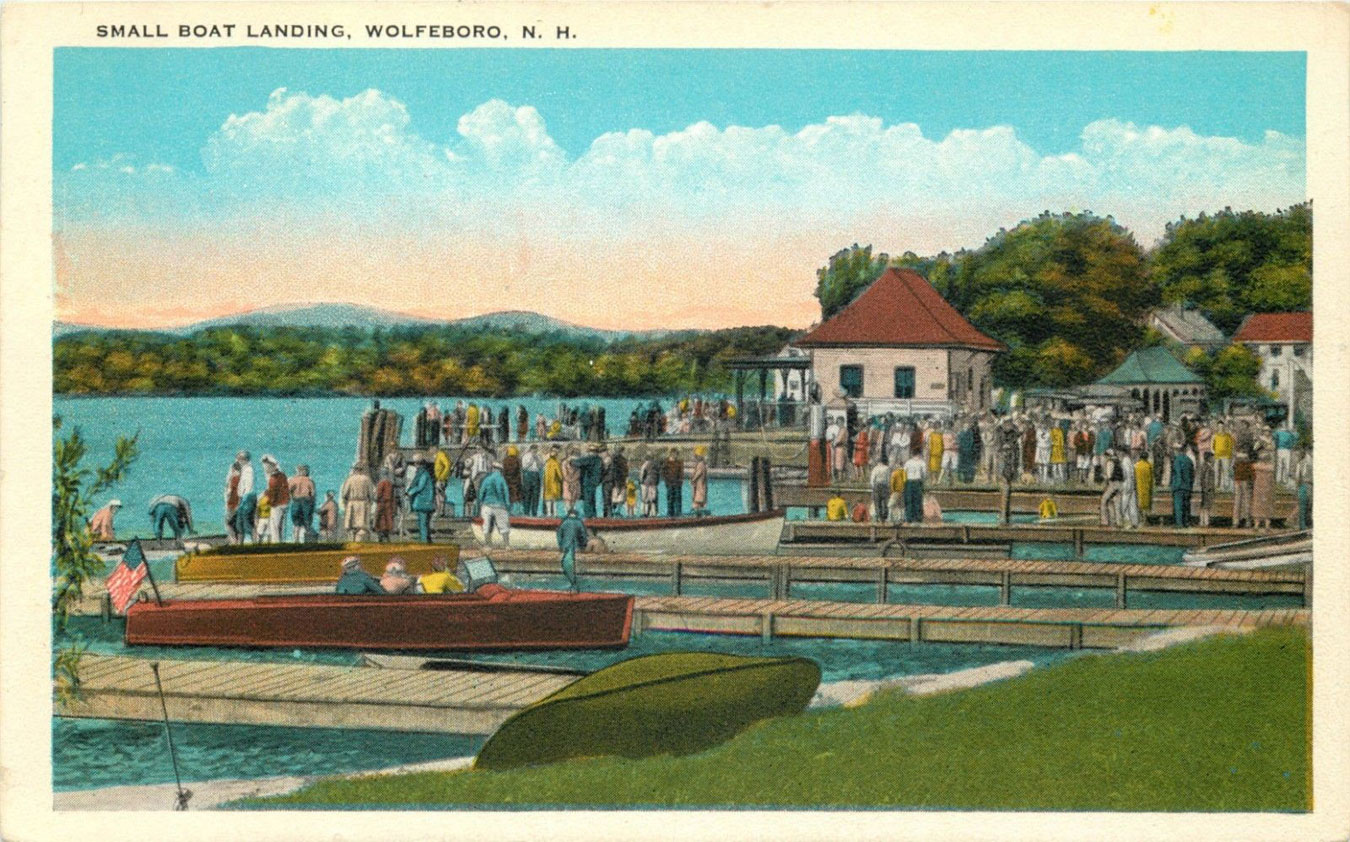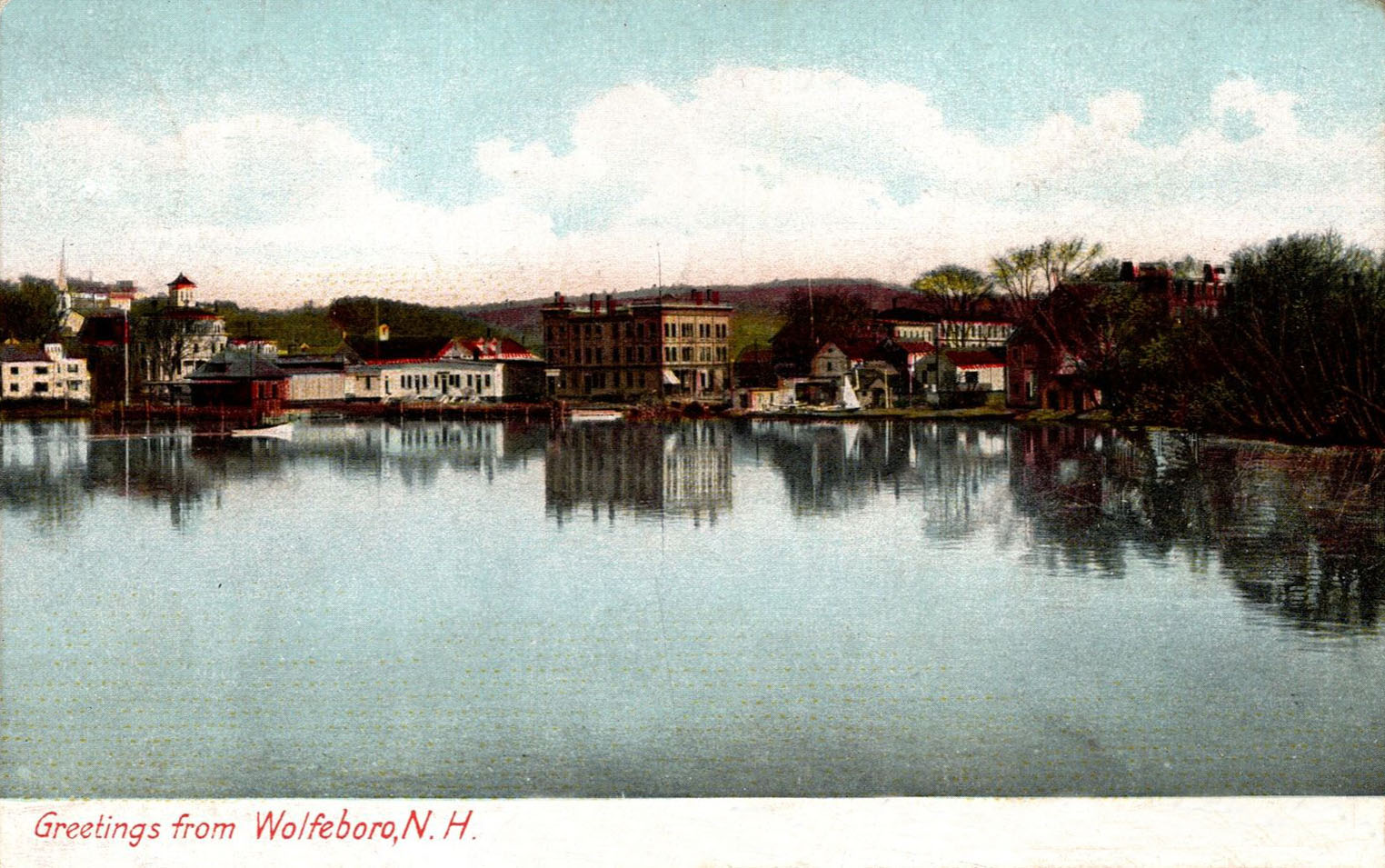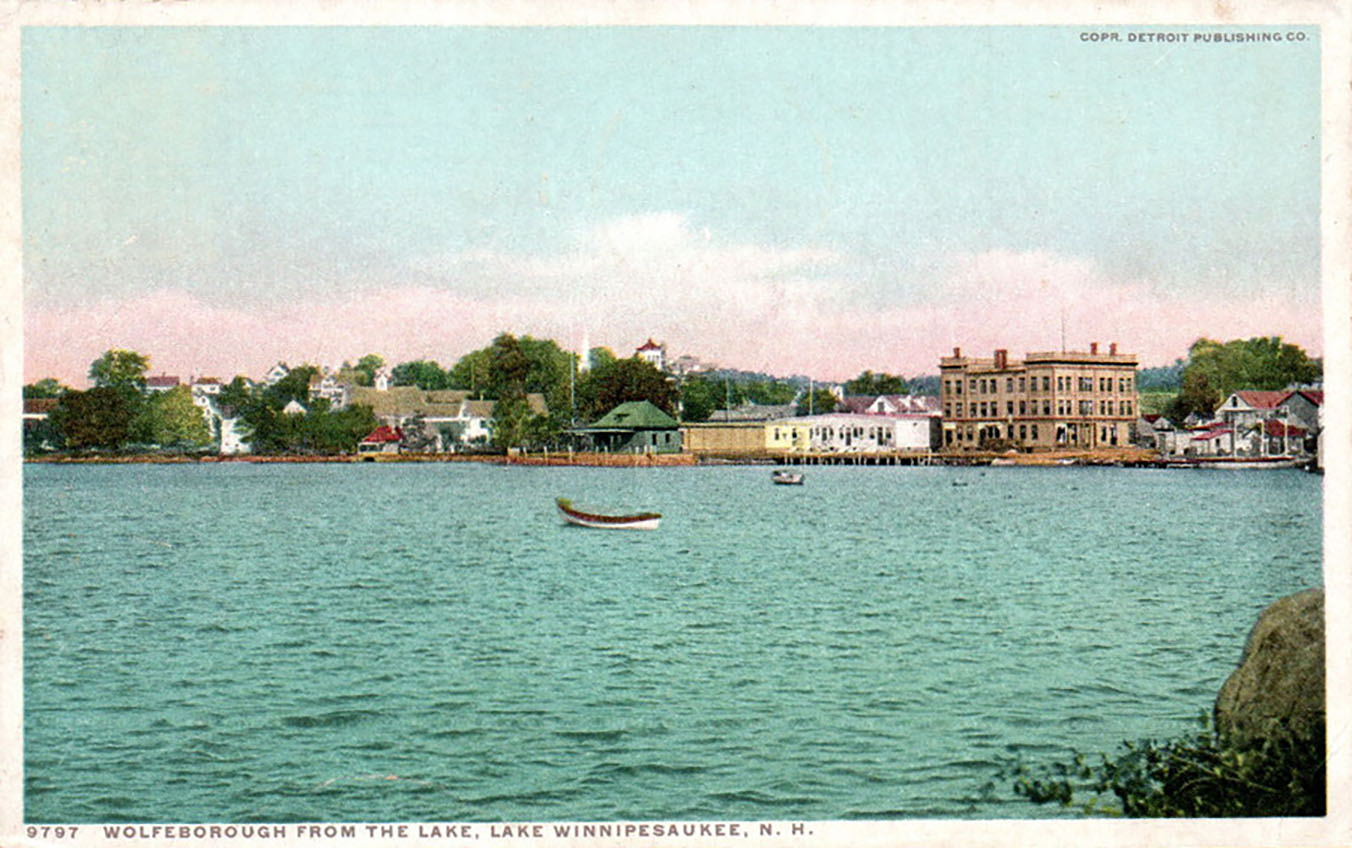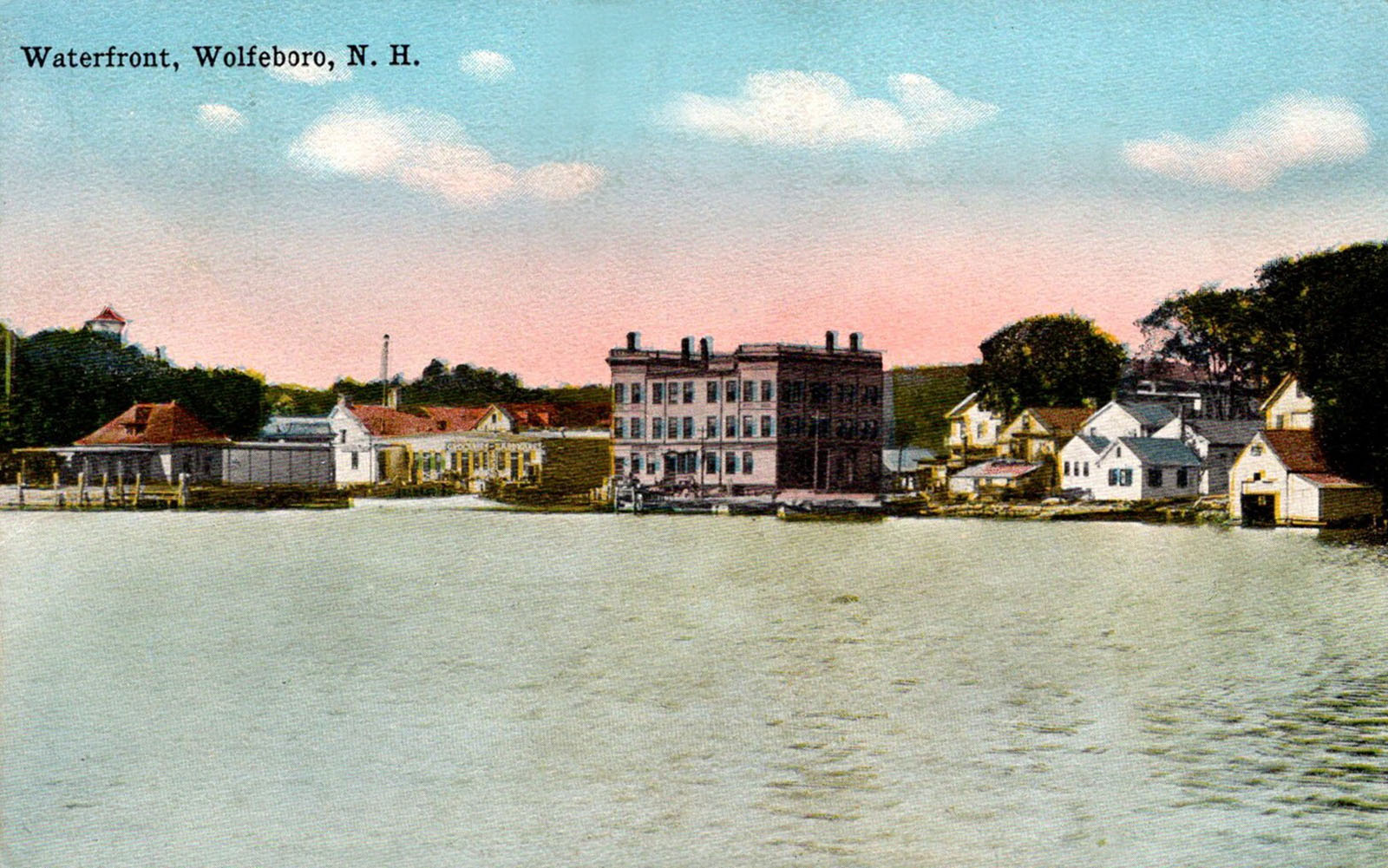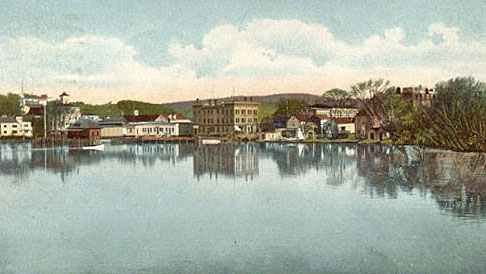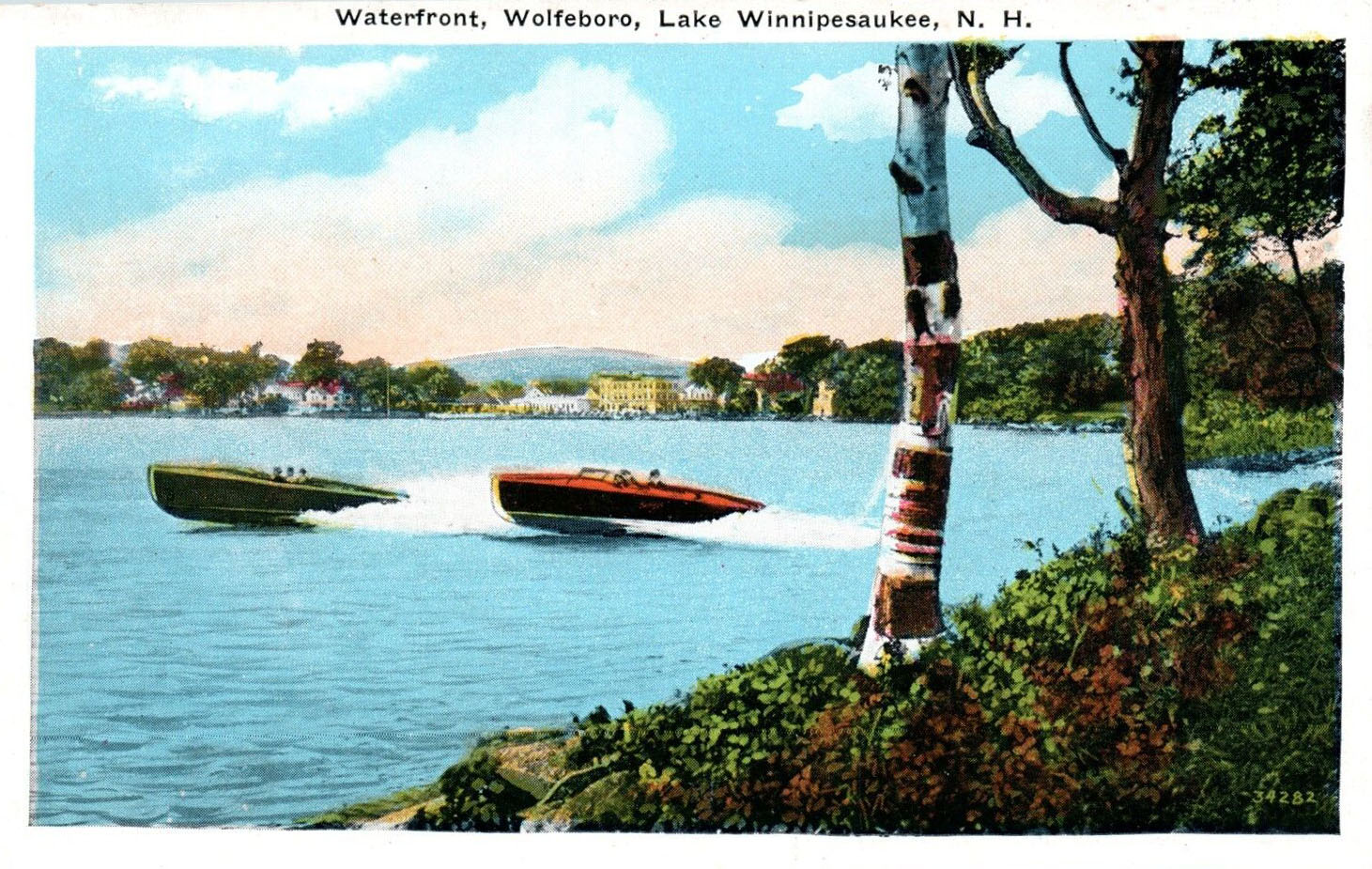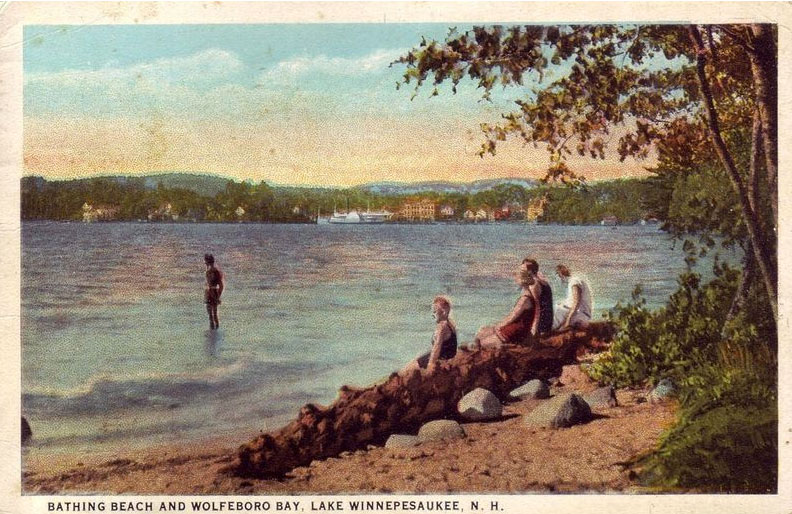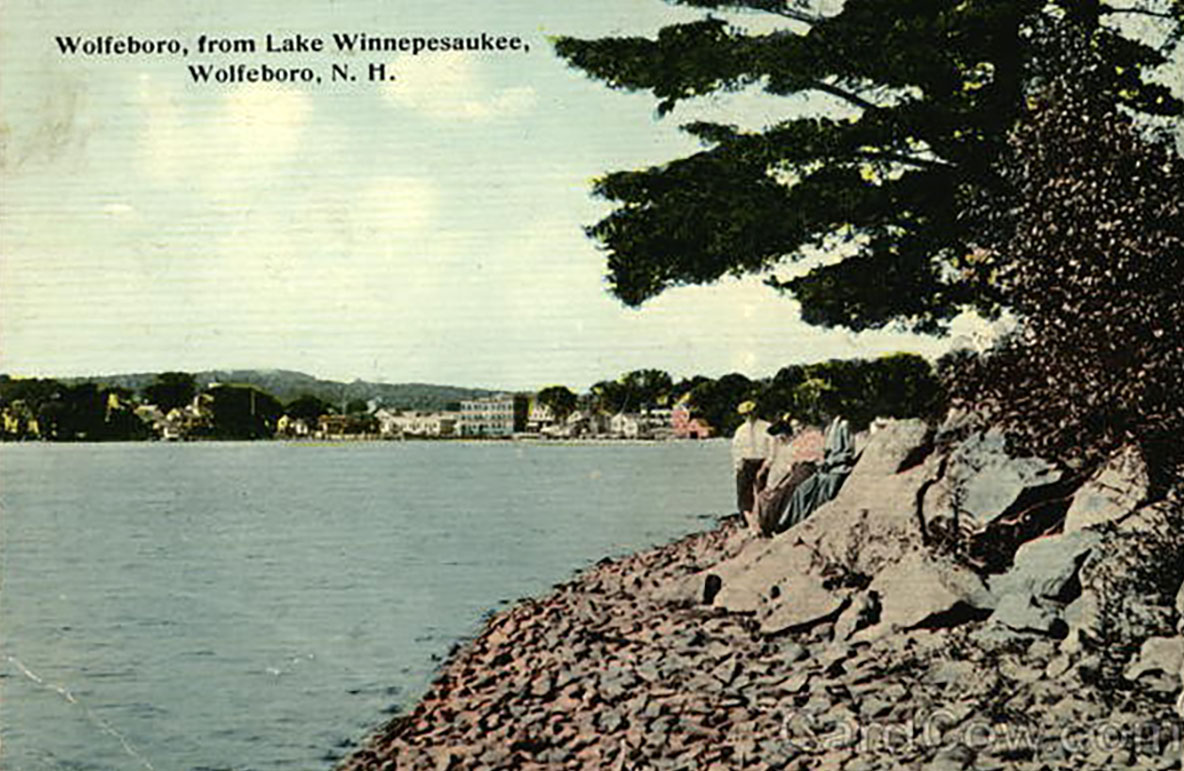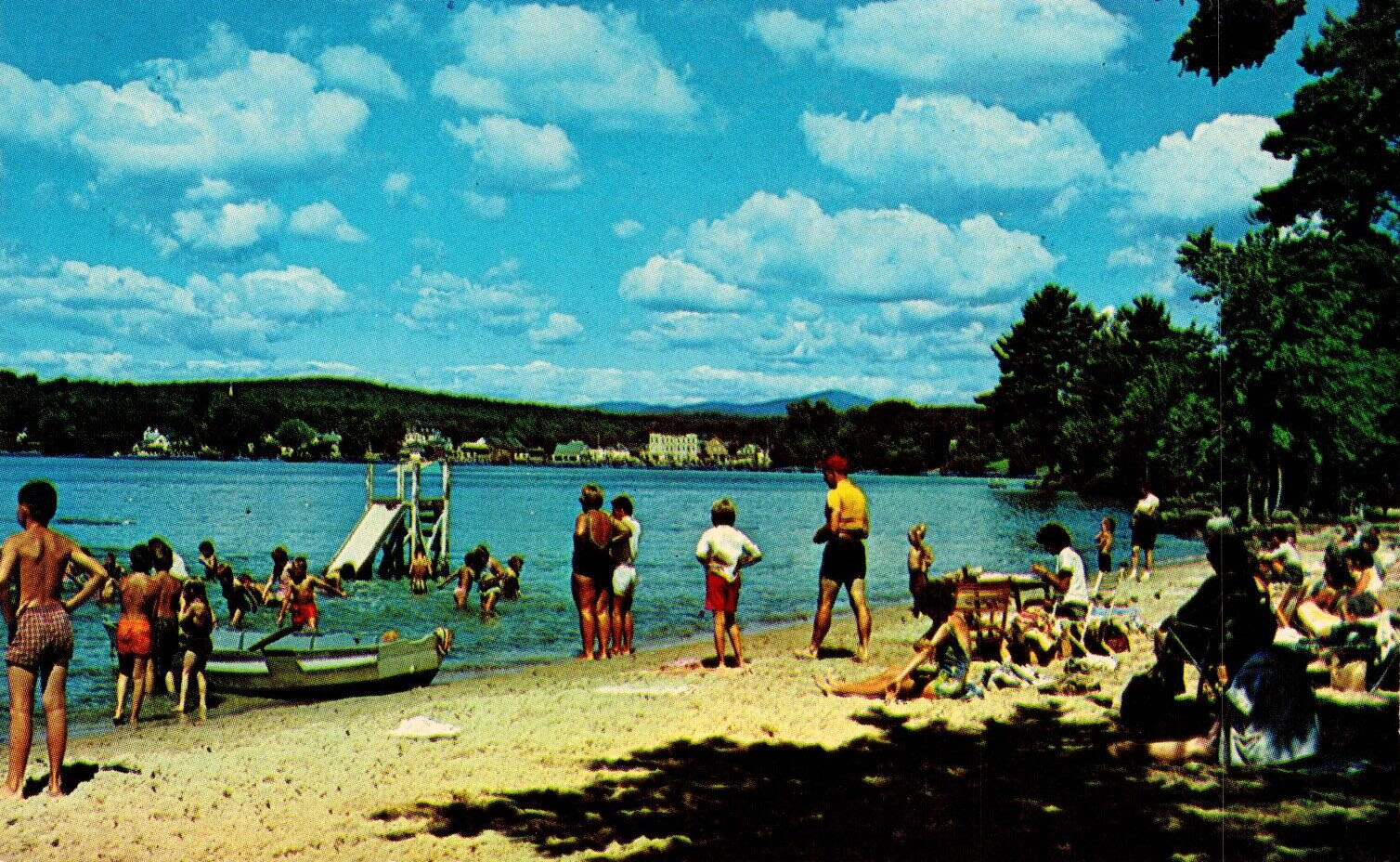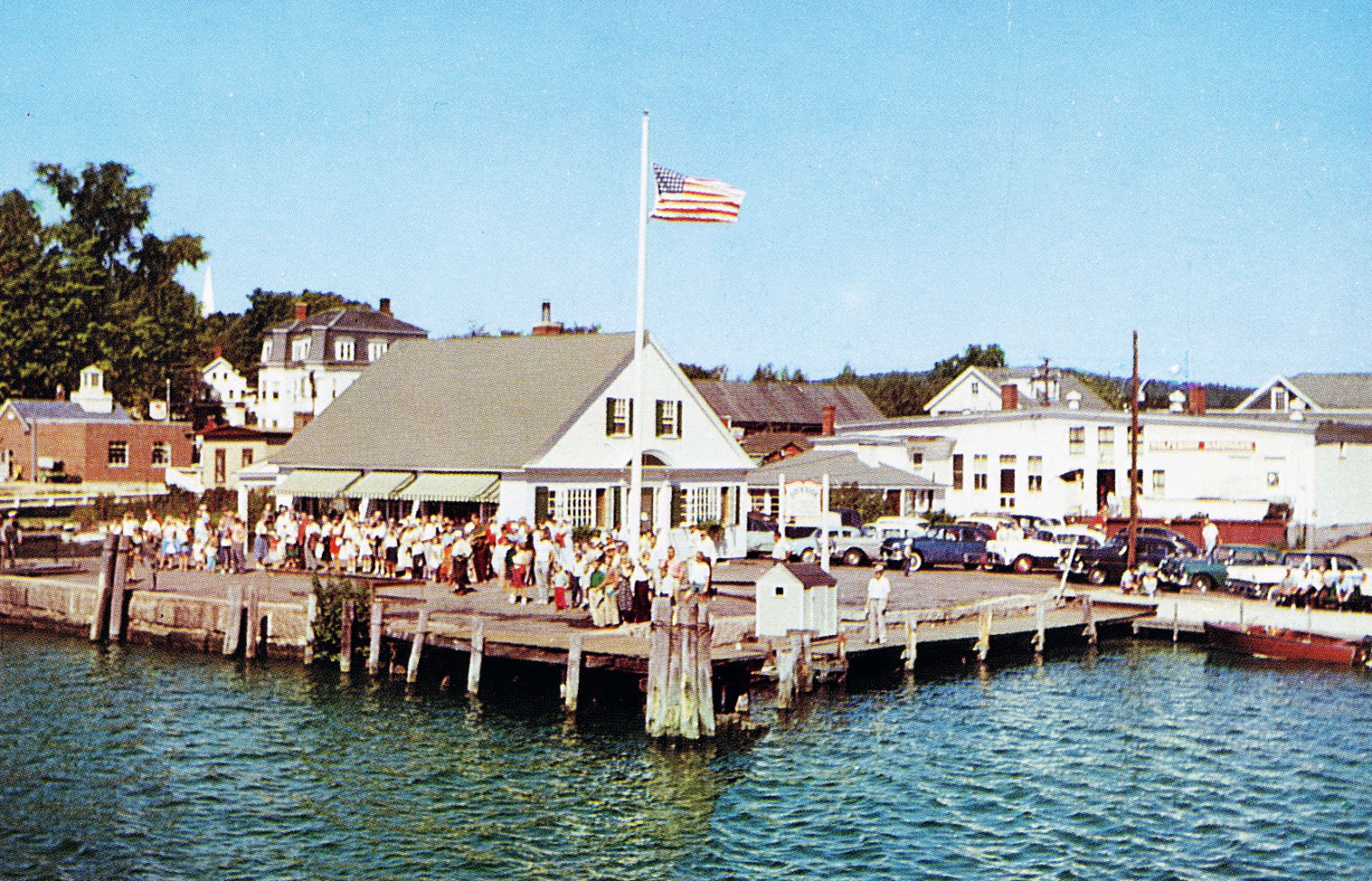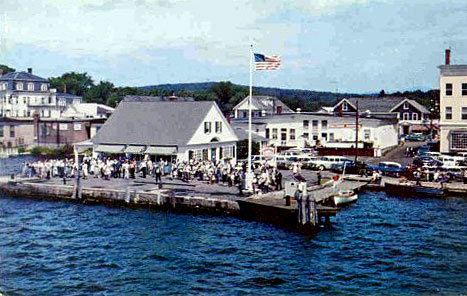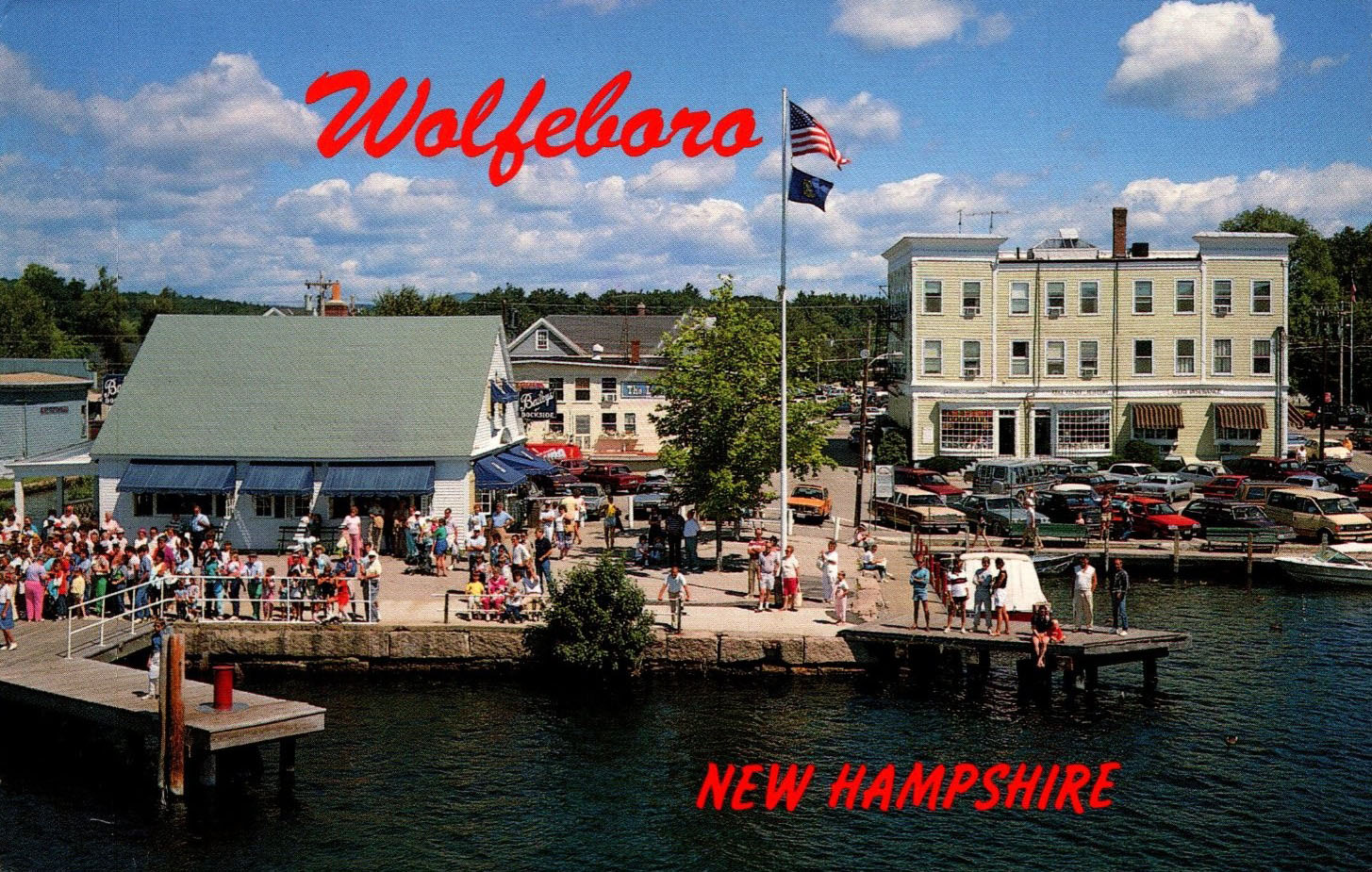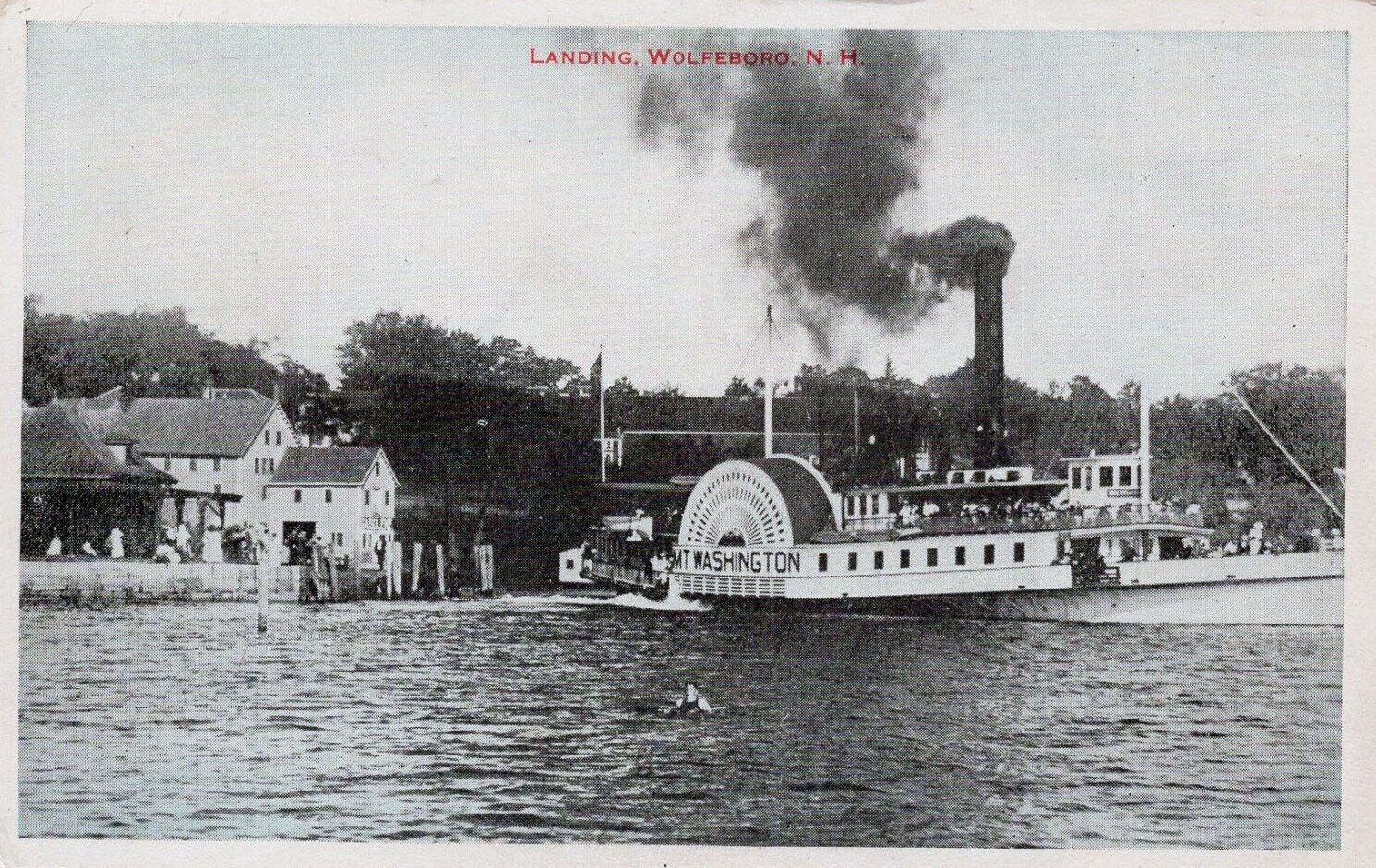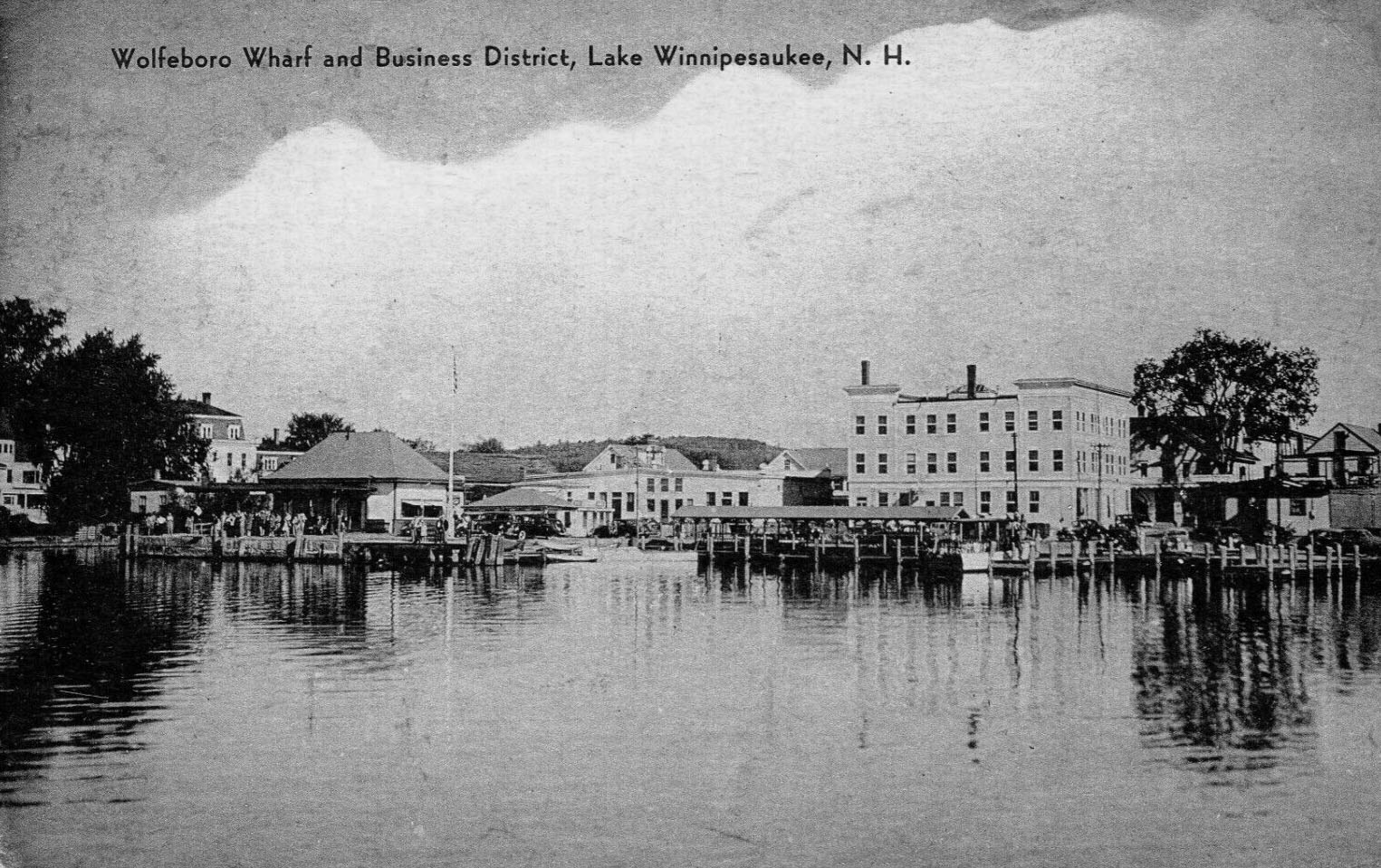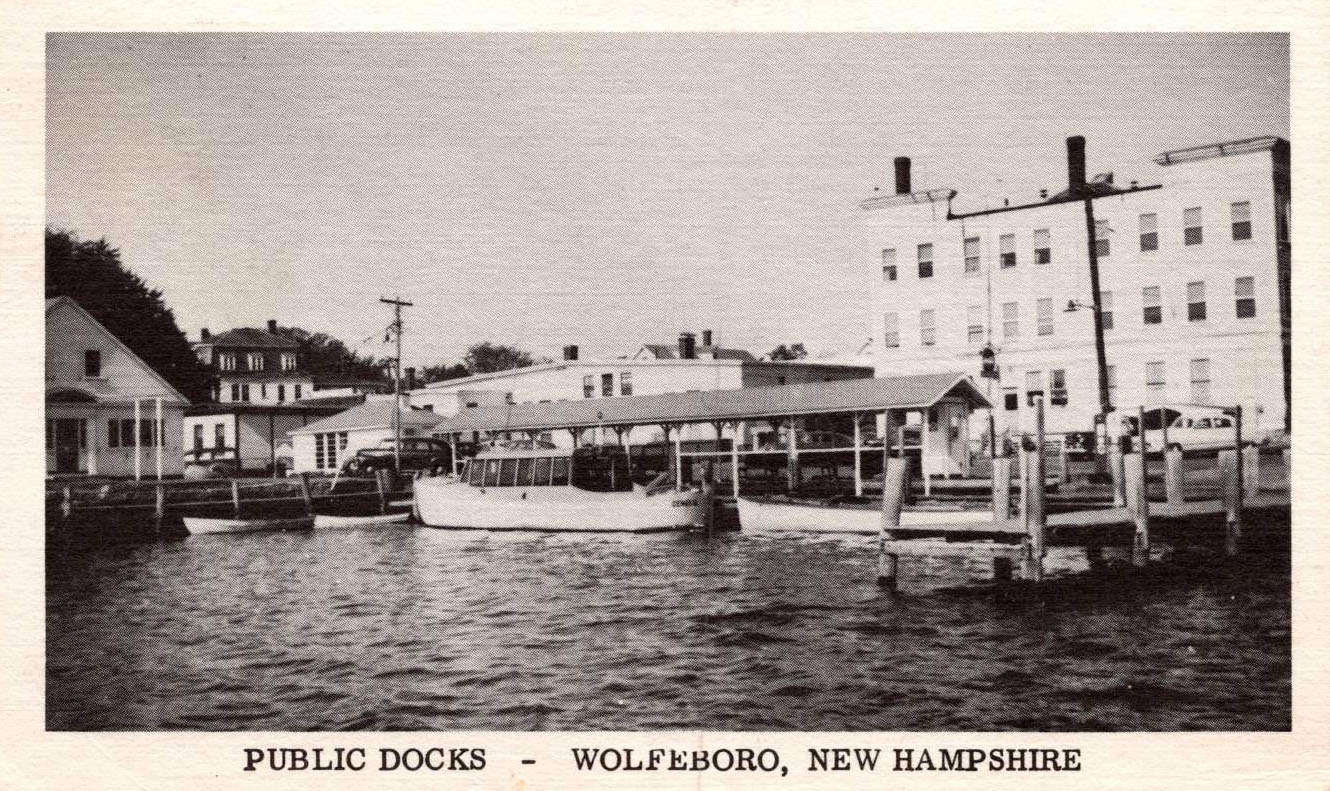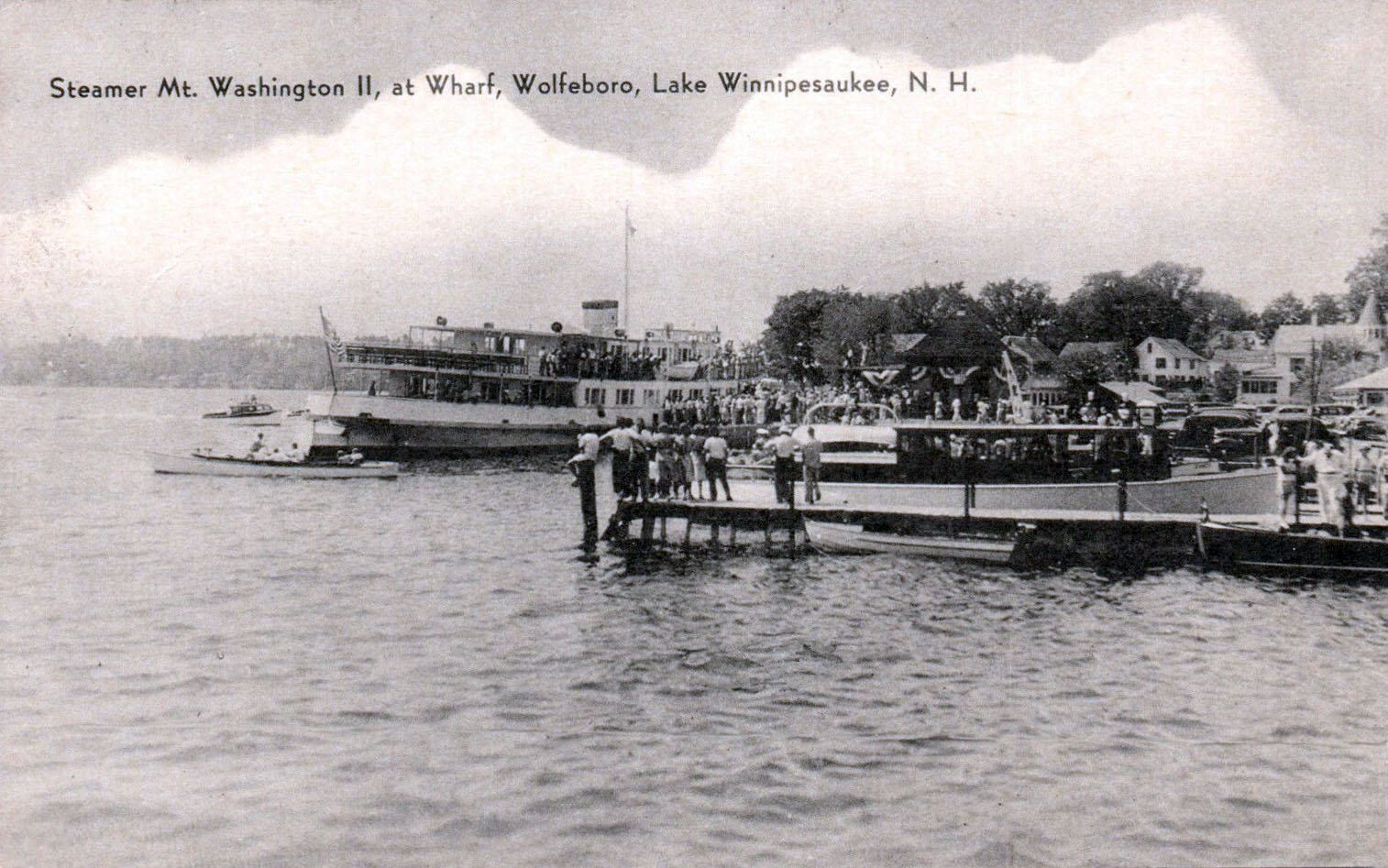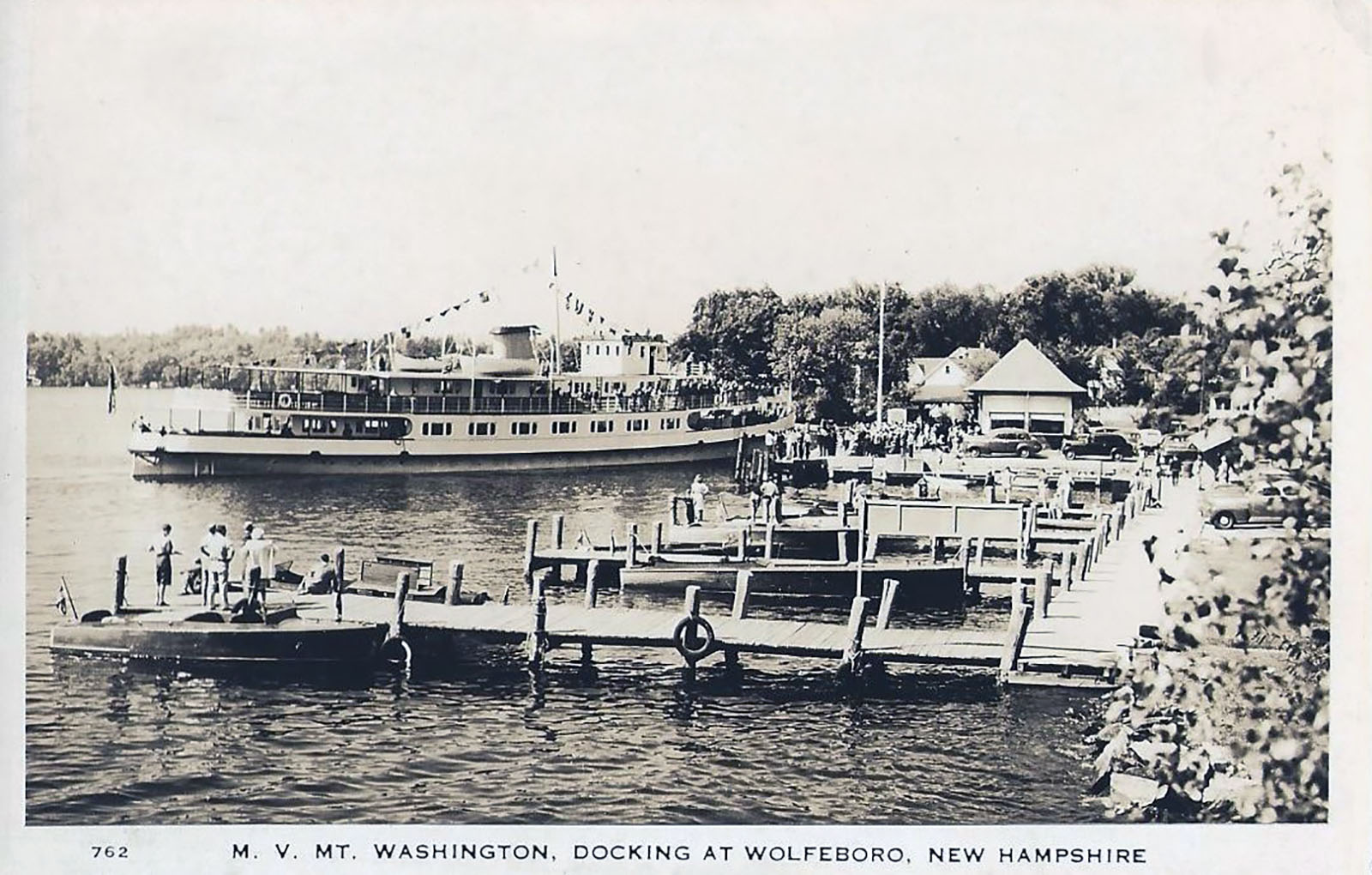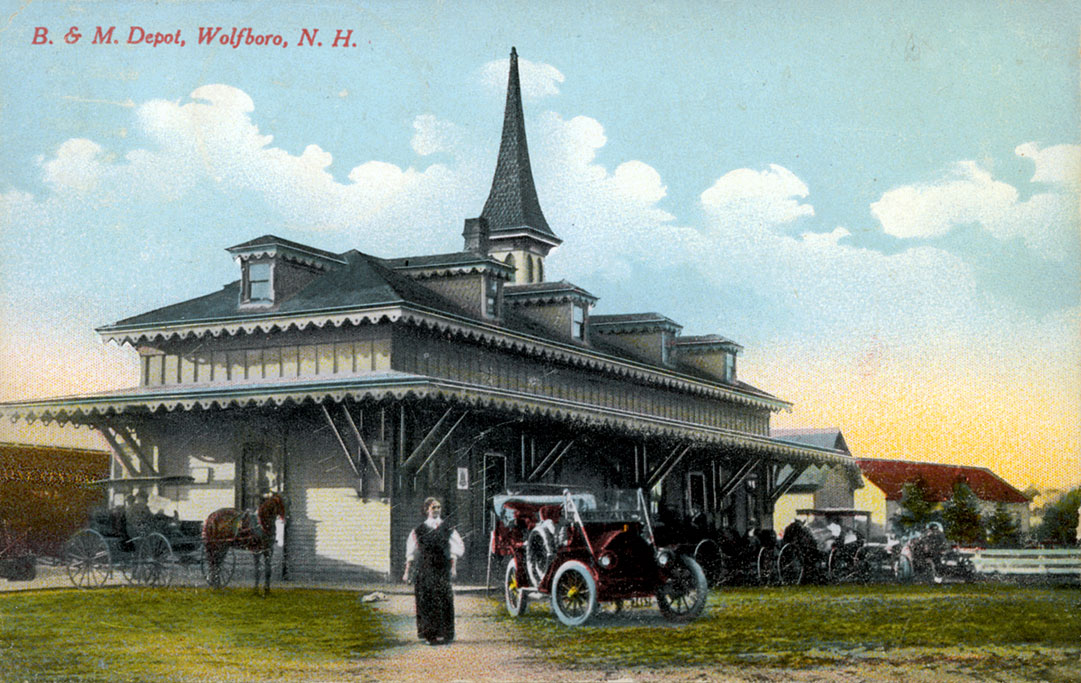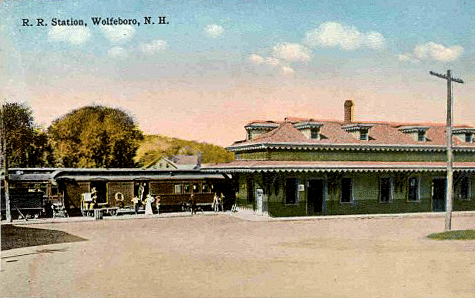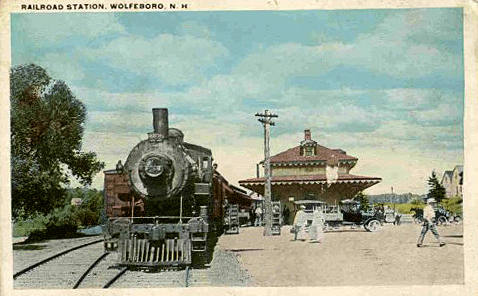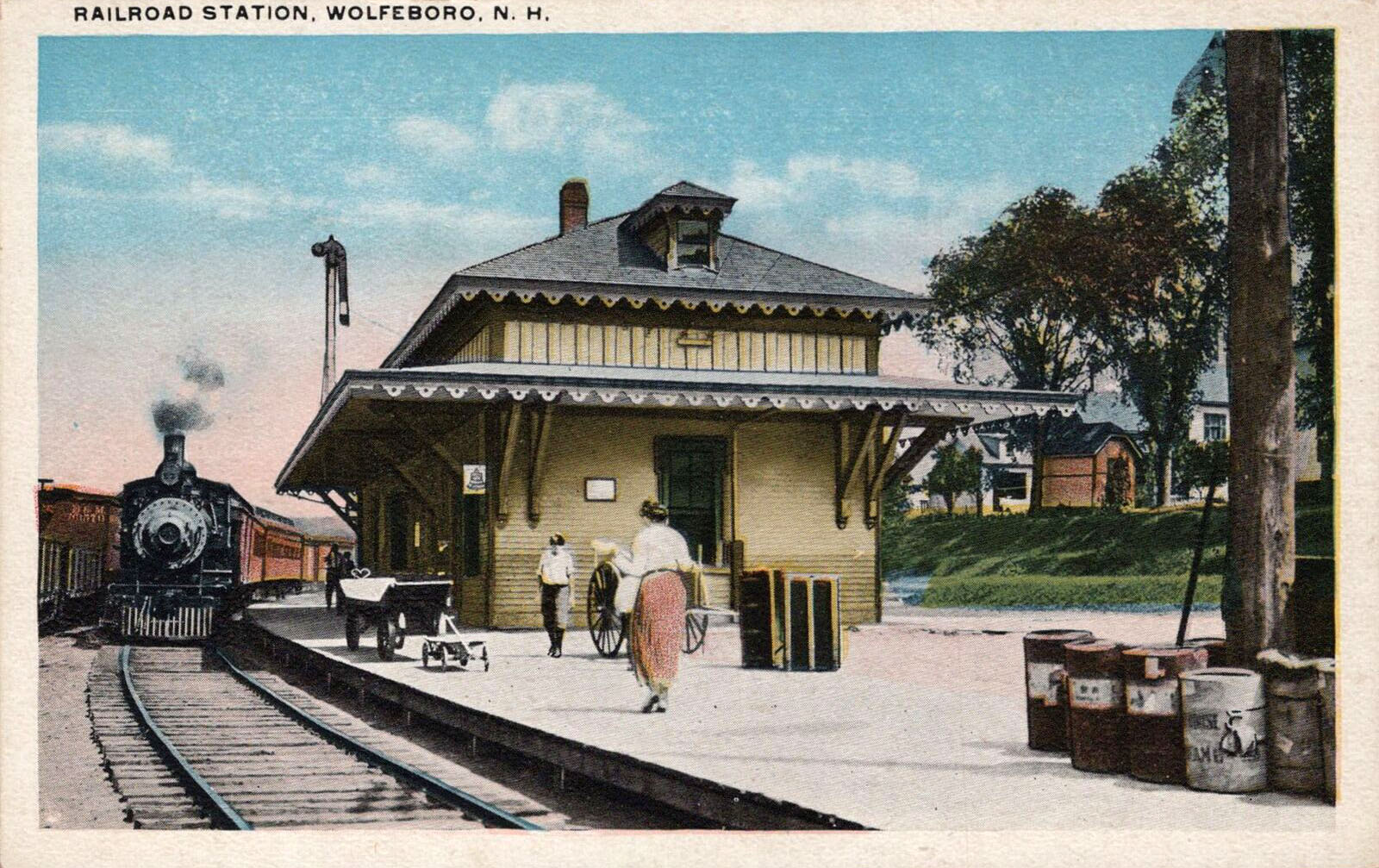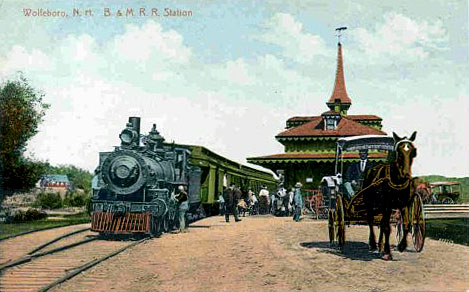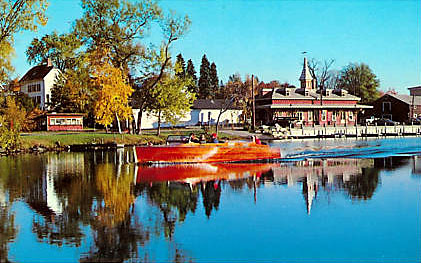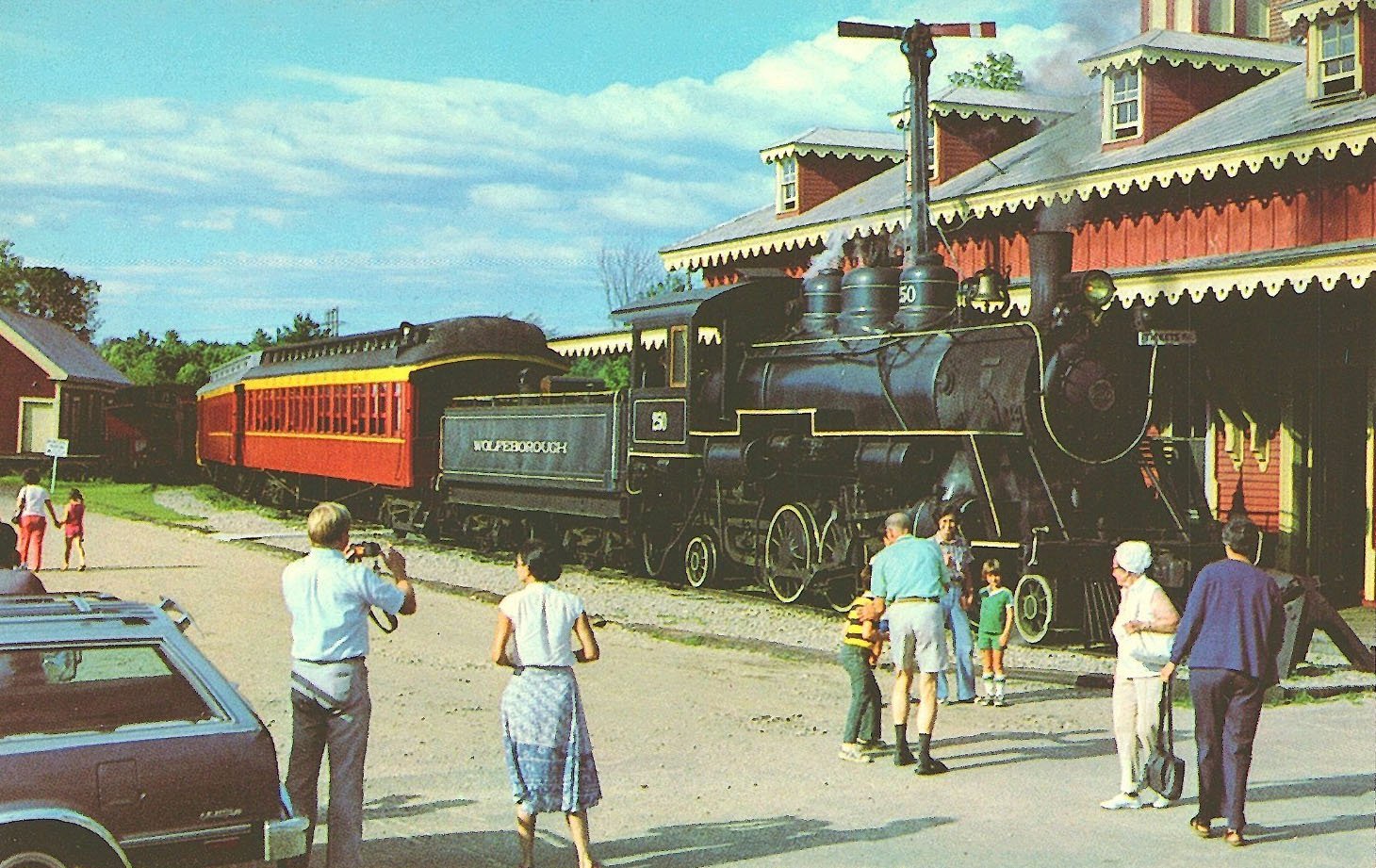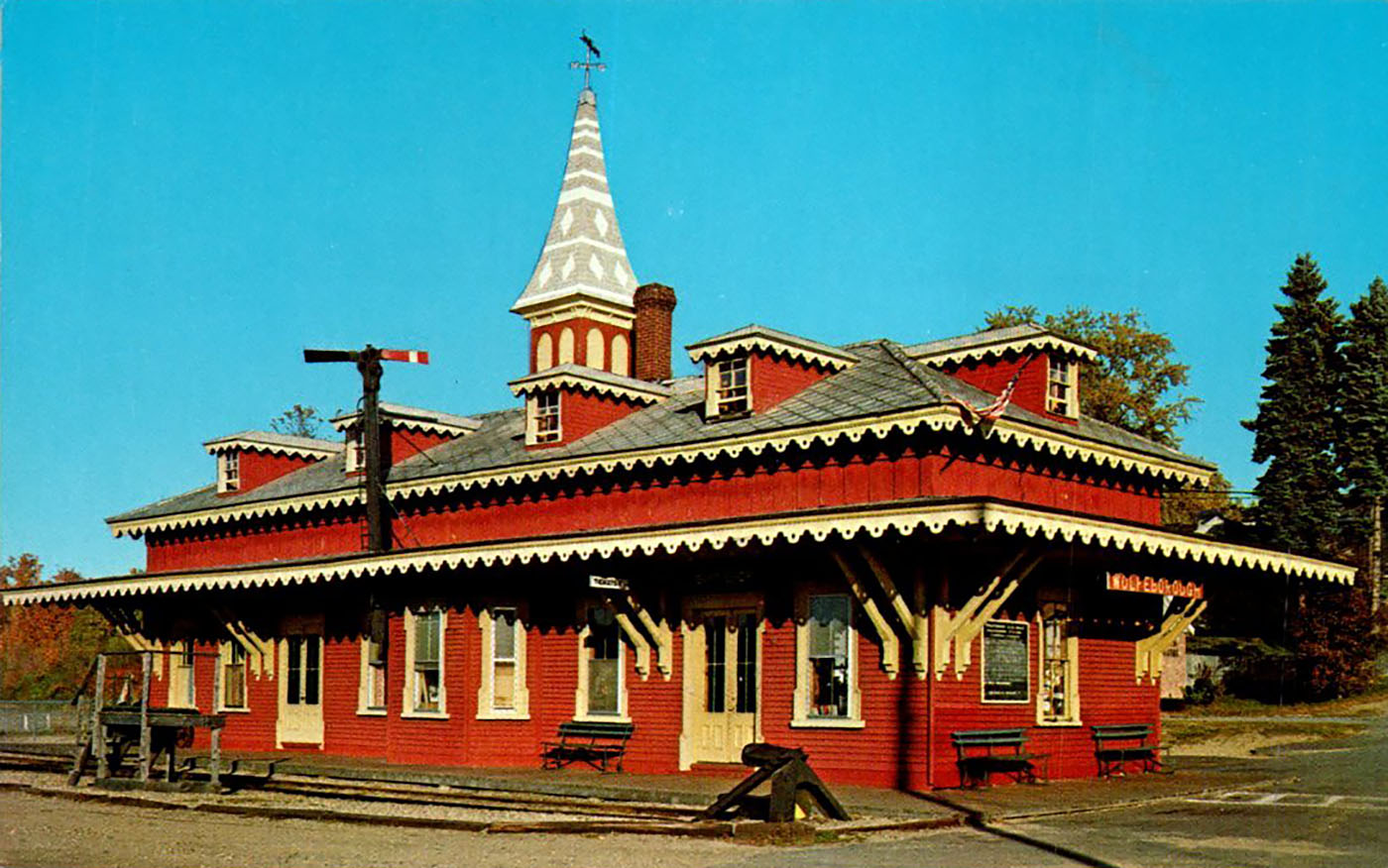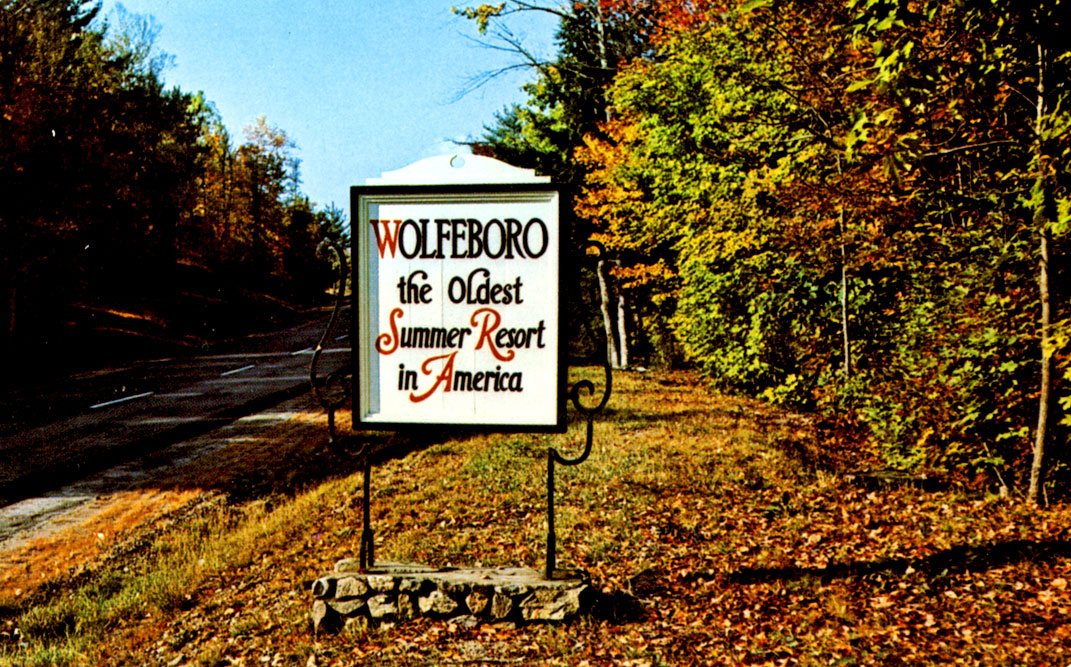Downtown Wolfeboro
HISTORICAL VIEWS LOOKING SOUTH ON MAIN STREET
The third gallery photo shows a sign for Tobey’s Pharmacy, which survived from the early 1900’s into the 1960’s. At the time of the earlier, 1950’s, fourth gallery photo below, the store was temporarily part of the Rexall chain of drug stores. After peaking in 1958 with 11,158 stores, the Rexall franchise gradually faded away over the ensuing decades.
Brewster Memorial Hall
Built in 1890, Brewster Memorial Hall, also known as the Wolfeboro Town Hall, is seen at the top of many of the above views looking South. The building is still the home of Wolfeboro’s municipal offices. The clock tower still functions and features a bell made by Paul Revere which rings out every hour.
Wolfeboro’s nearest neighbor, Alton, has a nearly identical clock tower. Like the tower in Wolfeboro, the building, built in 1894, serves as the town hall, and as in Wolfeboro, the clock continues to function.
HISTORICAL VIEWS LOOKING NORTH ON MAIN STREET
Post Office Square
Wolfeboro’s Post Office Square, circa 1905 to circa 1925. The large, 3 story building at the center was known as the “Peavey Block”.
National Bank Building
Notice in the first photo the street to the right of the National Bank building. The second photo of the Goodwin Block is of the same street, looking toward the waterfront.
Black’s Gift Shop
The second photo is of the antique auto seen in the photo of Black’s on the upper right of the photo collage. The view is looking South on Main Street.
The Wolfeboro Post Office
Built in 1933.
Hotel Elmwood
The Hotel Elmwood (1872 – 1933) stood where the Wolfeboro Post Office is today. It had three earlier names. When the hotel was built in 1872, it was known as the Glendon House. It became the Wolfeboro Hotel in 1895; the Hobbs-Is-Inn in 1906; and then the Hotel Elmwood in 1909.
Wolfeboro Aerial Photos Gallery
These 1960’s close-up aerials of Main Street show the four principal buildings at the center of town, seen throughout the above photos: the Peavey Block, Tobey’s Pharmacy, Black’s Gift Shop, and the Wolfeboro National Bank. Here one can also still see the tracks of the former Wolfeboro Railroad entering town along the east side of Back Bay and ending at Wolfeboro Station. Beginning with their extension in 1880 until their removal in the mid-1940’s, the railroad tracks had continued past the Wolfeboro Station, passing between the four buildings mentioned while crossing Main Street, and then reaching the Lake Station at the wharf, where one could board the old Mount Washington steamer.
The first station on the wharf was a large building that served as a freight depot and a waiting room for passengers of both the Lady of the Lake and Mount Washington steamers. The building also featured offices and many retail shops, including a pool hall, a saloon, a laundry, a dance hall, and a roller skating rink. On May 28, 1899, the building burned, in what was one of the most devastating fires in Wolfeboro history. The second station on the wharf, the much smaller Lake Station, was built in 1903, and was mainly just a freight depot. After regular passenger service to the wharf ended in June 1942, the Lake Station was torn down and replaced by a restaurant building.
The Wolfeboro Railroad began operations on August 19, 1872. Operations lasted over a century, before finally ending in October of 1985. The 12-mile-long line began in Sanbornville, where it branched off from the main B&M railroad line to Conway. Click here for a gallery of images and here for a history of the Wolfeboro Railroad.
Aerial photos of downtown Wolfeboro in the late 1930’s. Notice the old Mount Washington steamer docked at the wharf in the first two photos.
A detail from an 1890 map of Wolfeborough resembles an aerial photo. Depicted in the map are two steamships – the Lady of the Lake at the dock, while the Mount Washington approaches from the bay. The Glendon House is numbered 13. The Town Hall is number 2. The huge factory building, numbers 24 and 25, housed two different shoe companies.
Main Street Bridge
The bridge that separates Lake Winnipesaukee from Wolfeboro’s Back Bay, and that also marks the boundary between North Main Street and South Main Street.
Wolfeboro Landing
Postcards of Wolfeboro Landing from the steamer era to the modern era.
Wolfeboro Station
Wolfeboro Sign
The famous Wolfeboro sign – “The Oldest Summer Resort in America”










